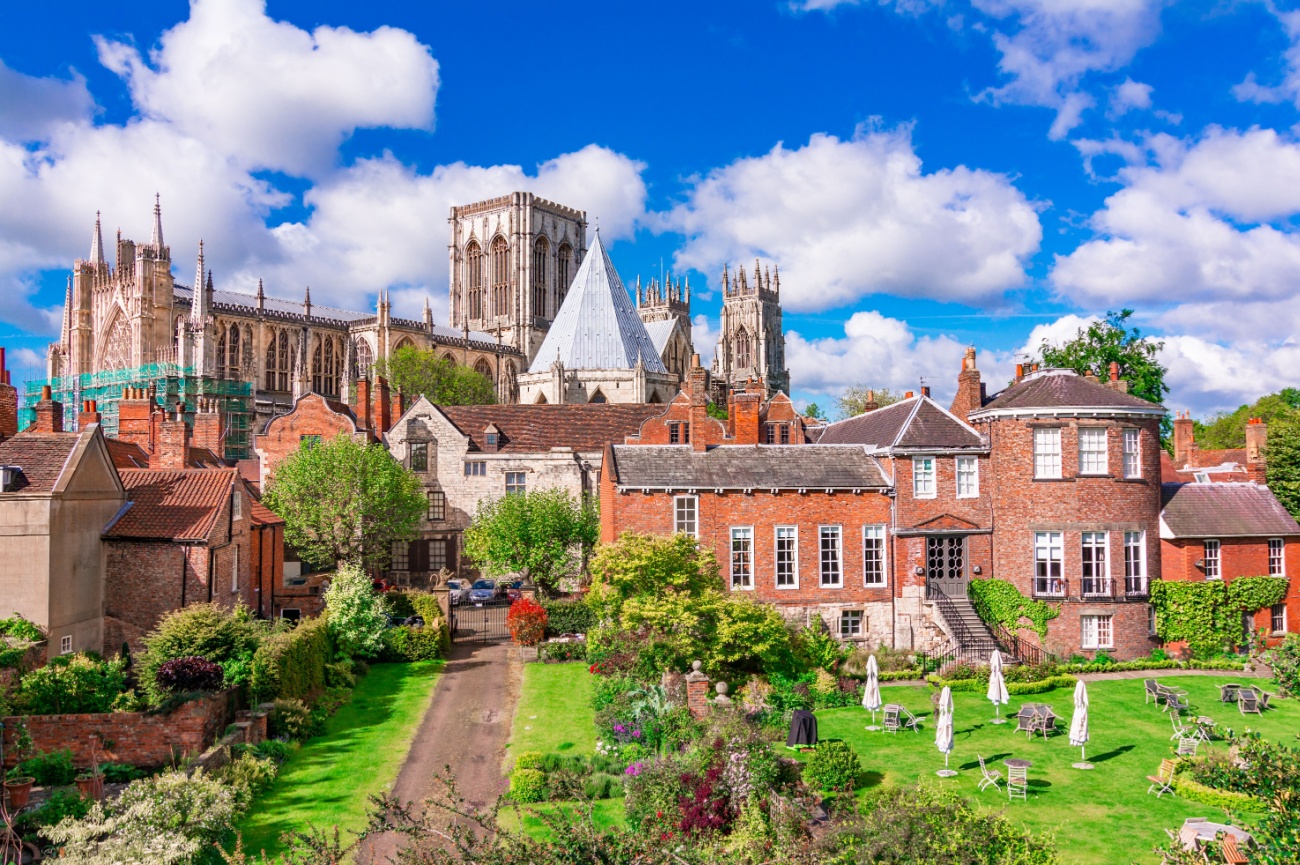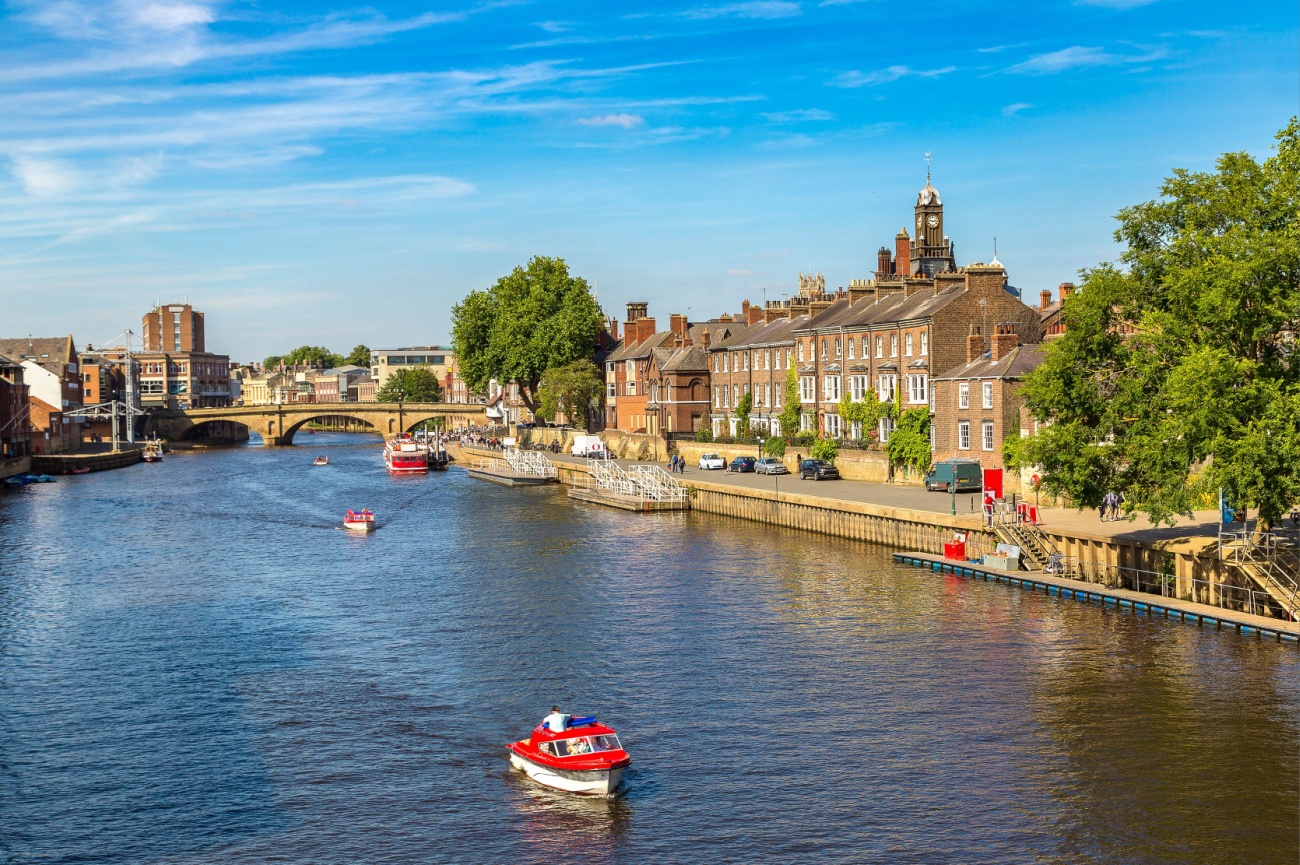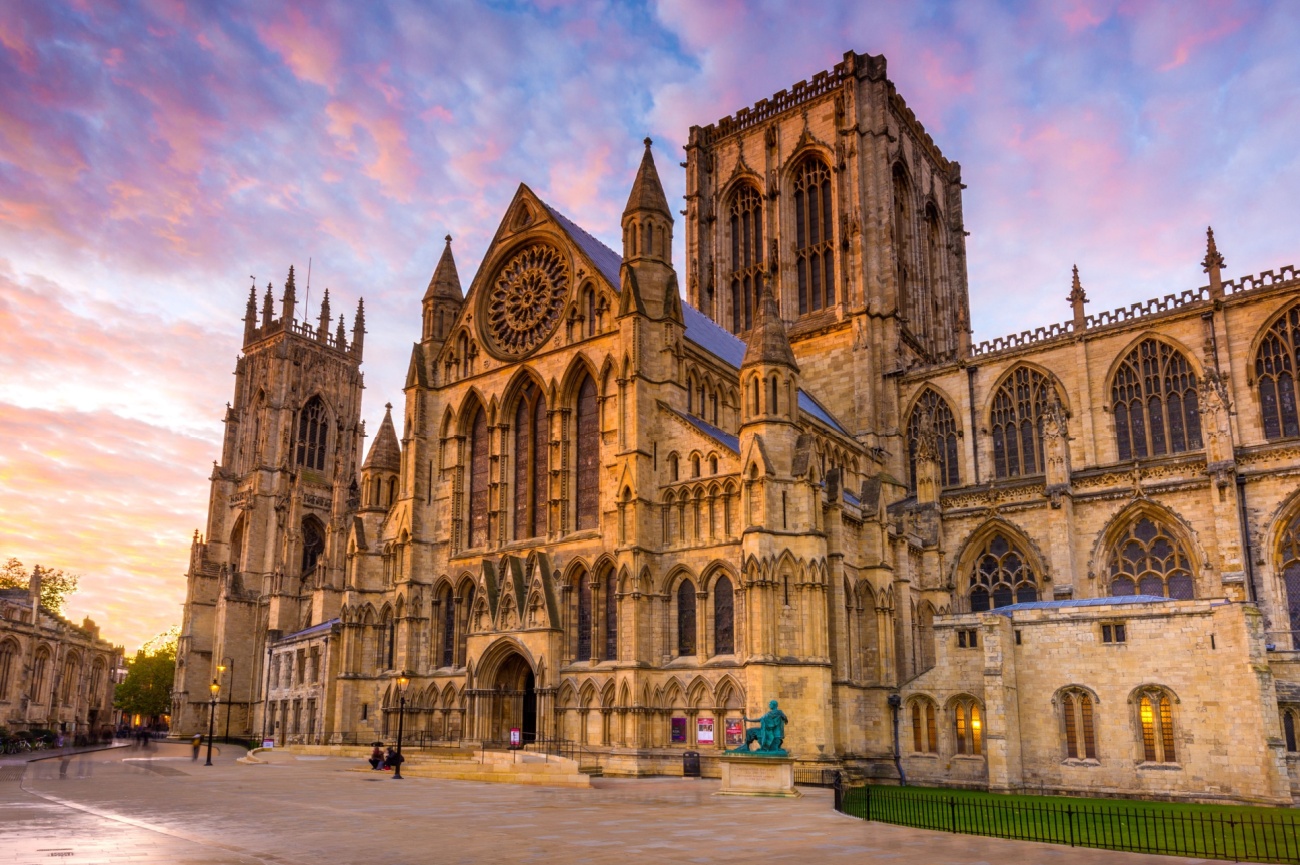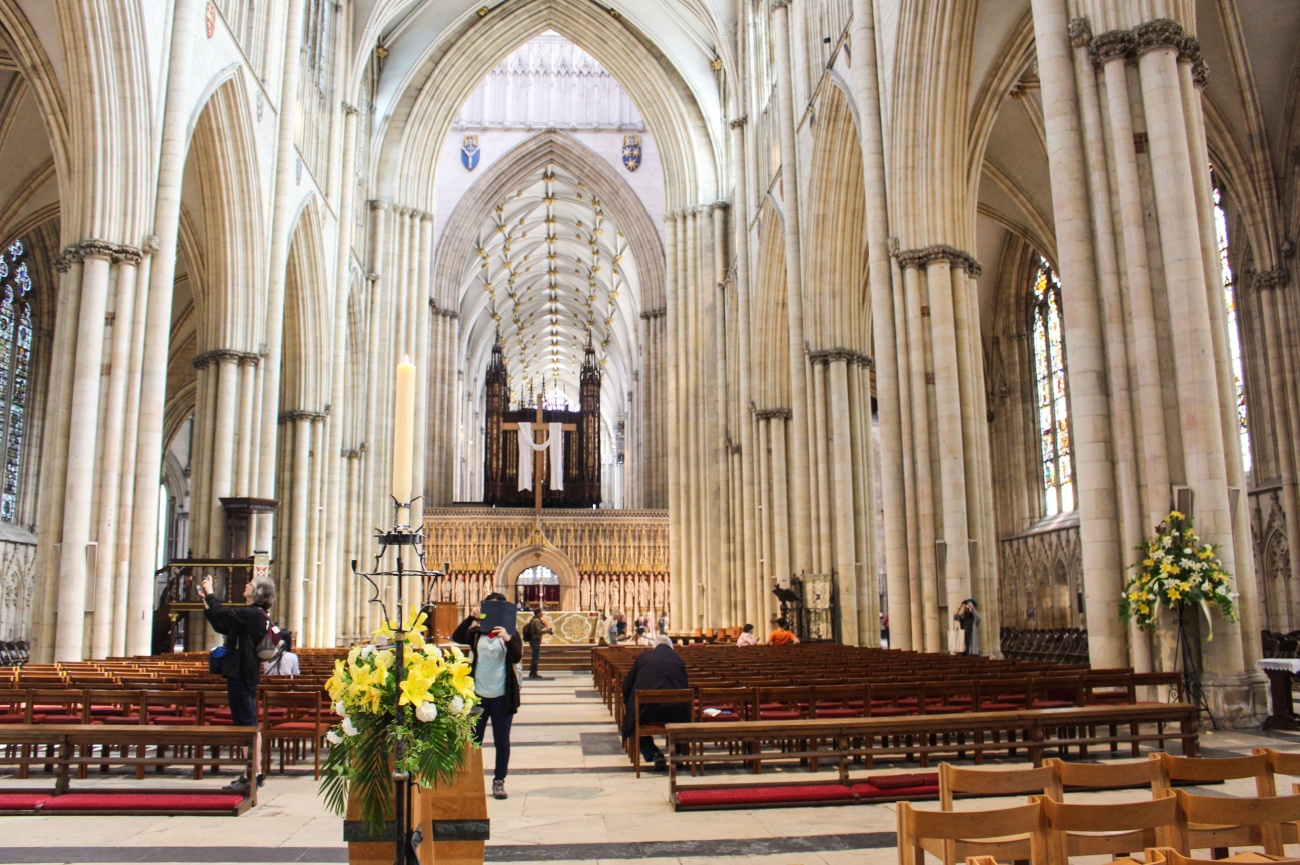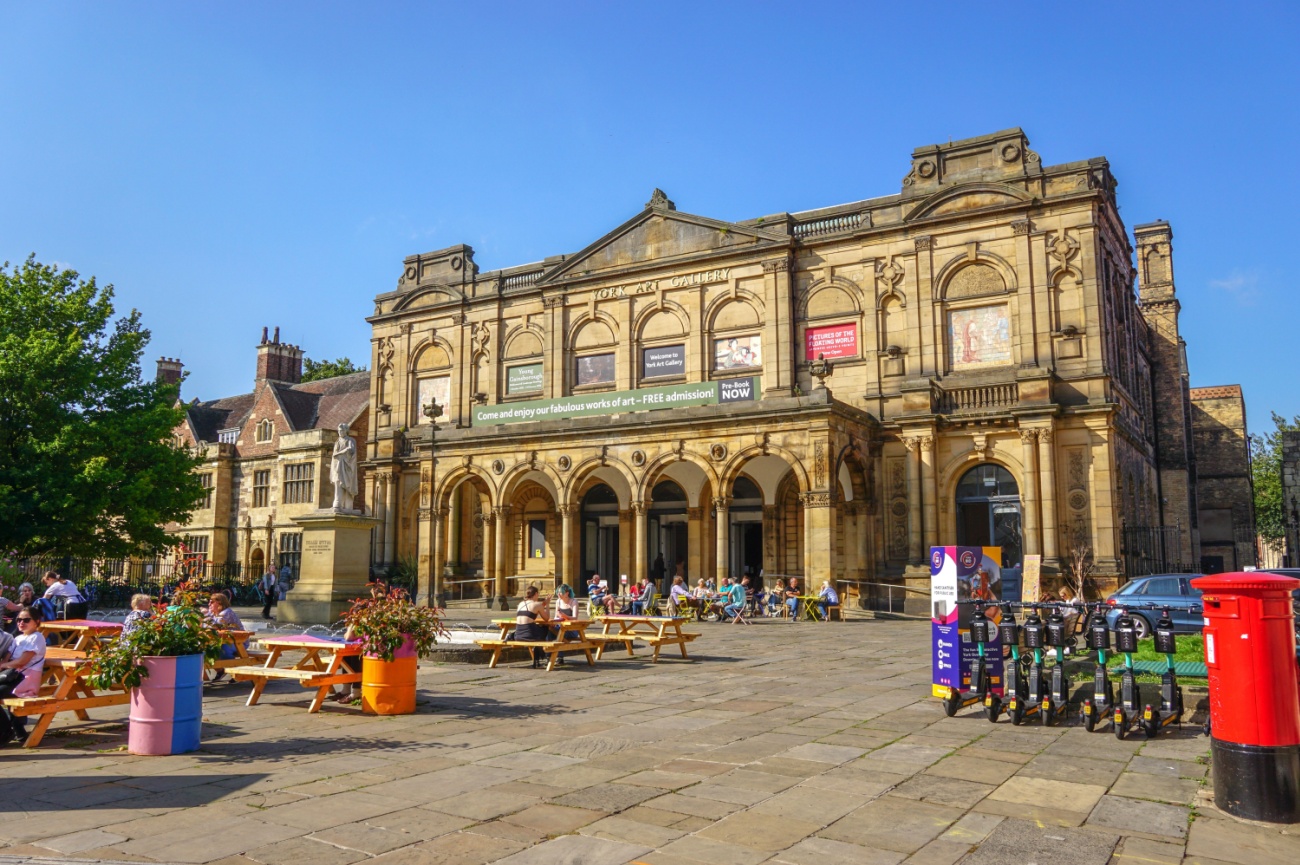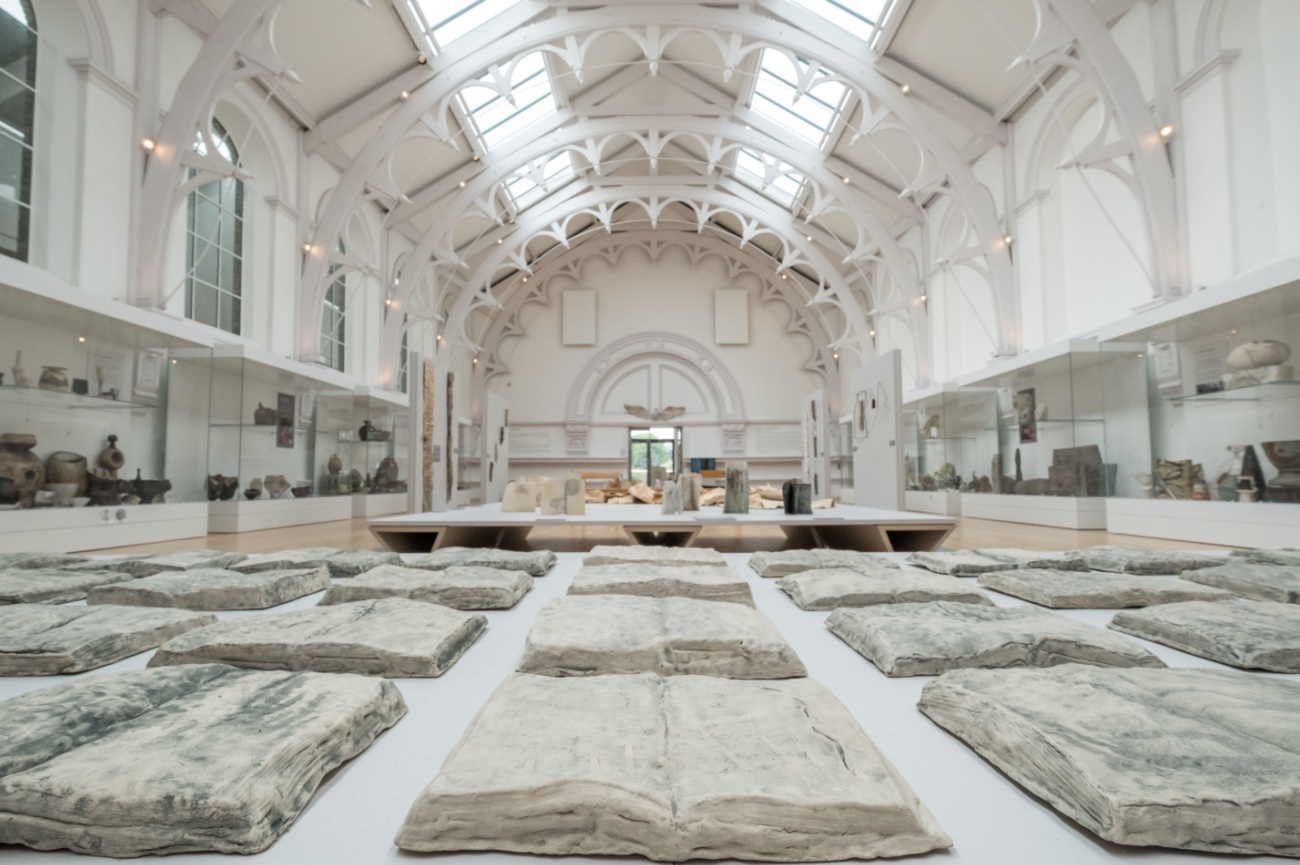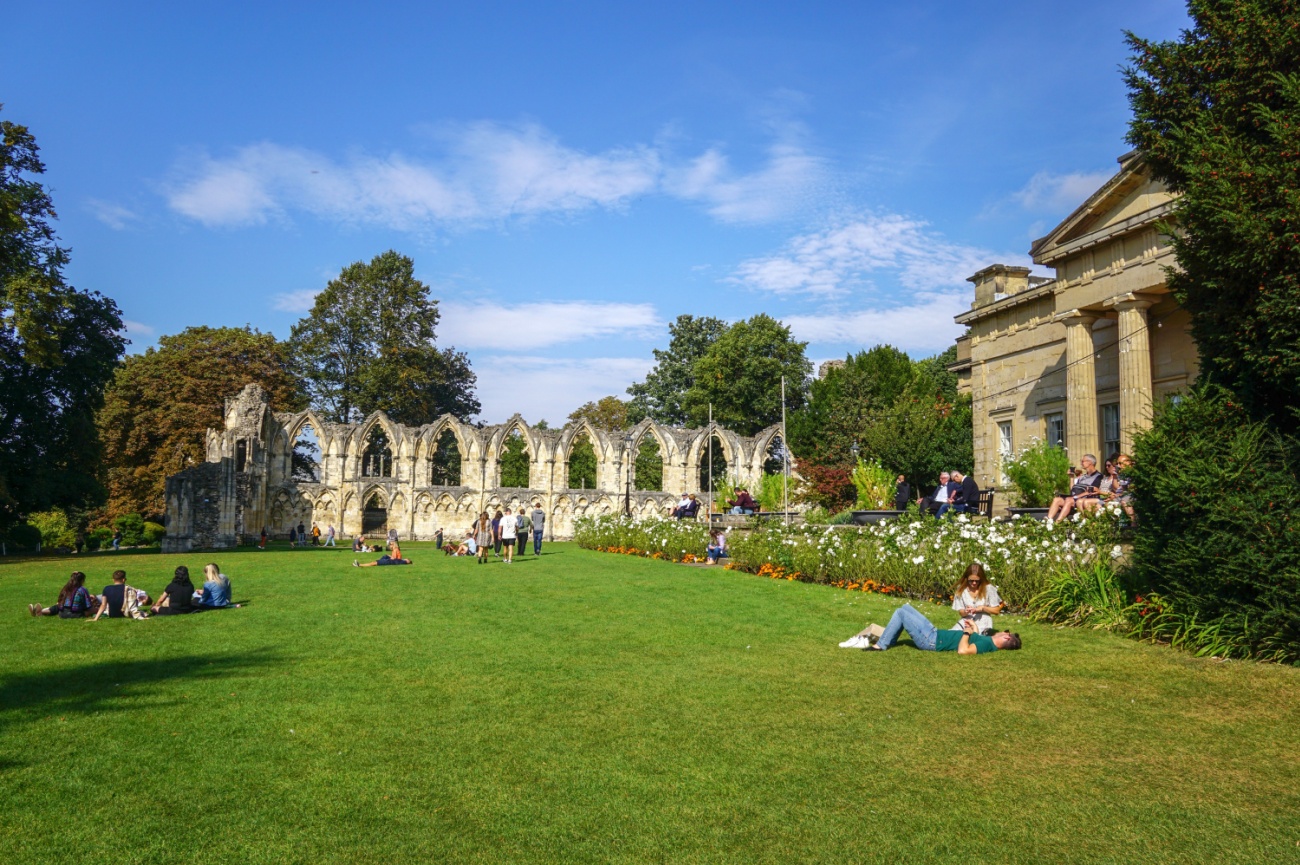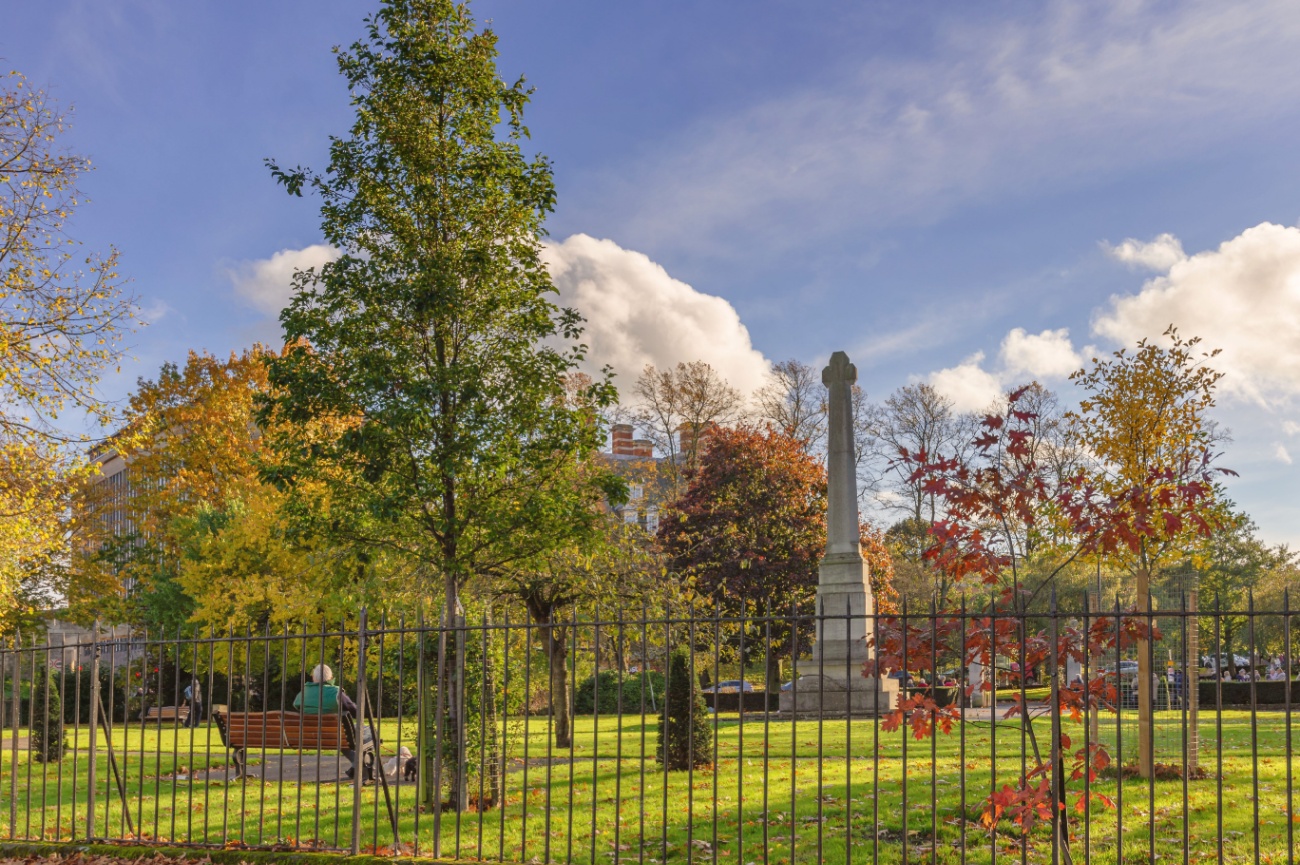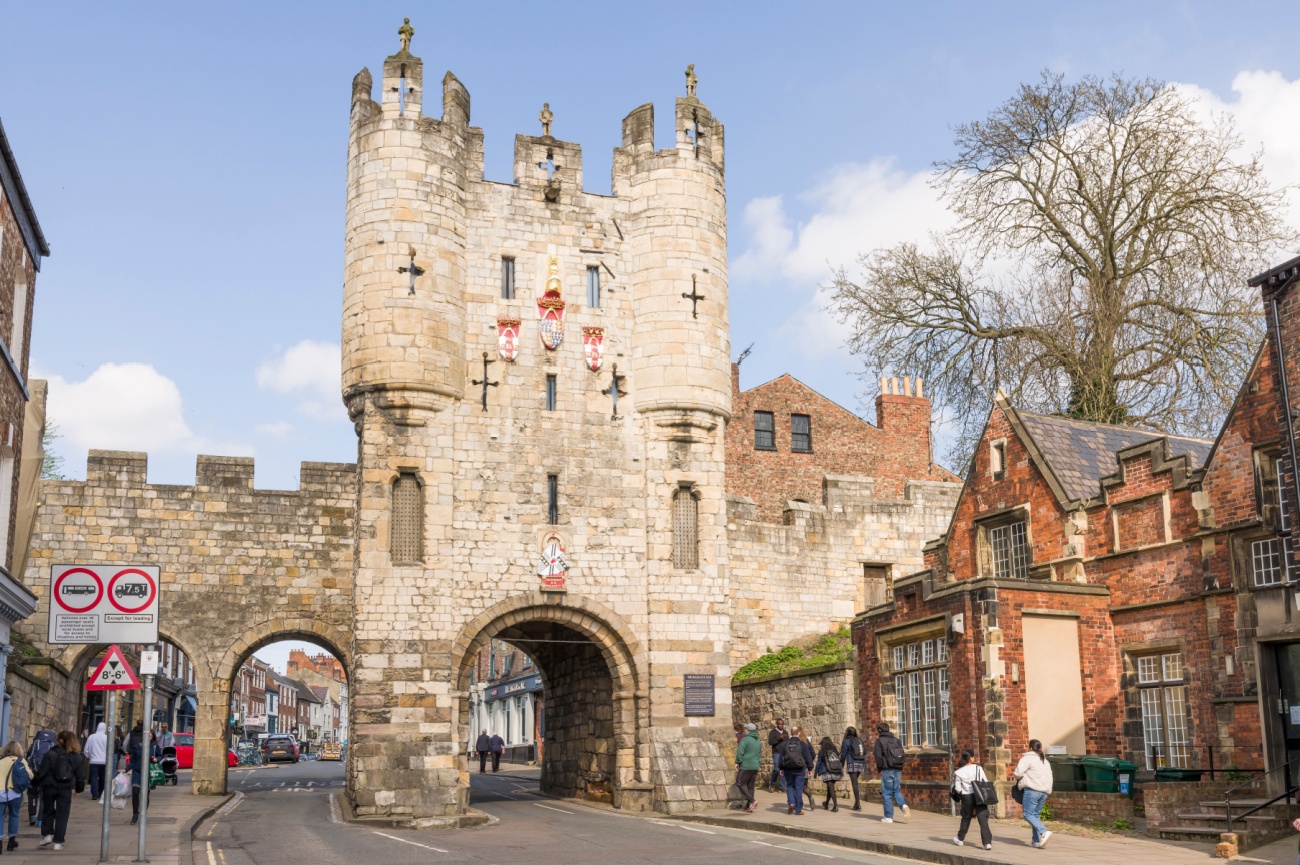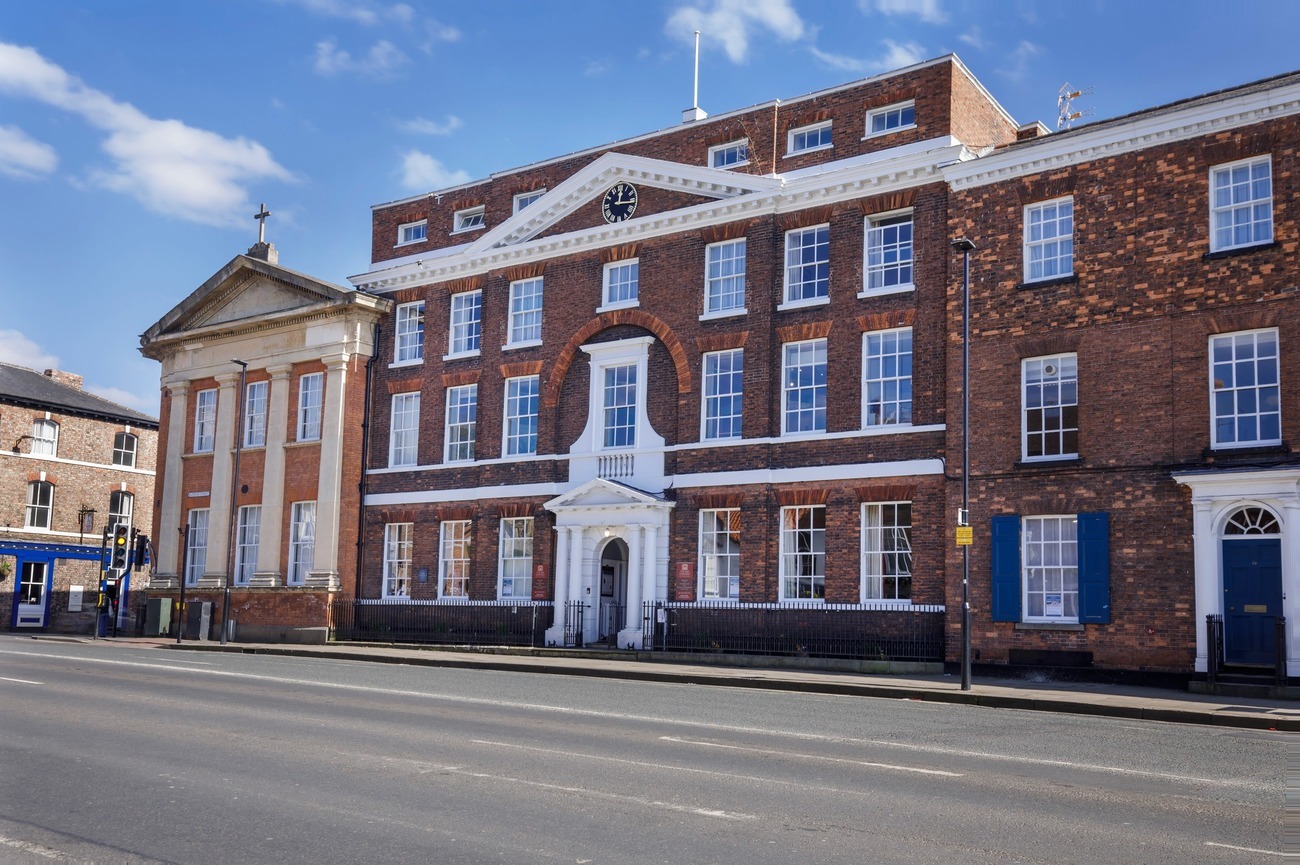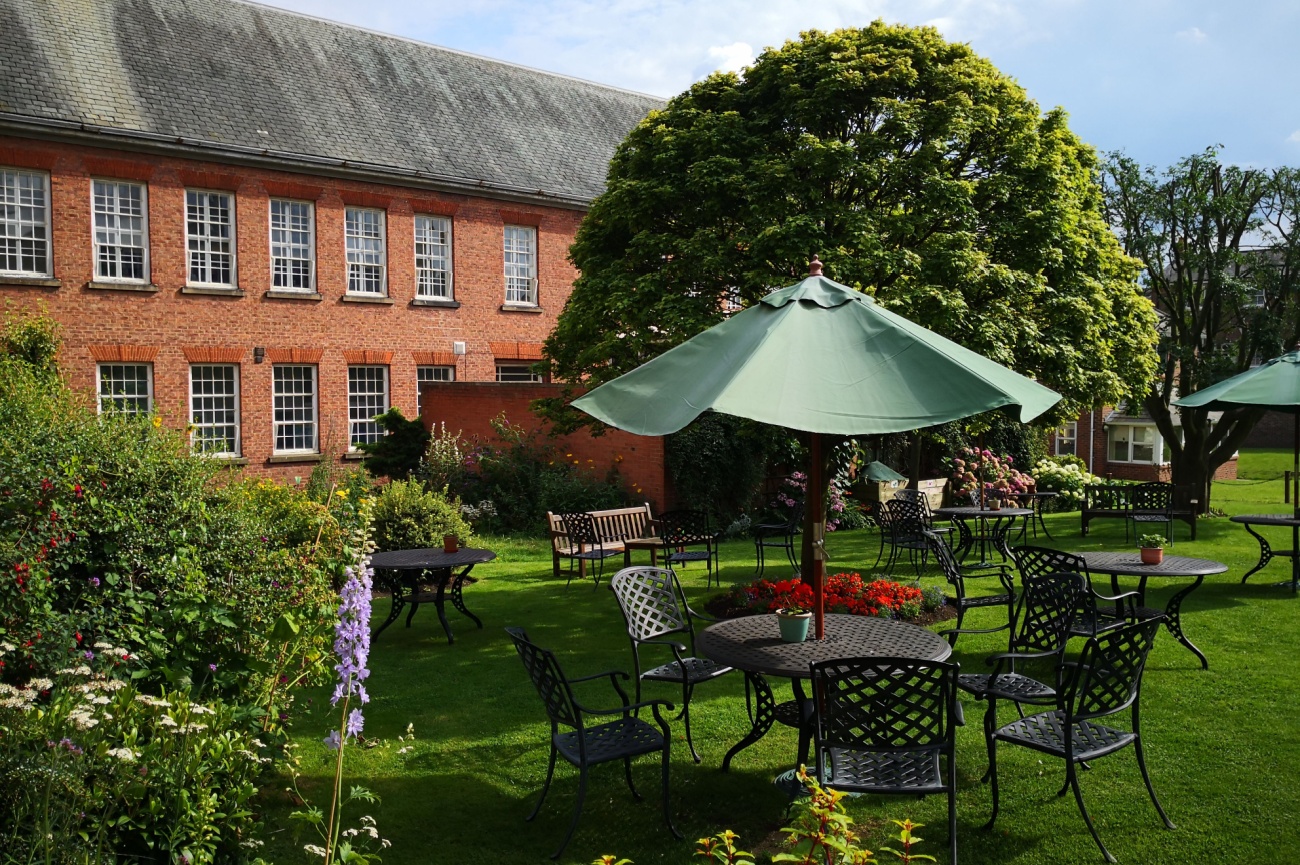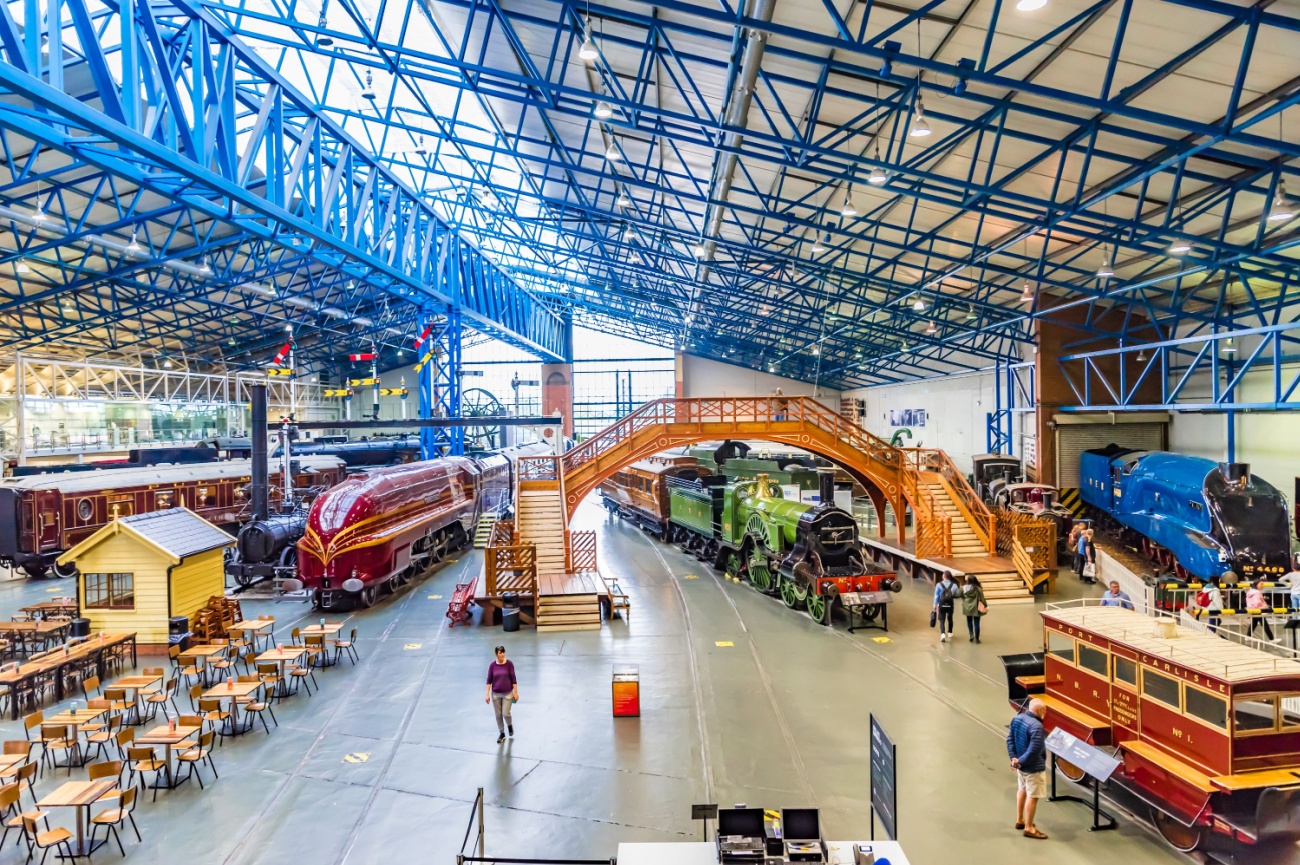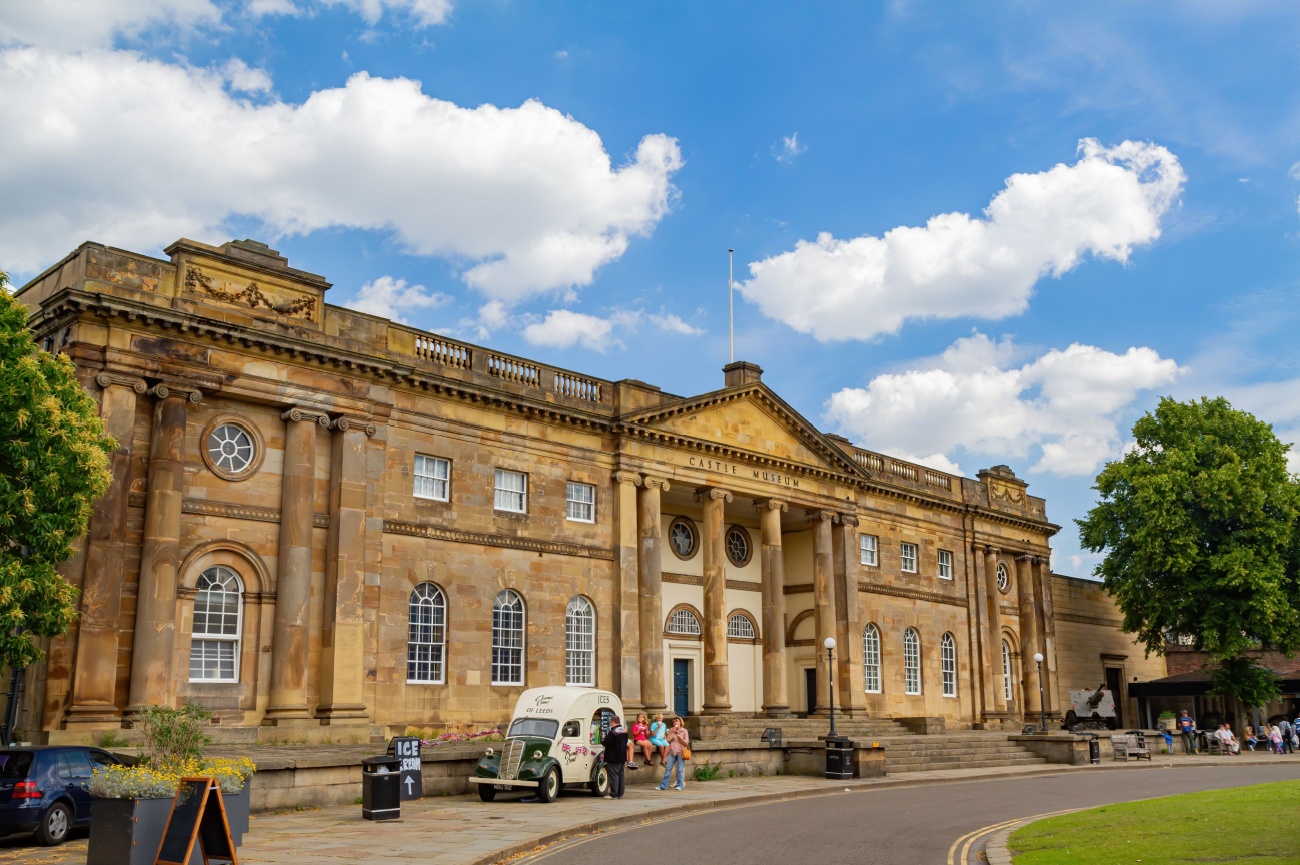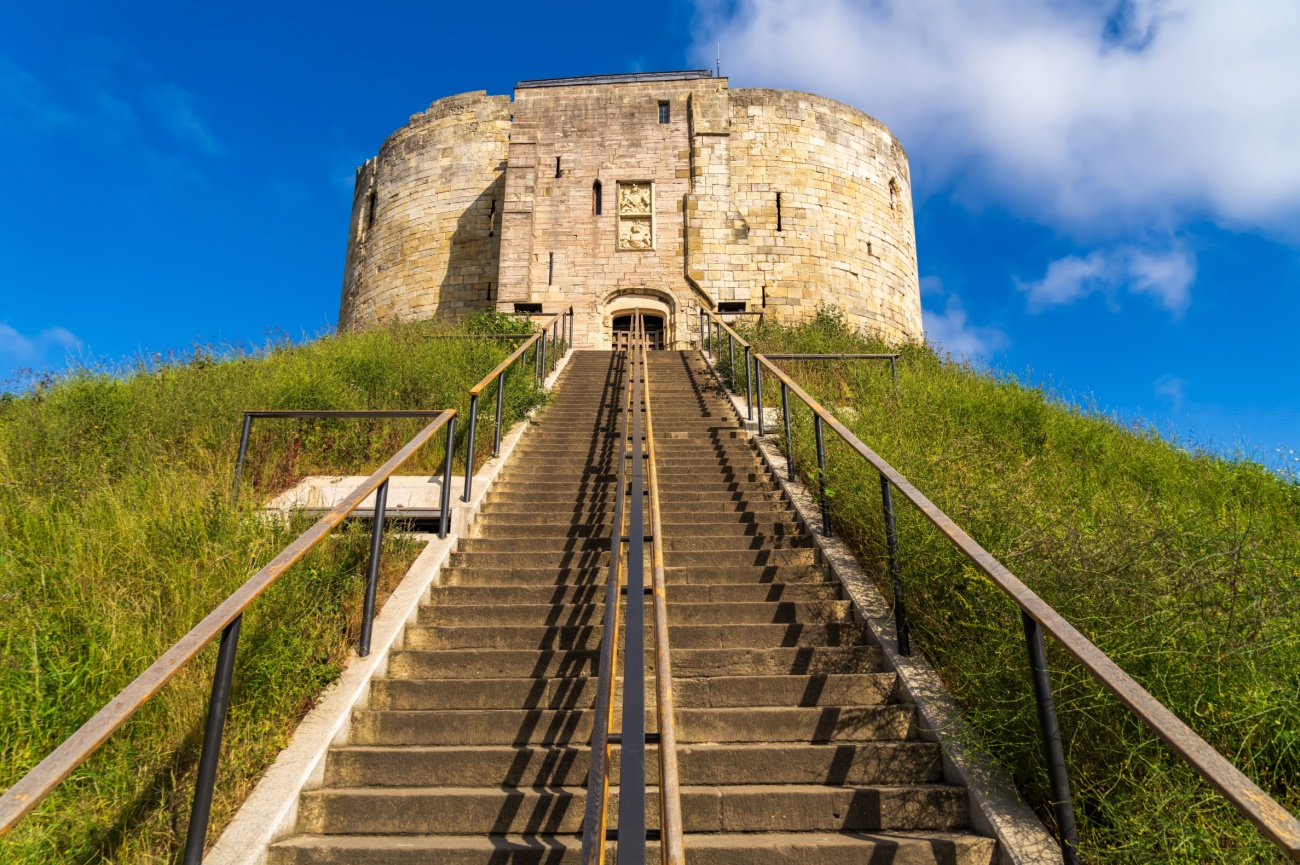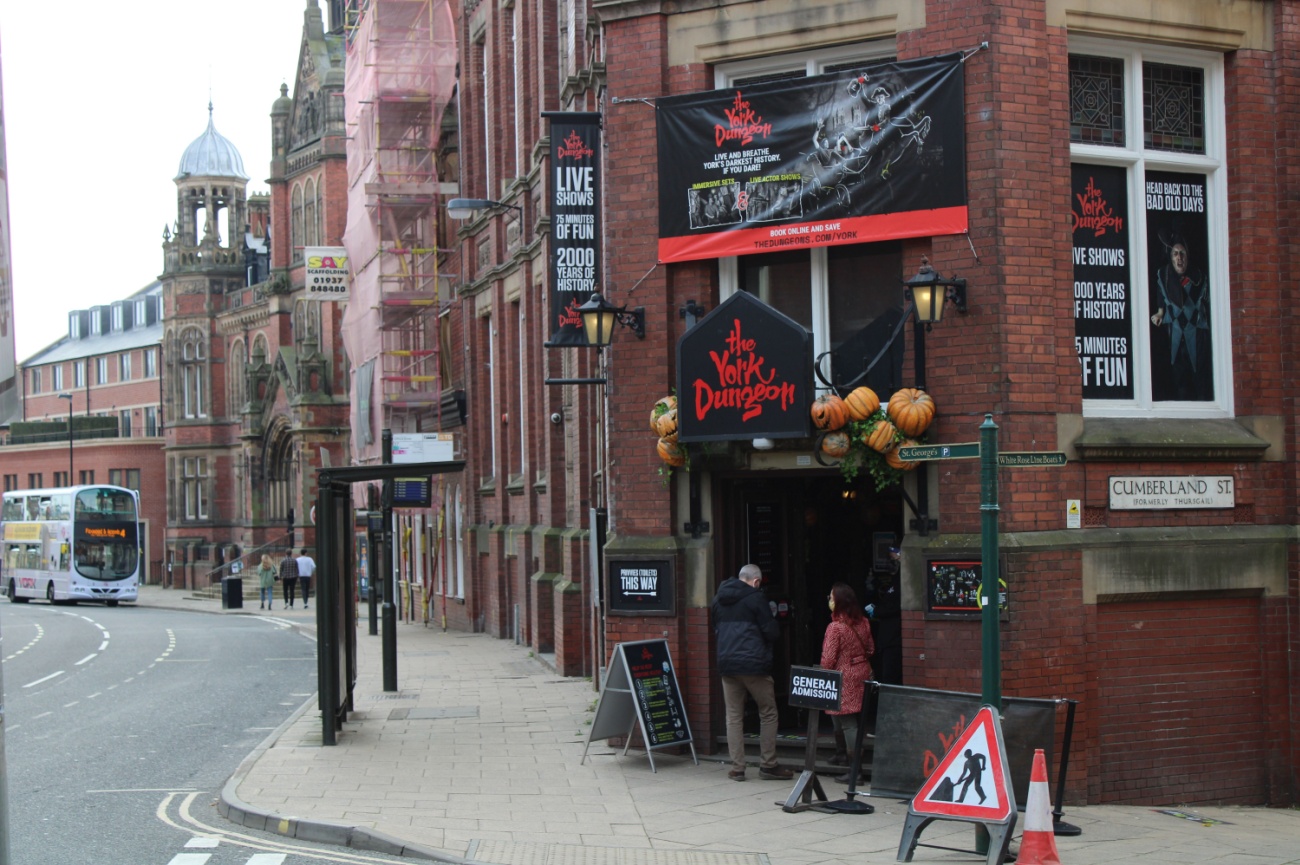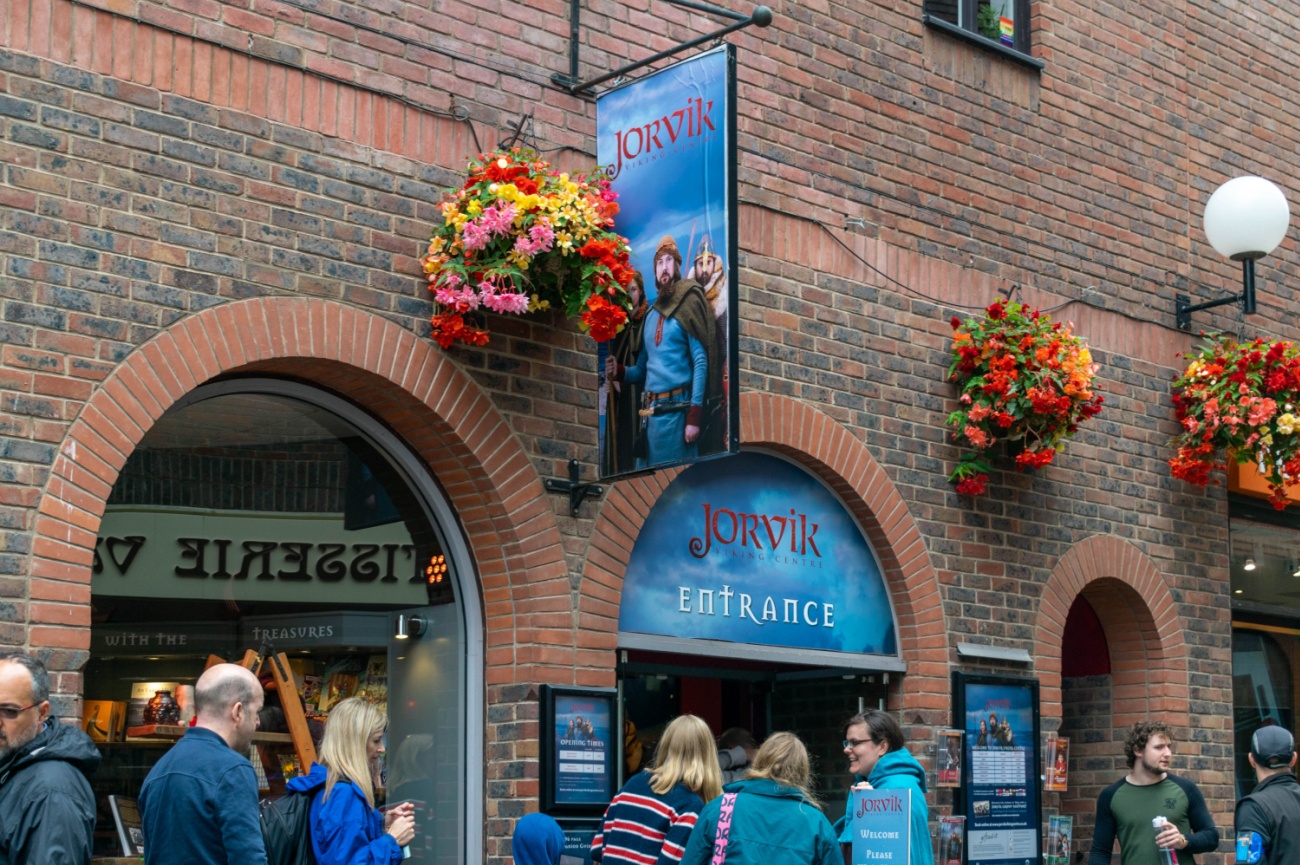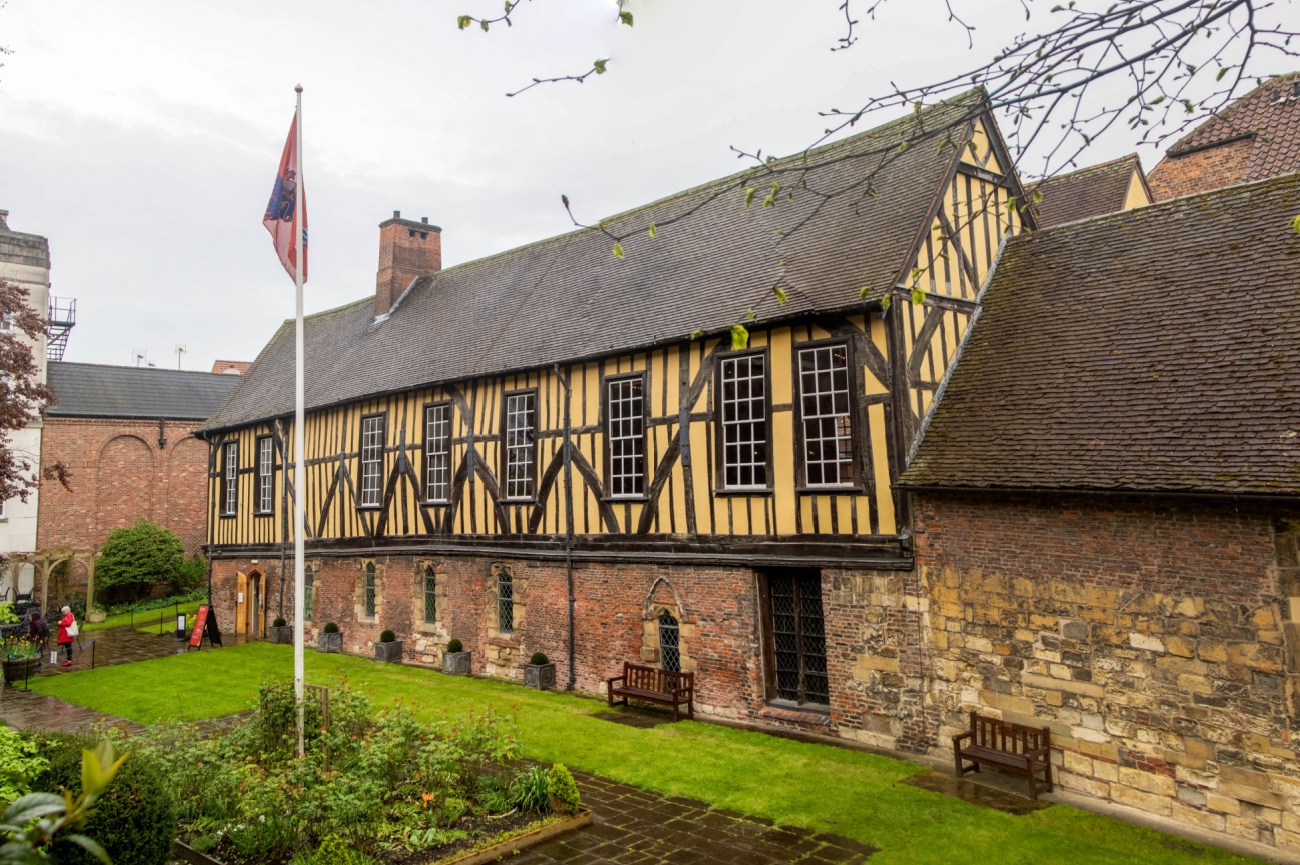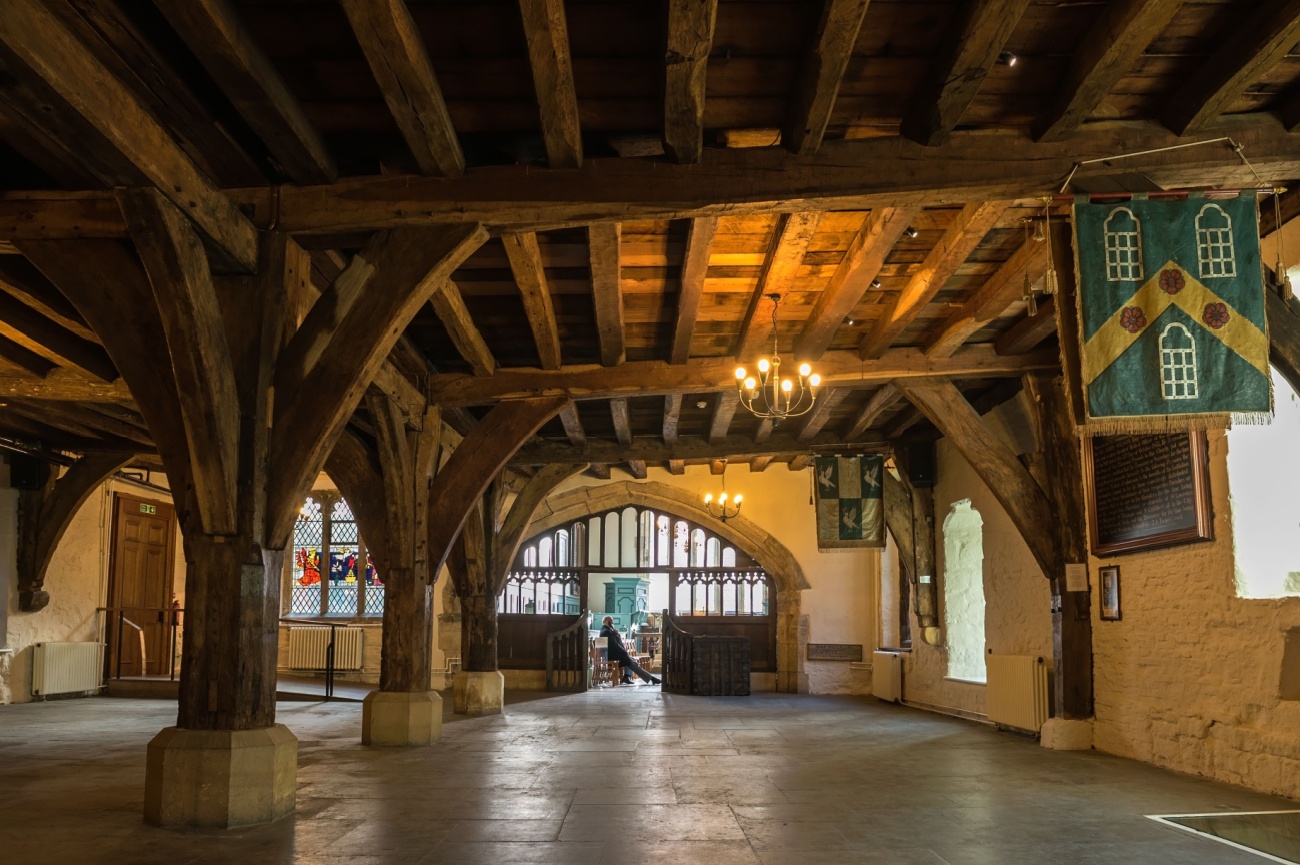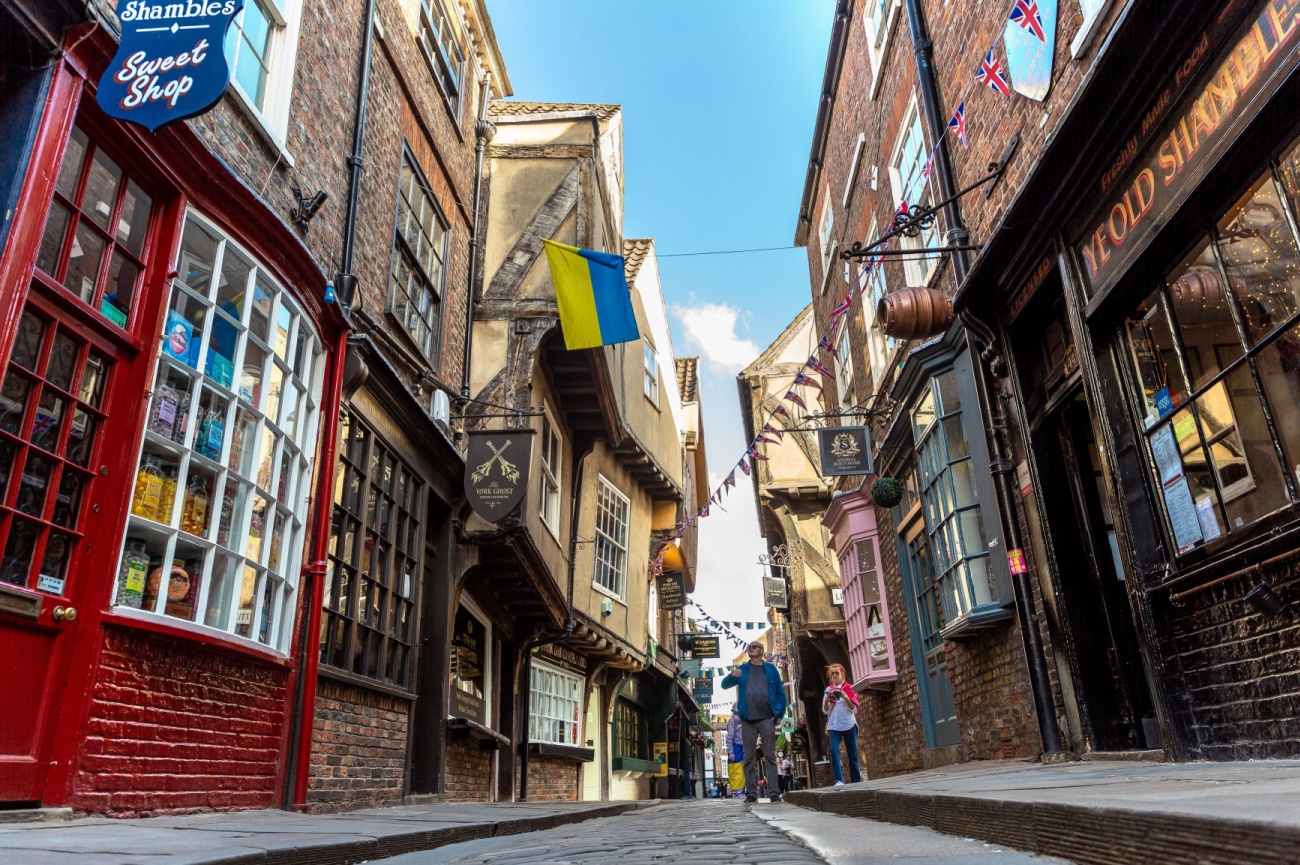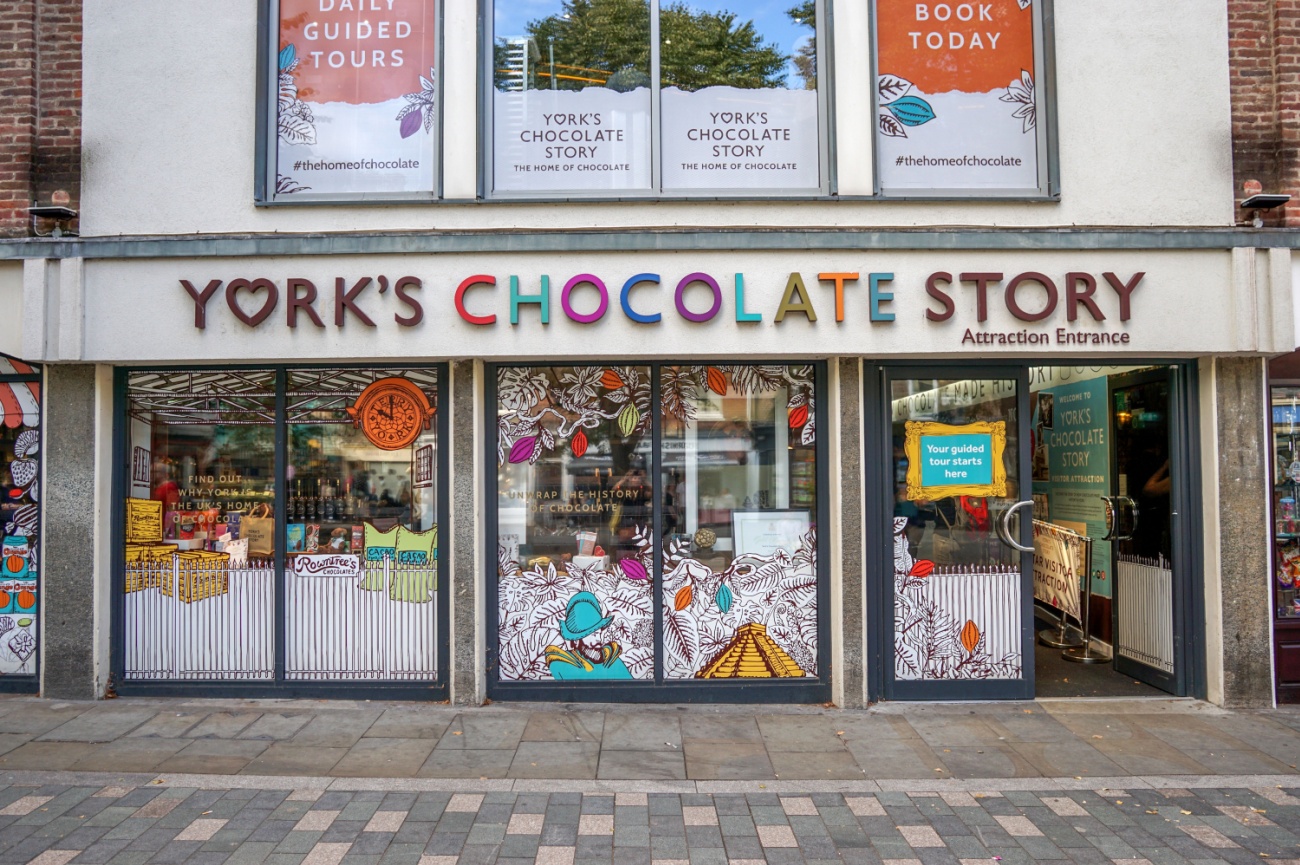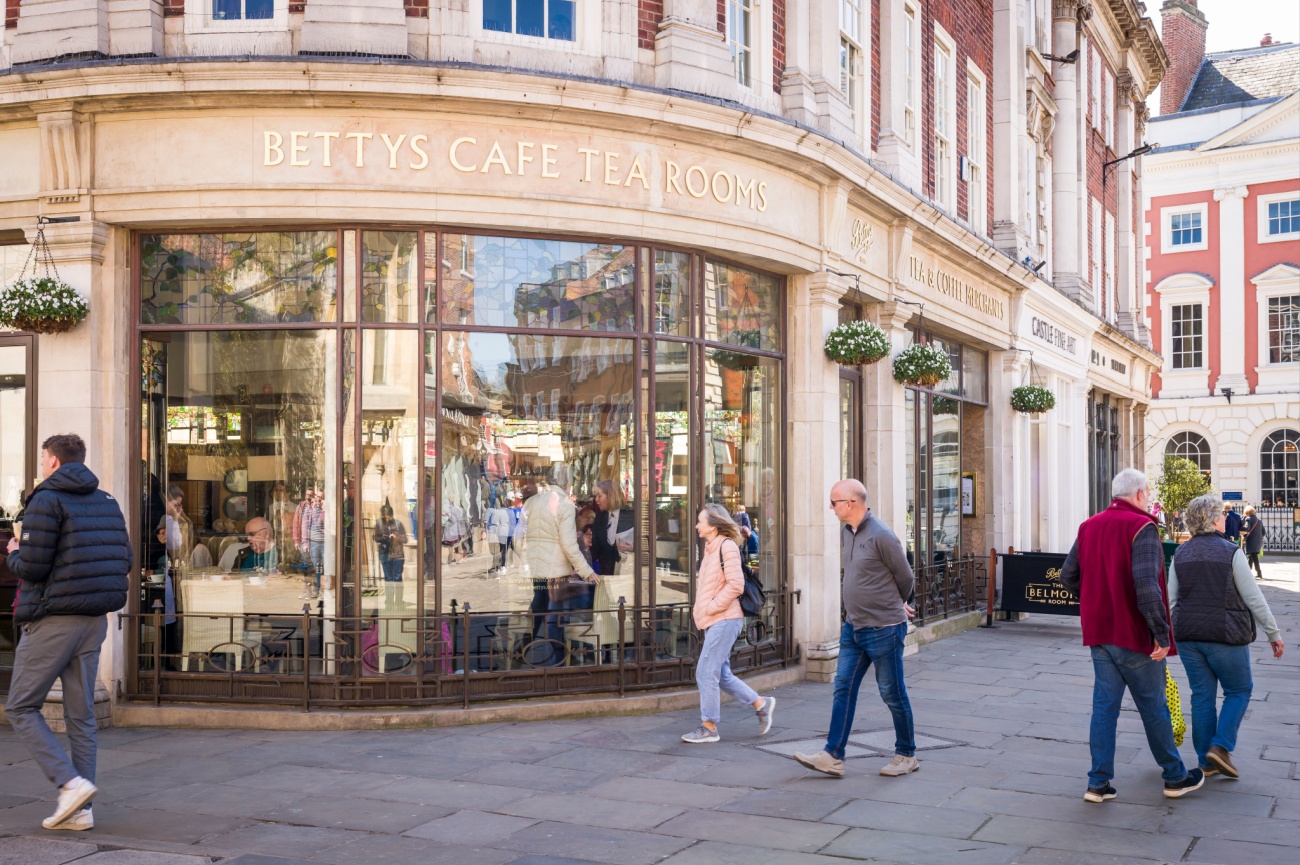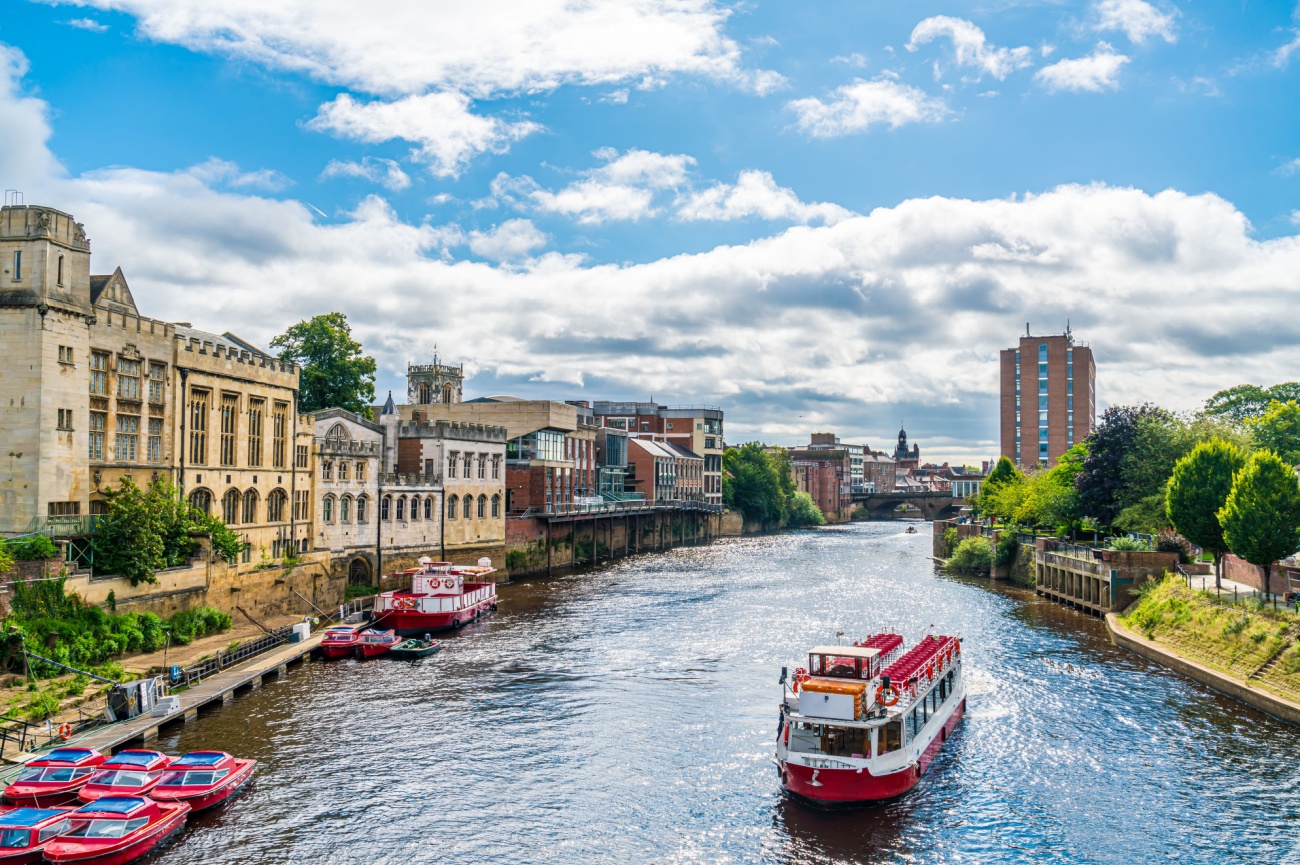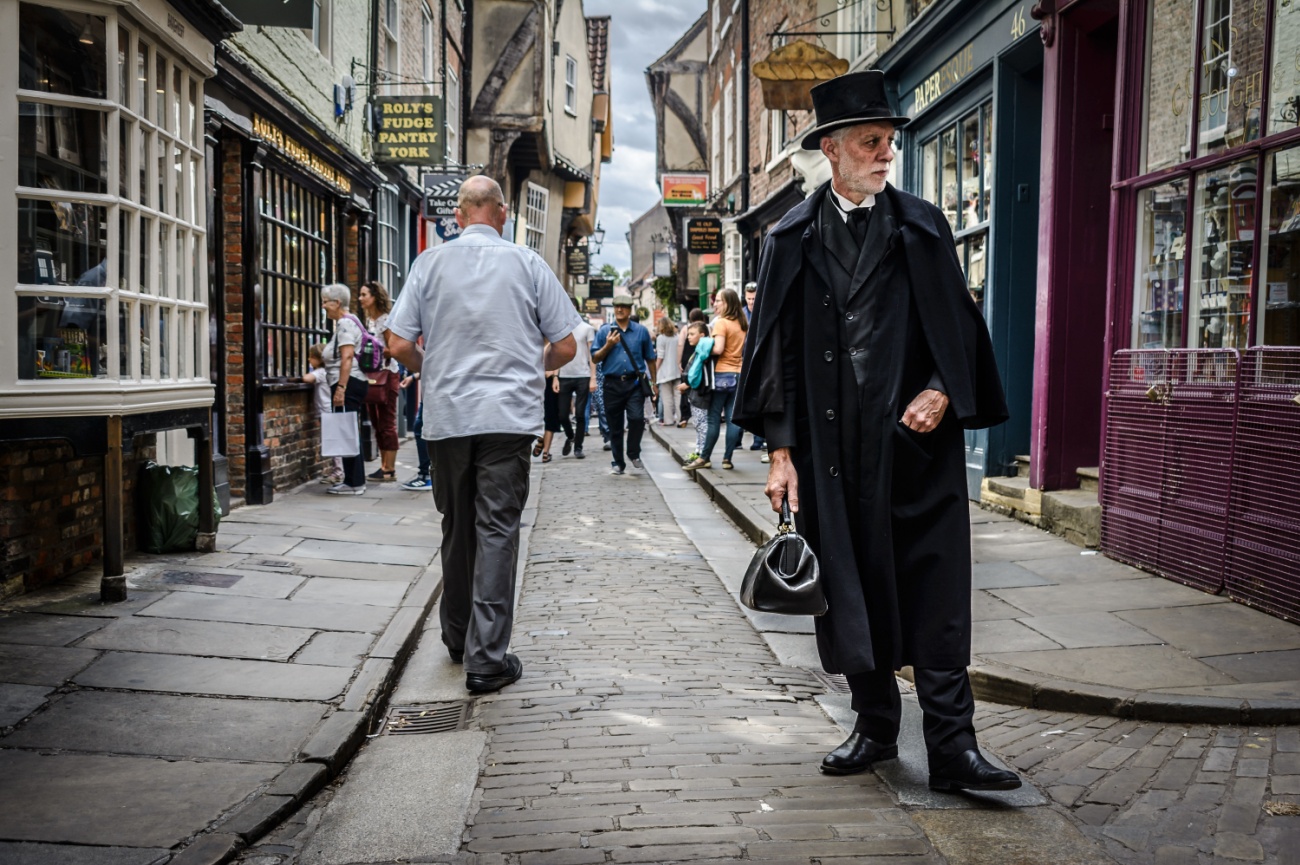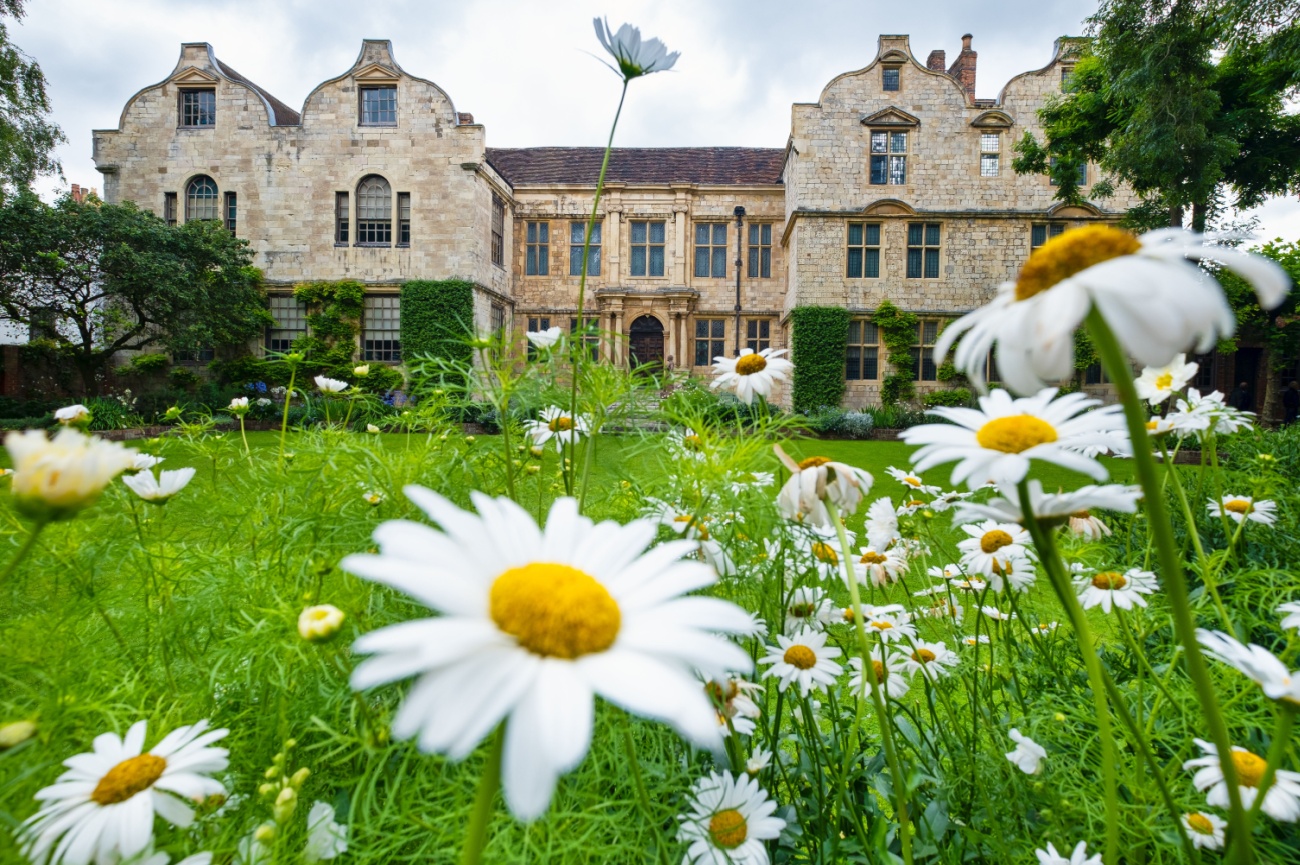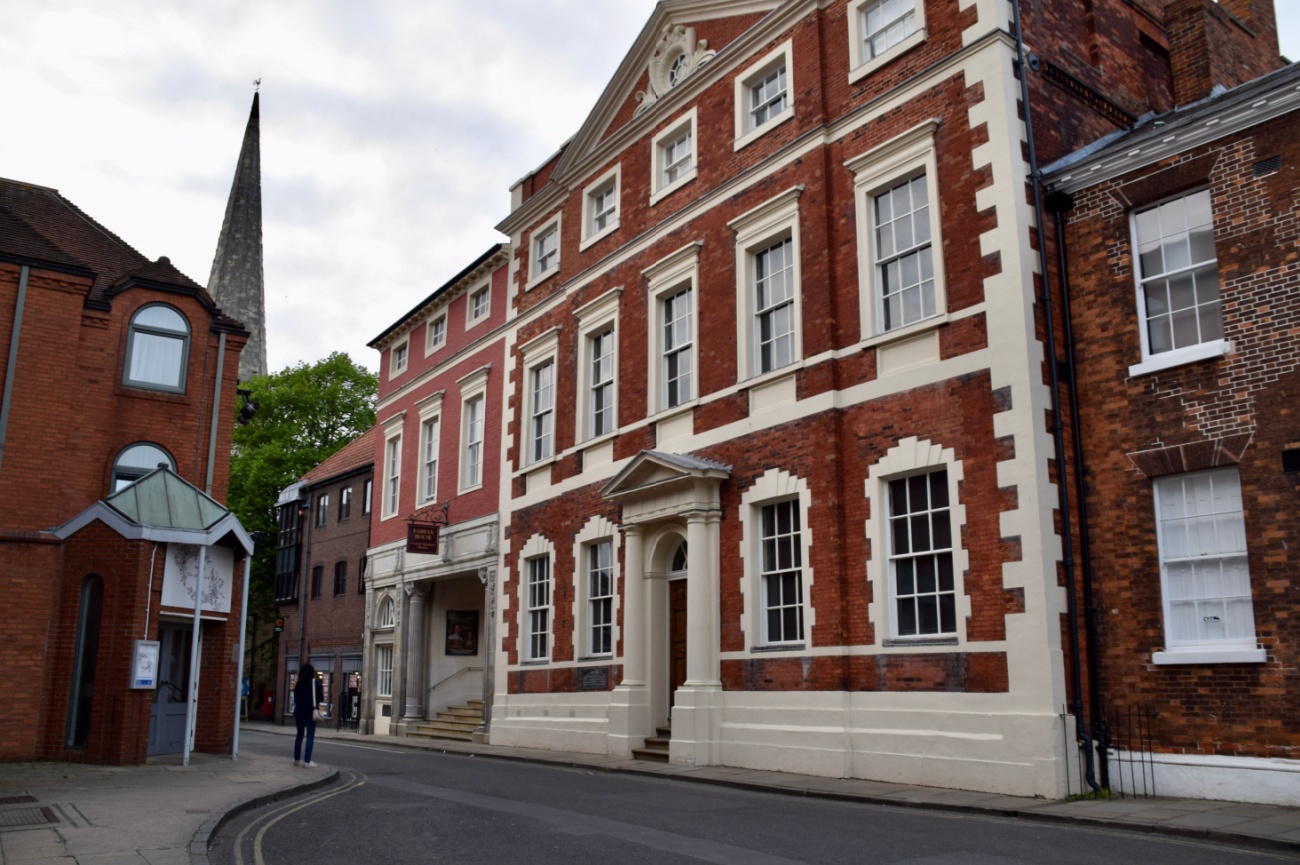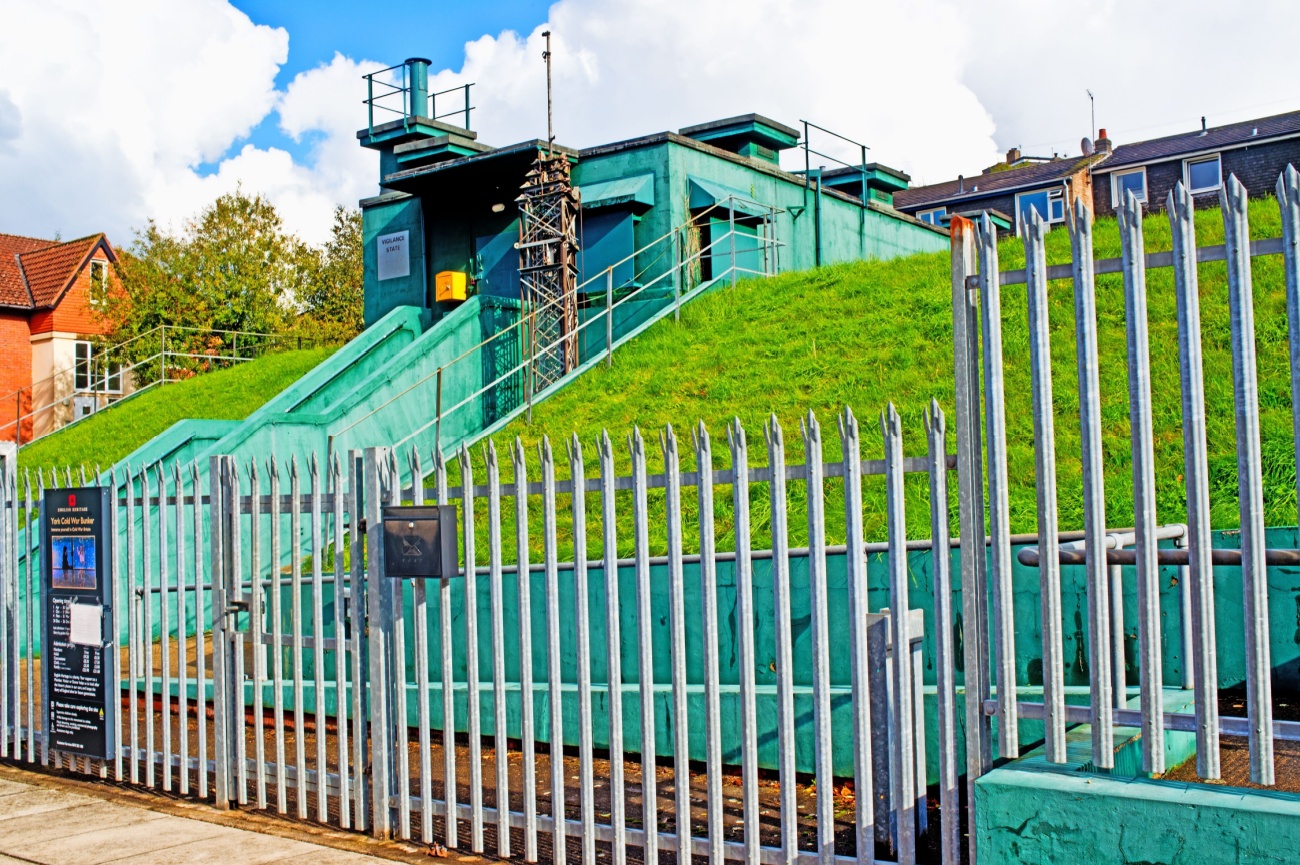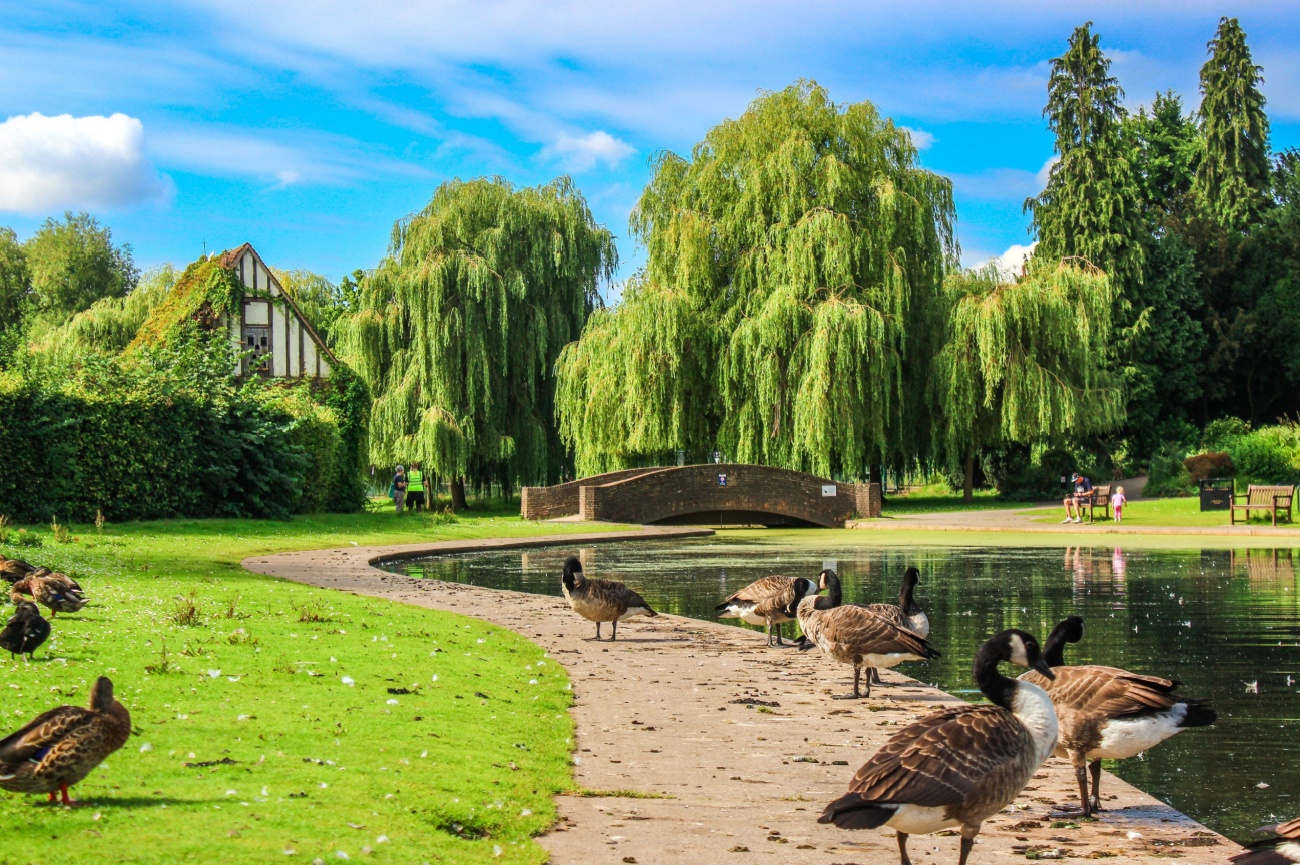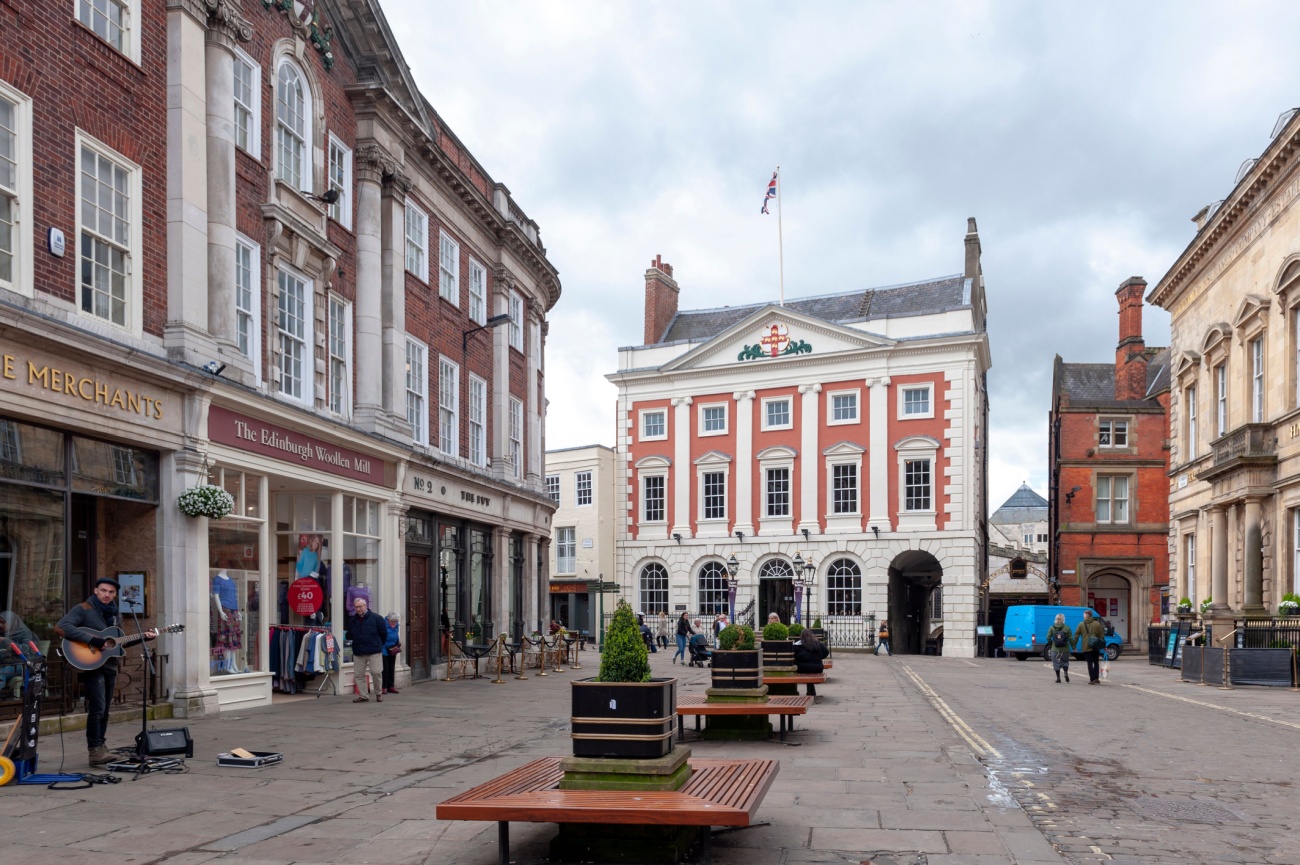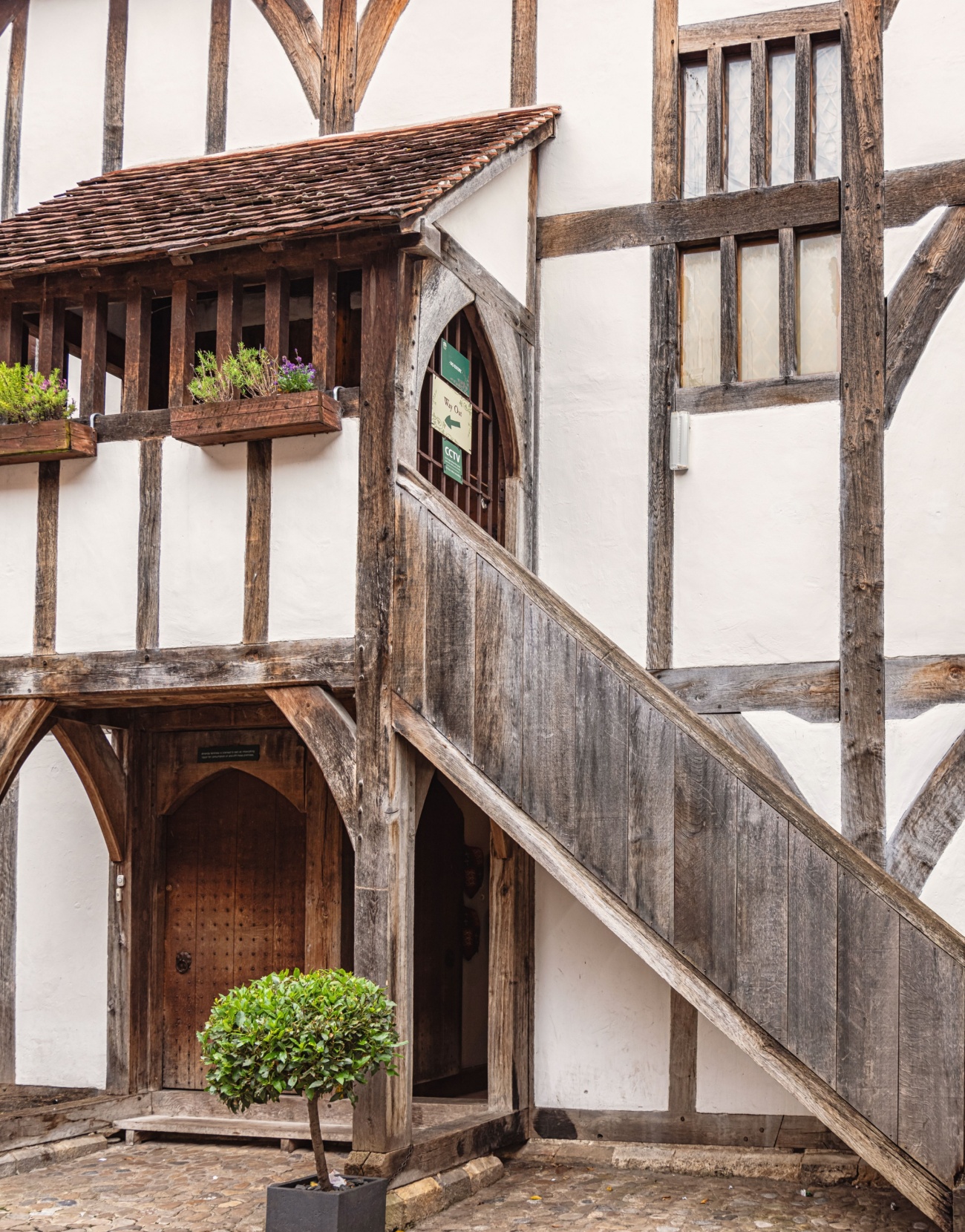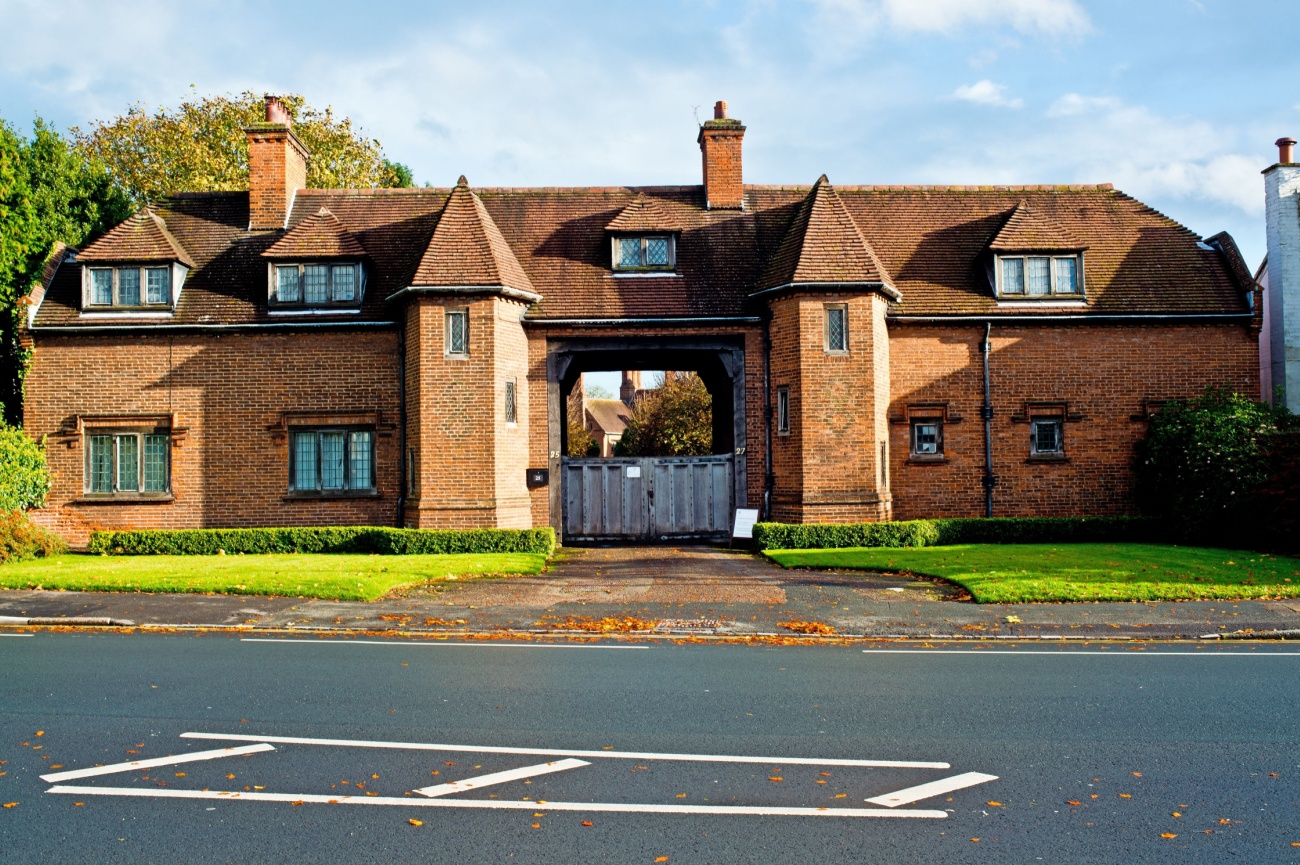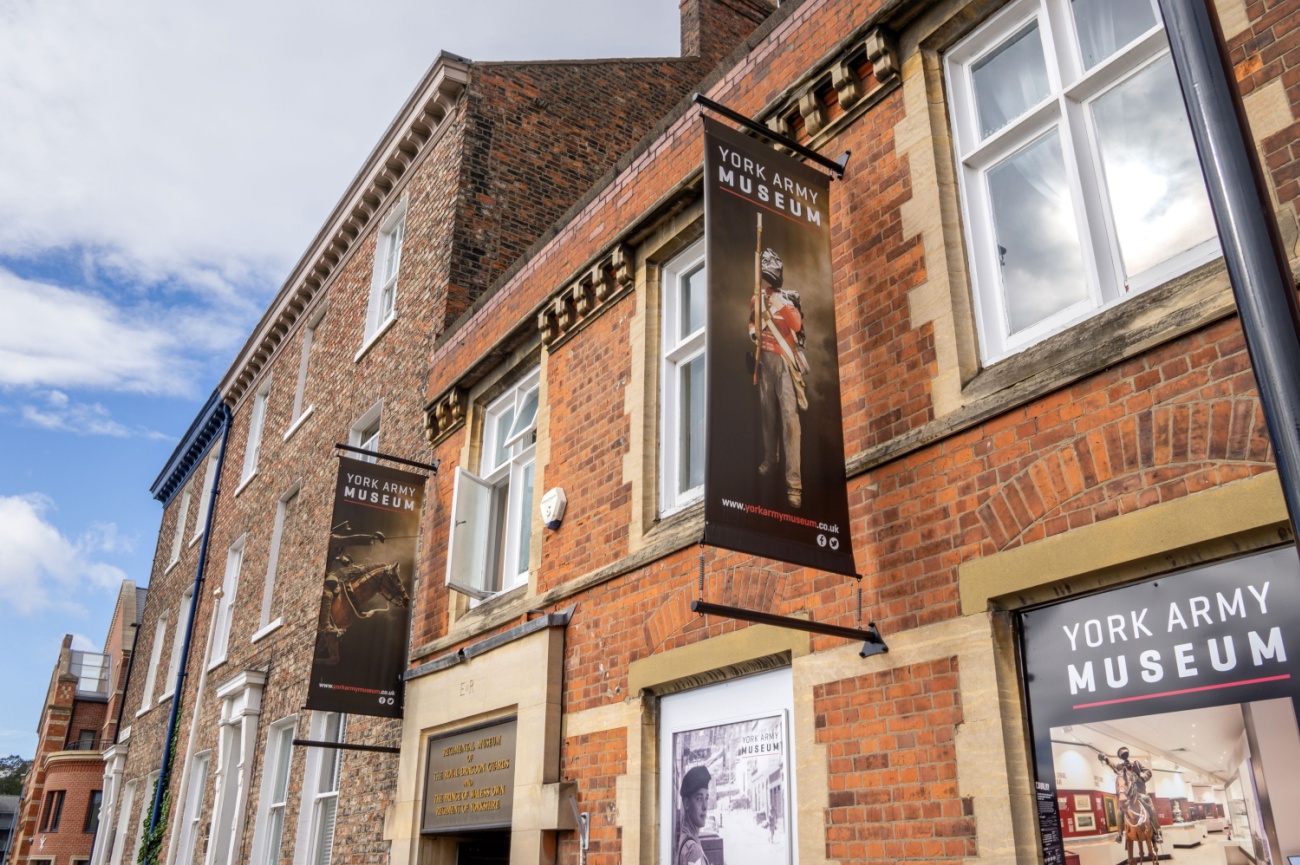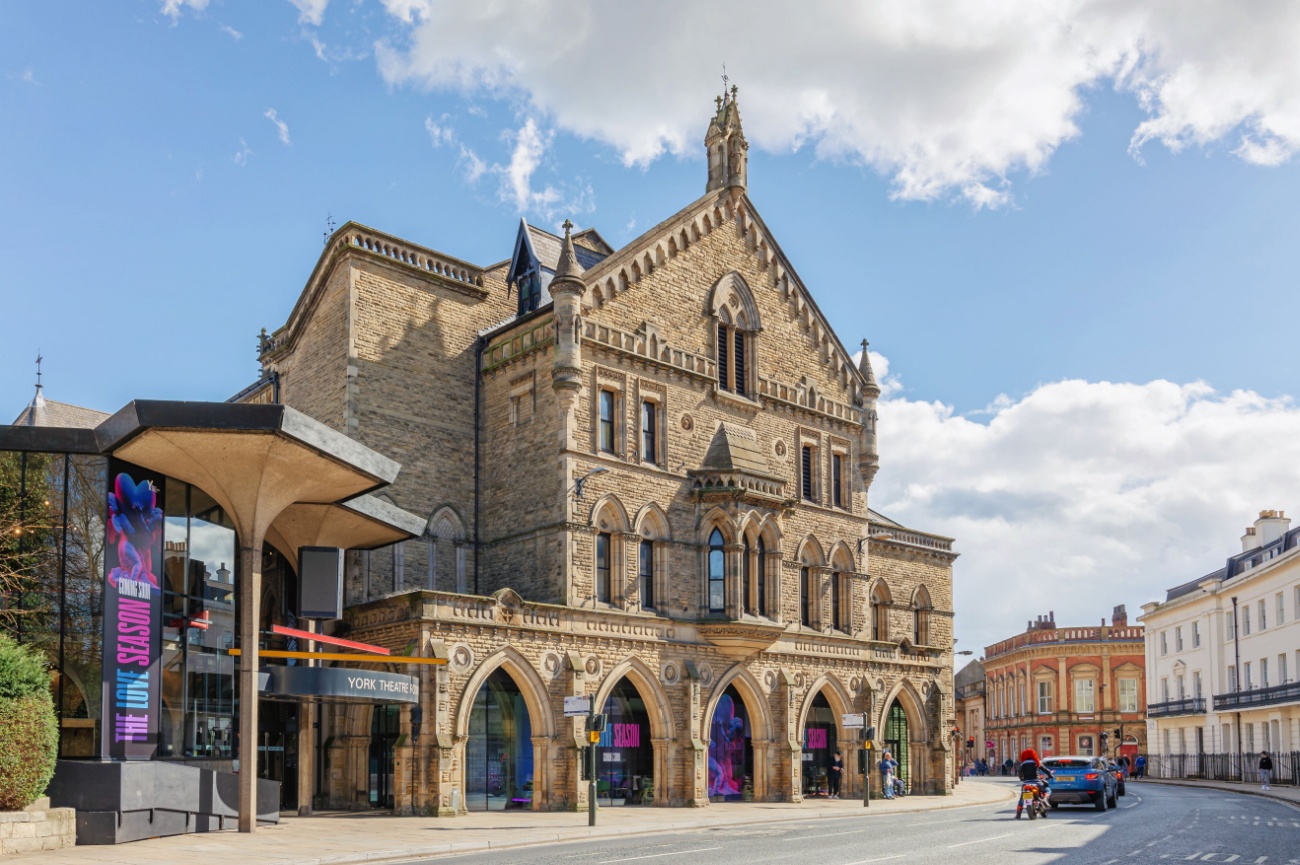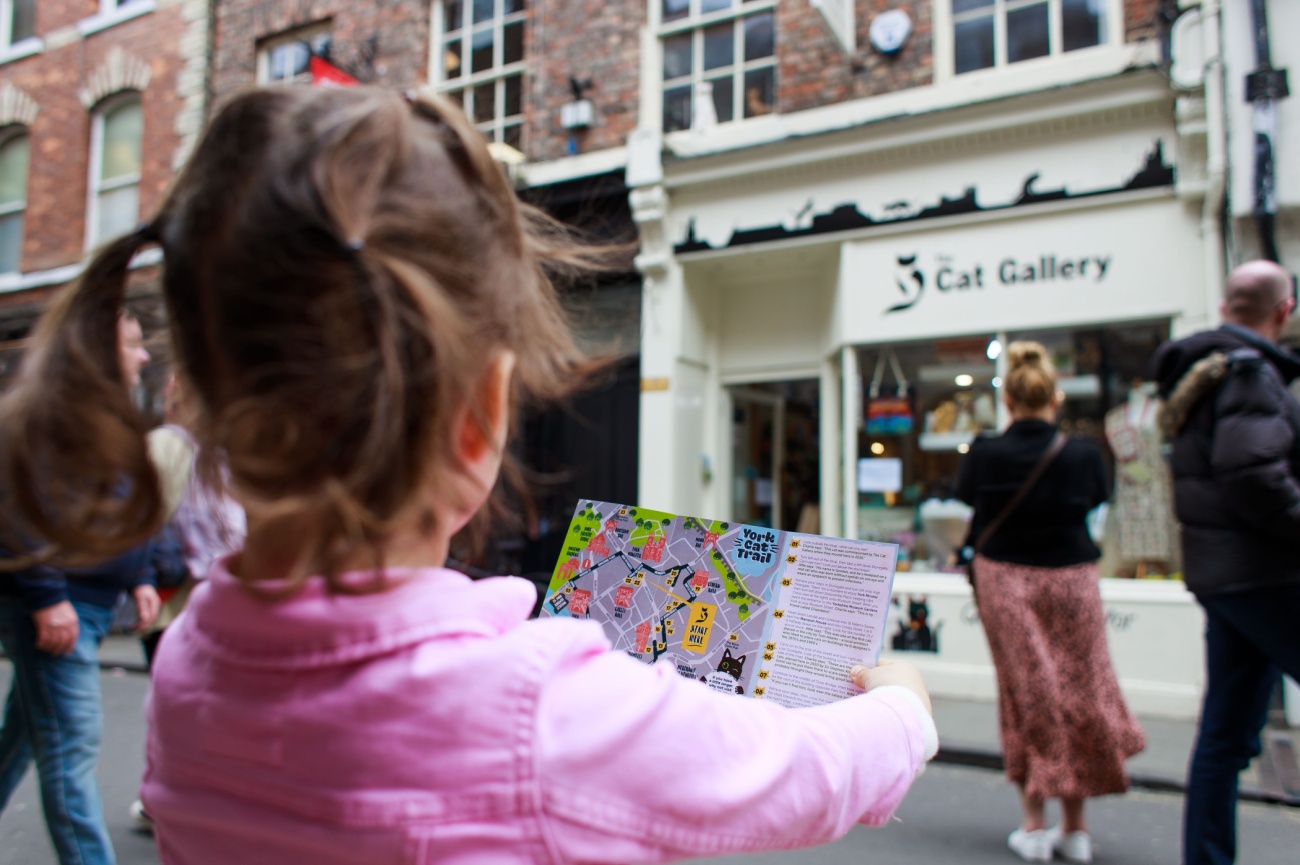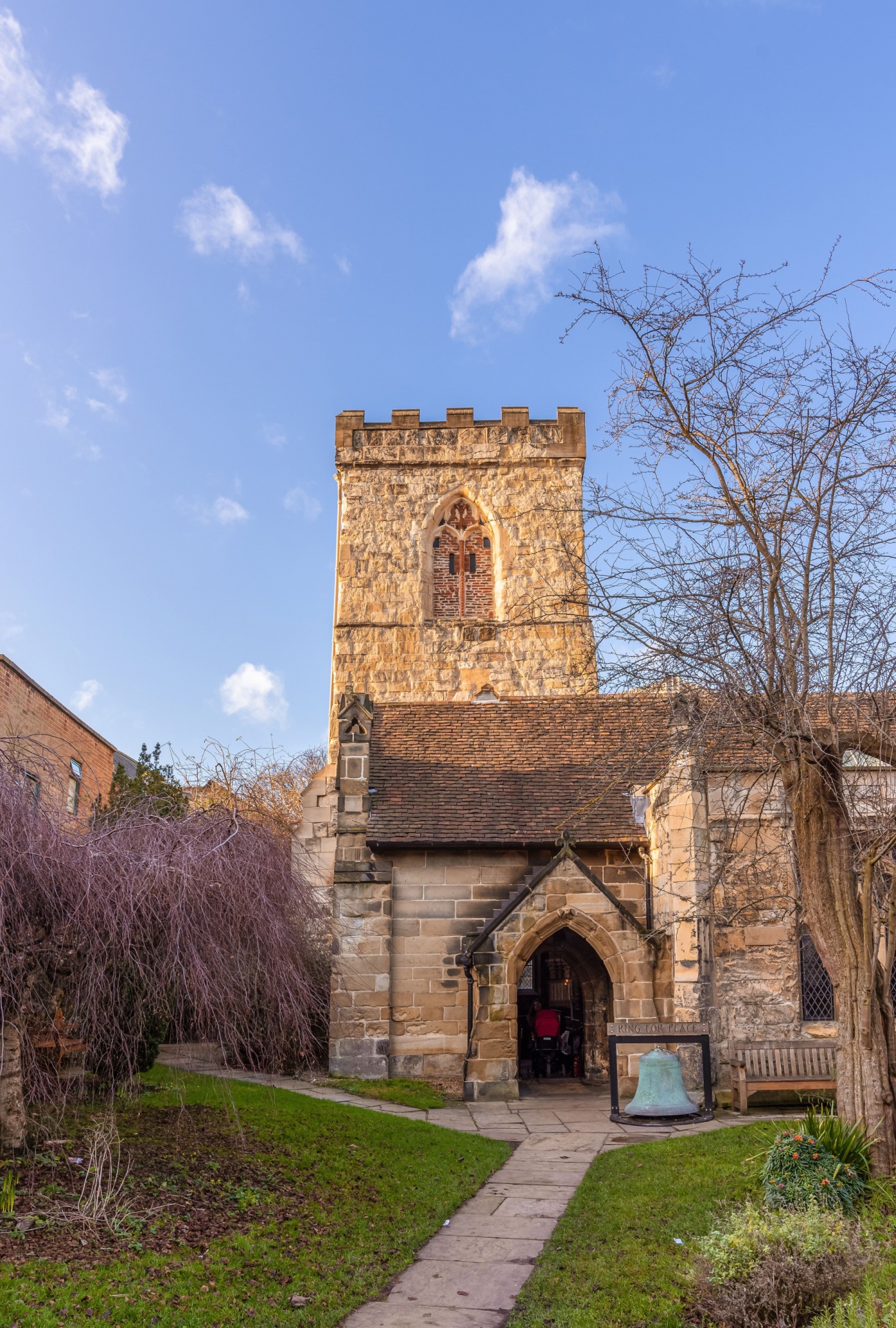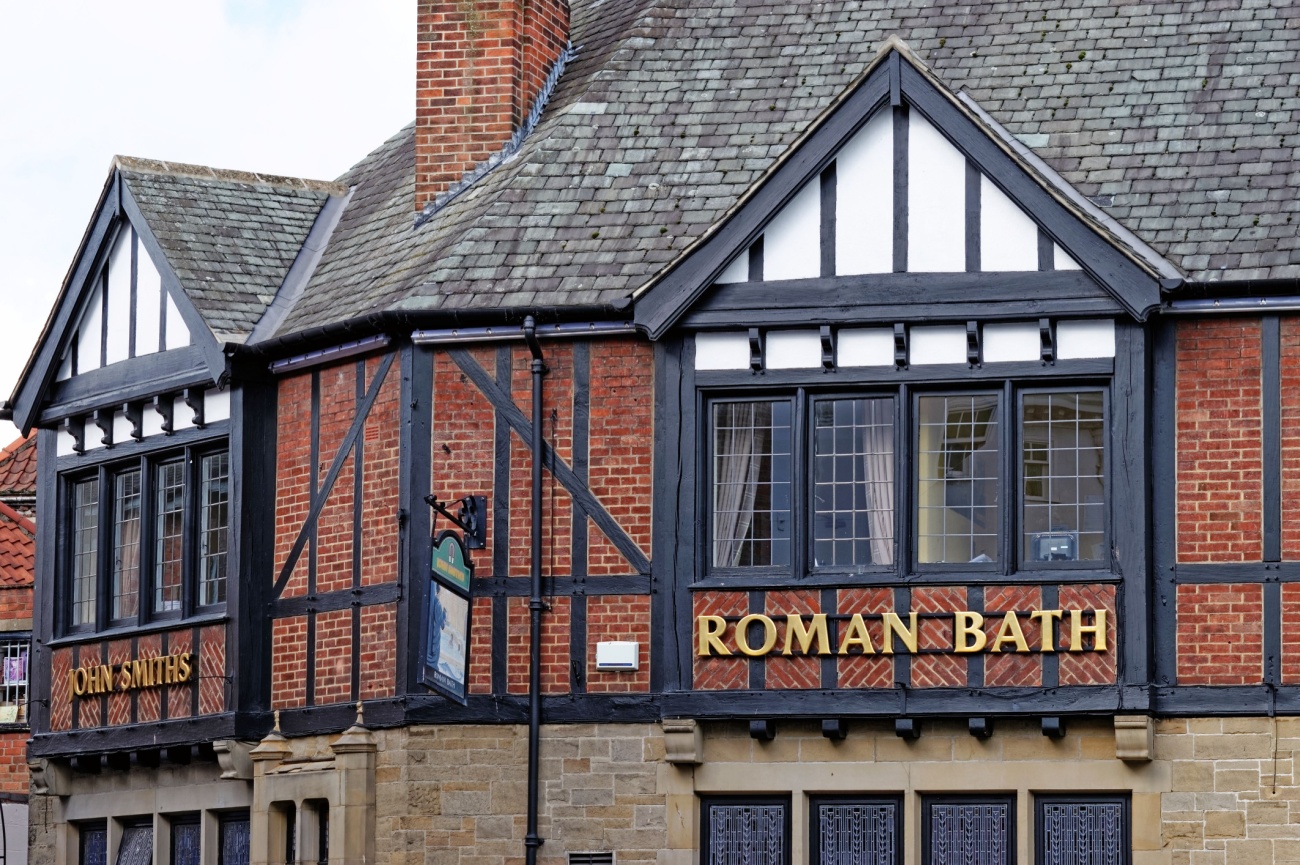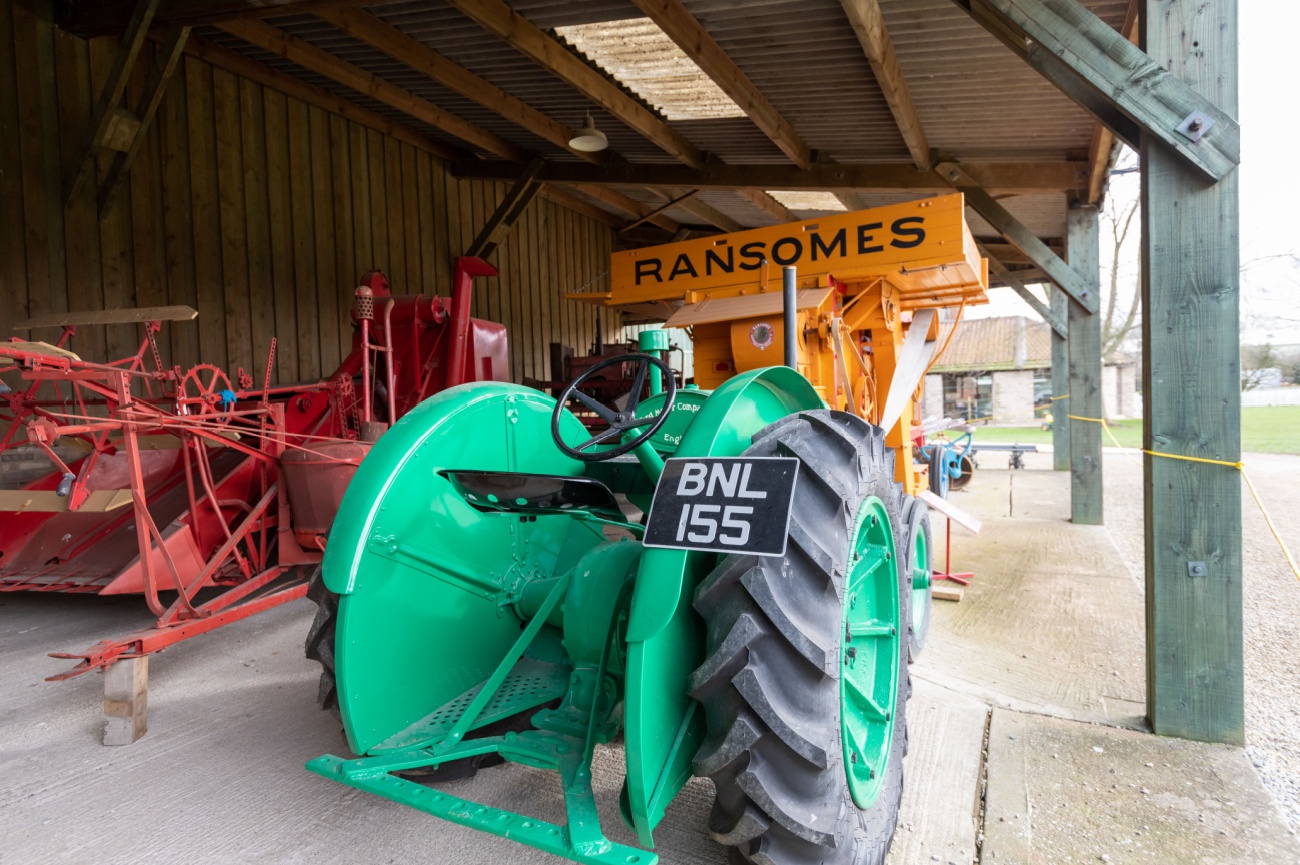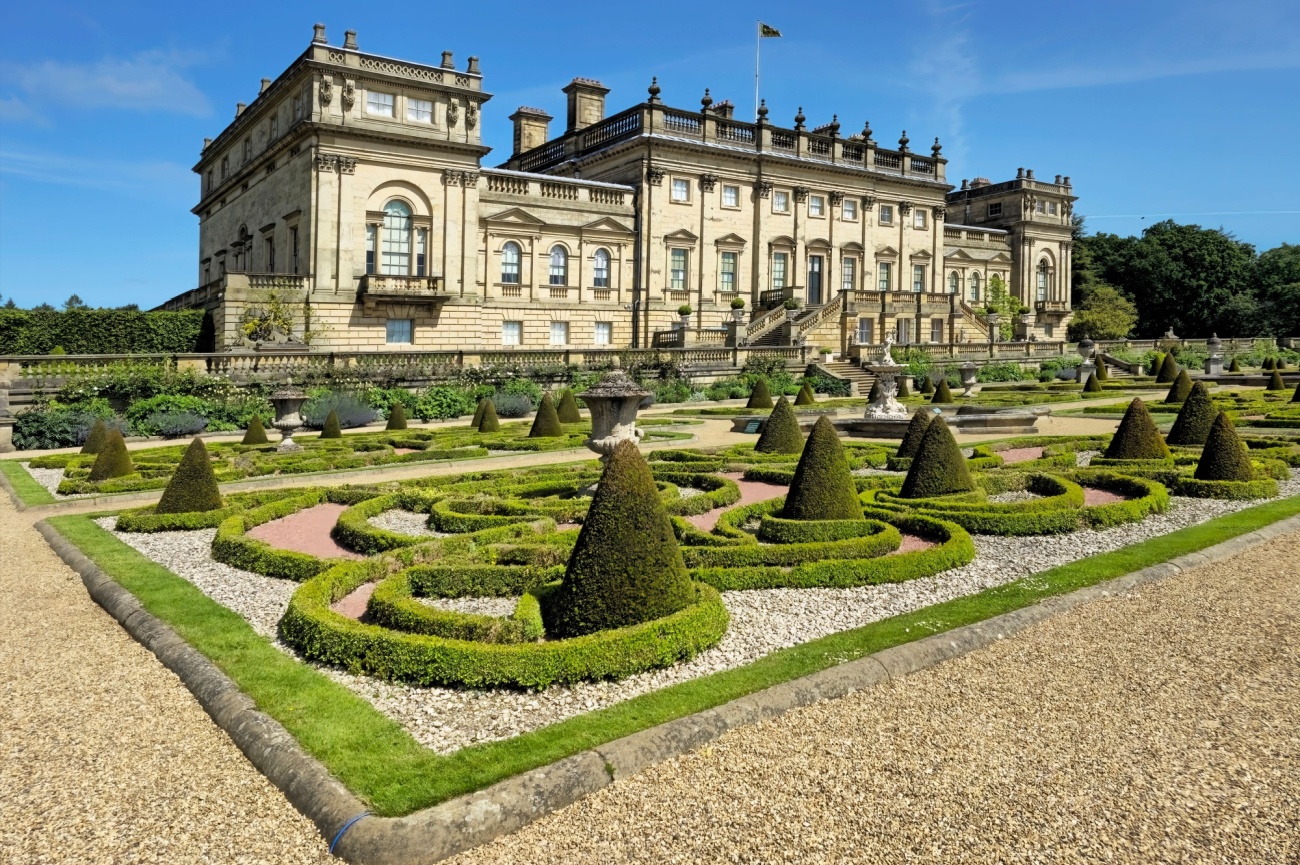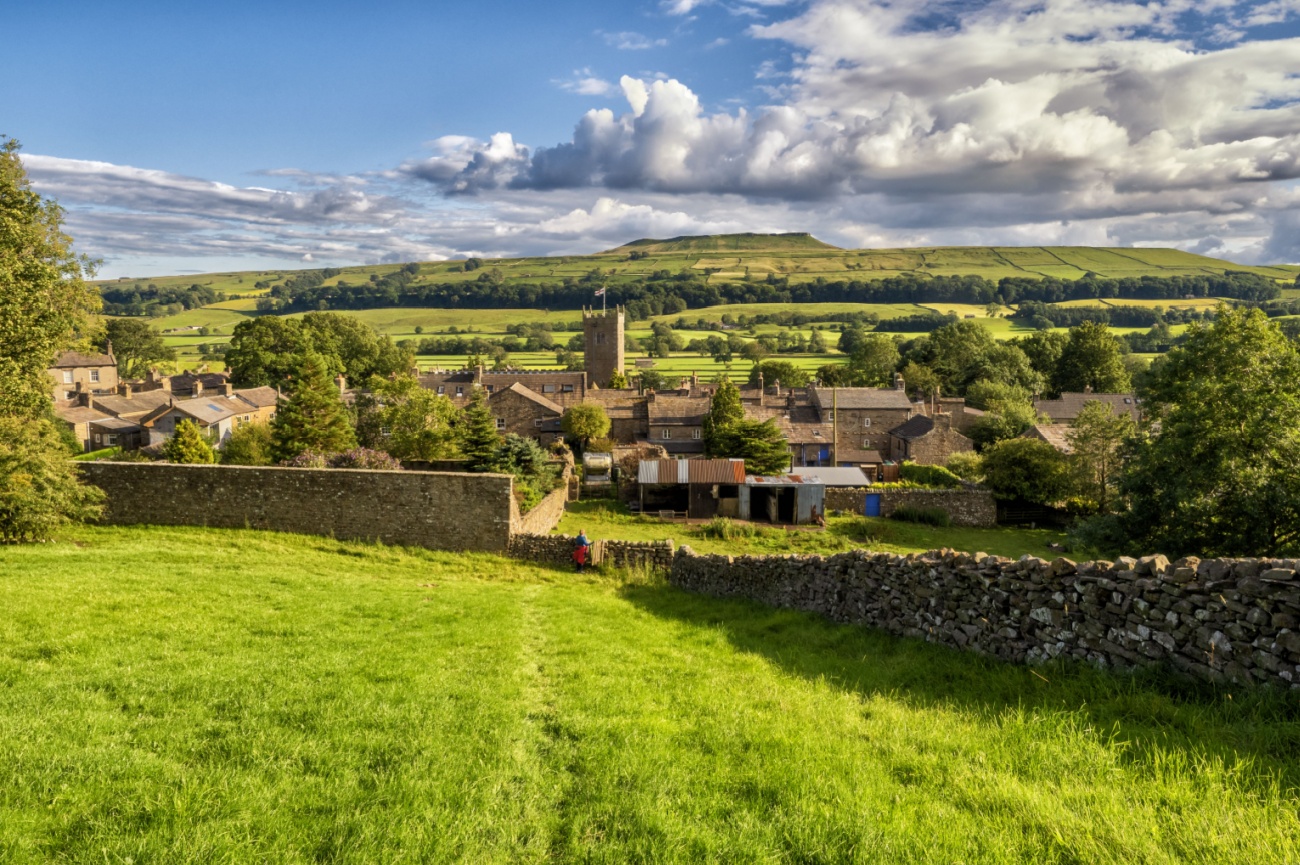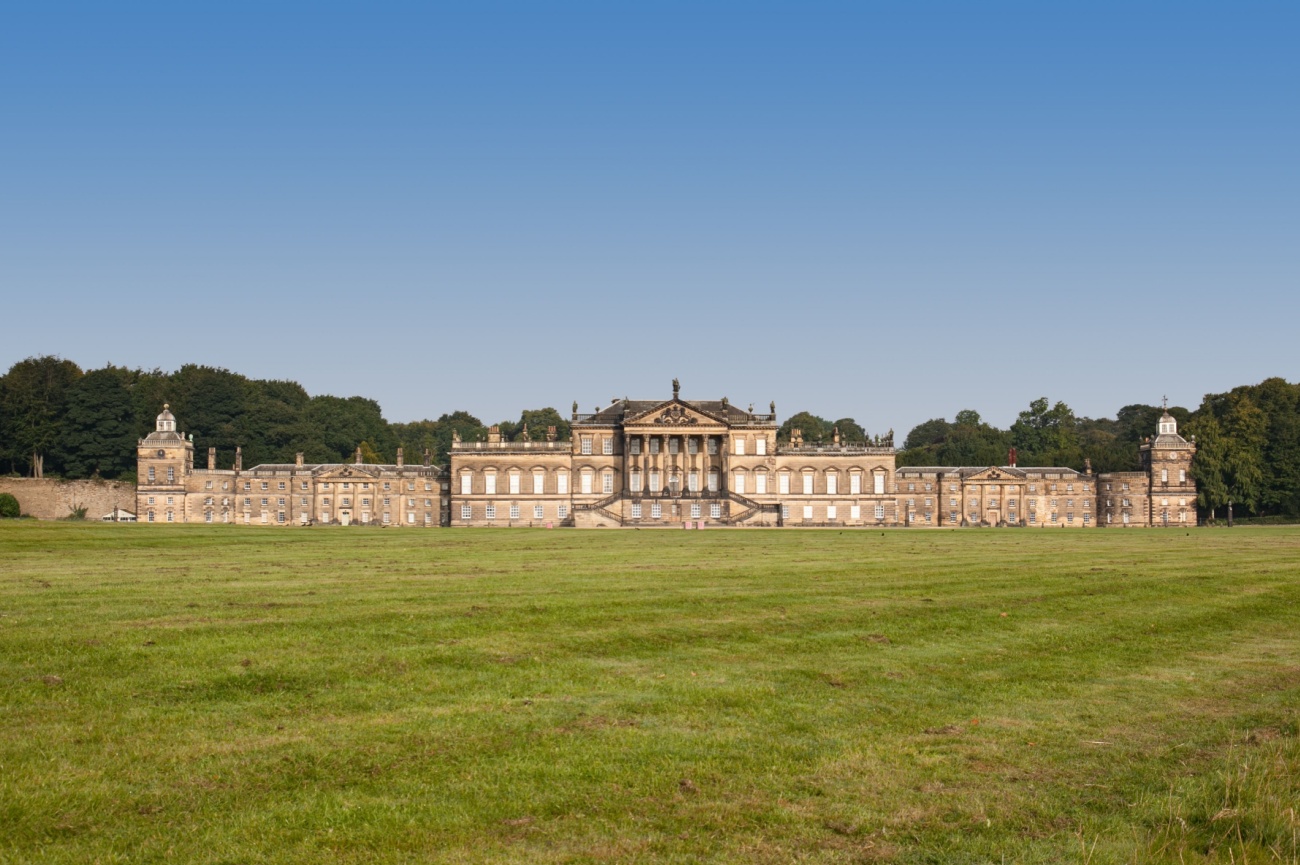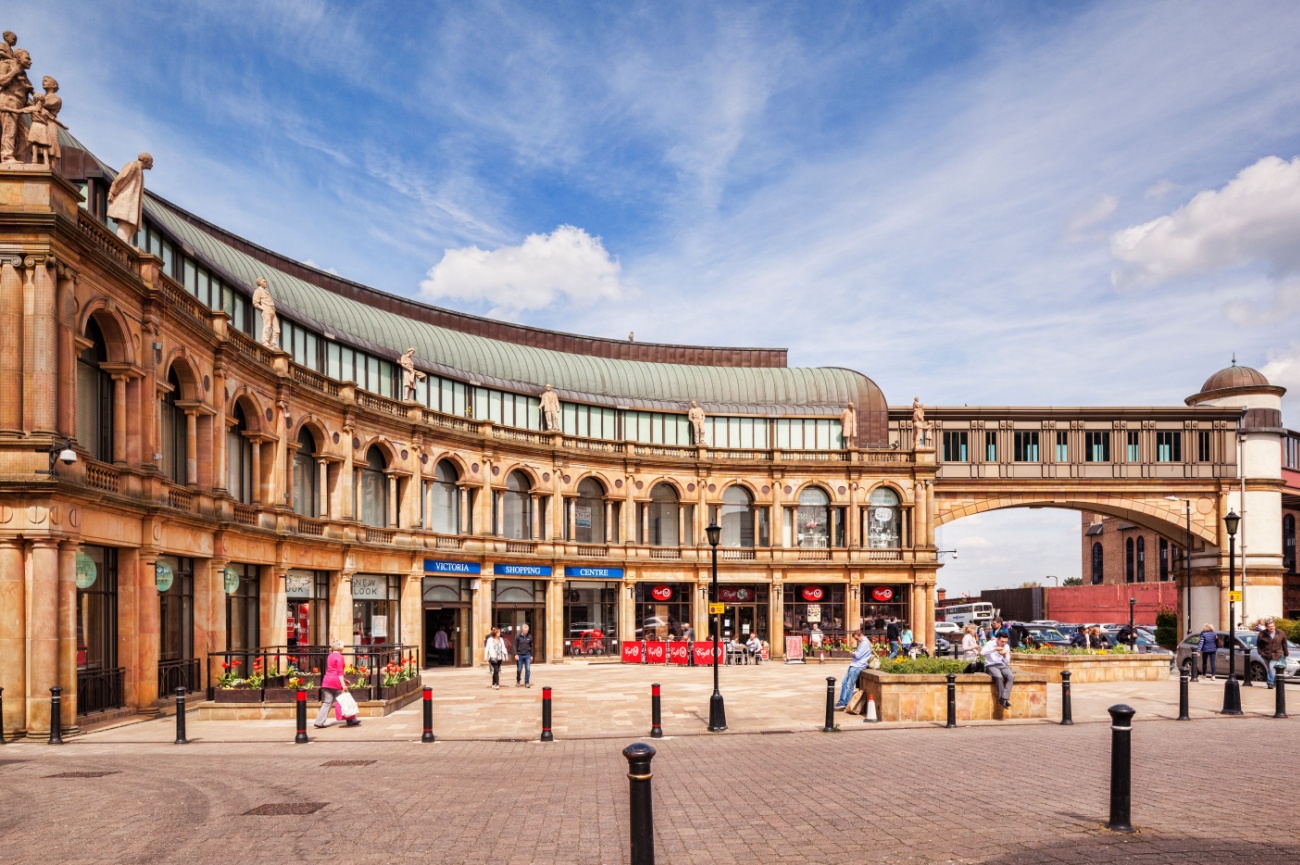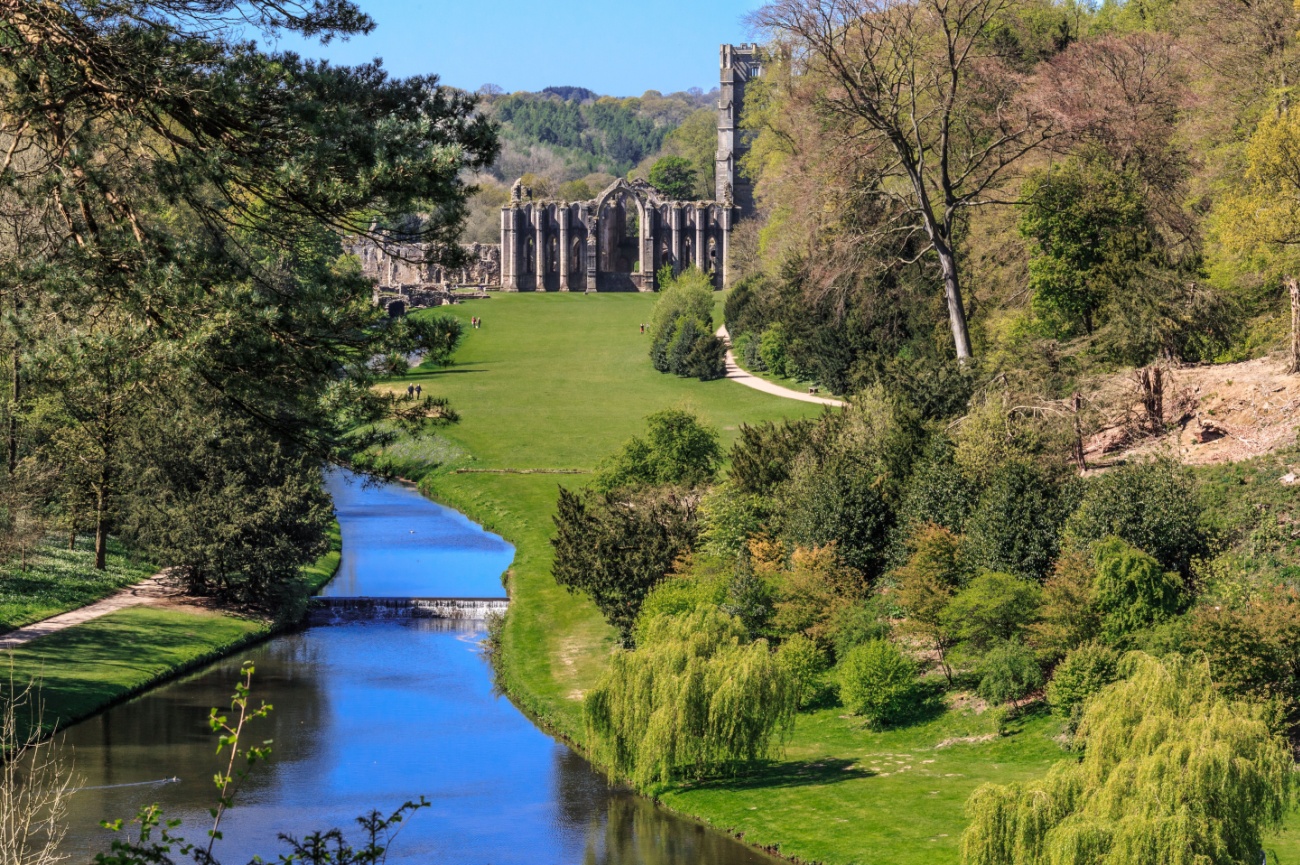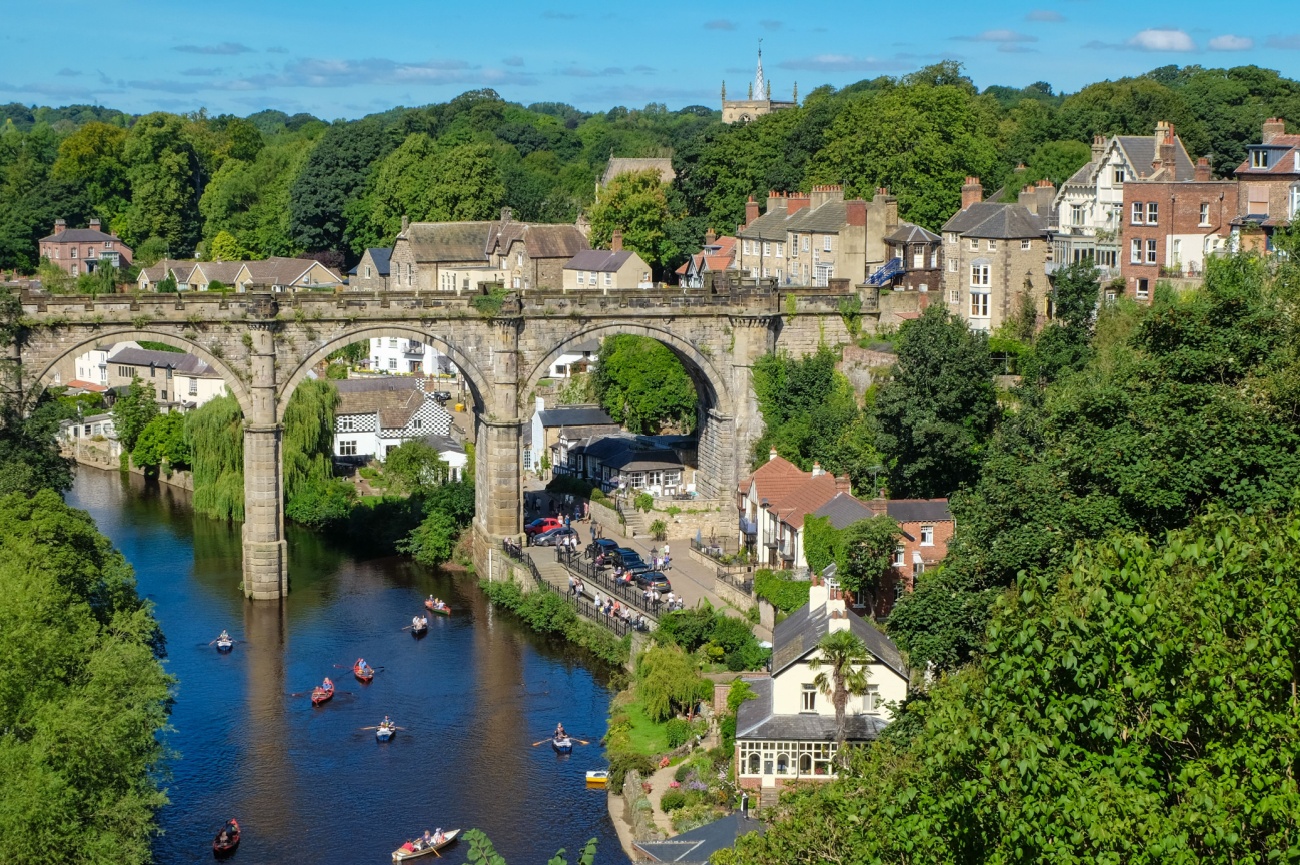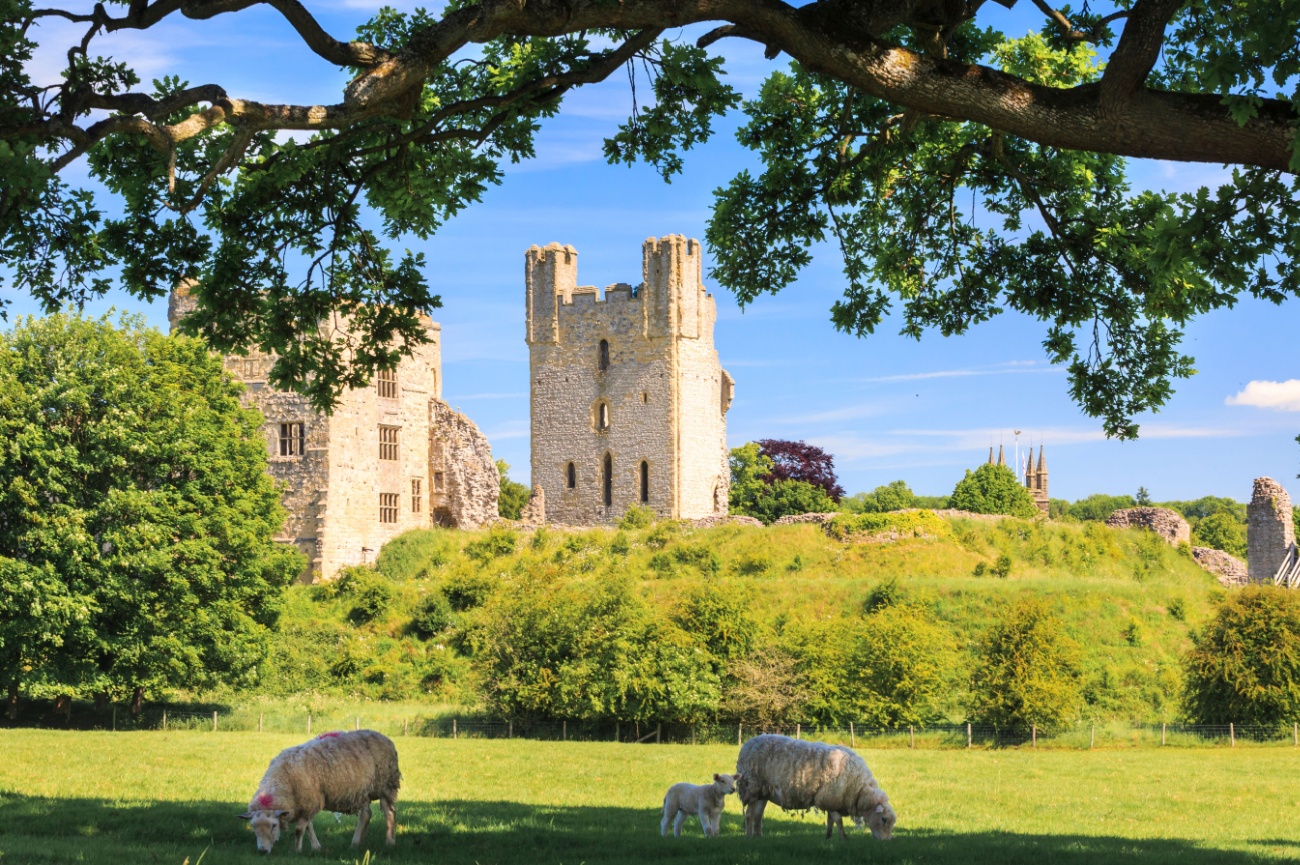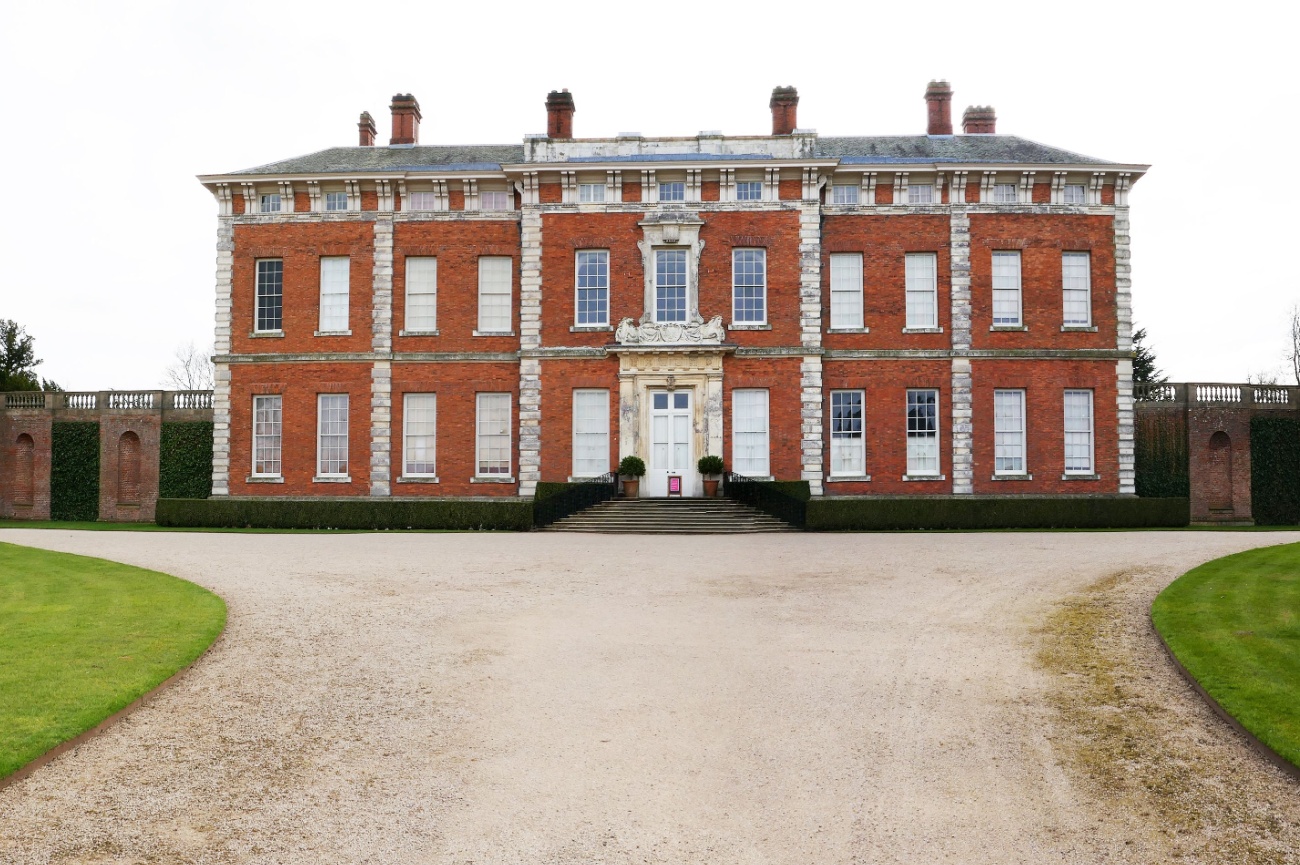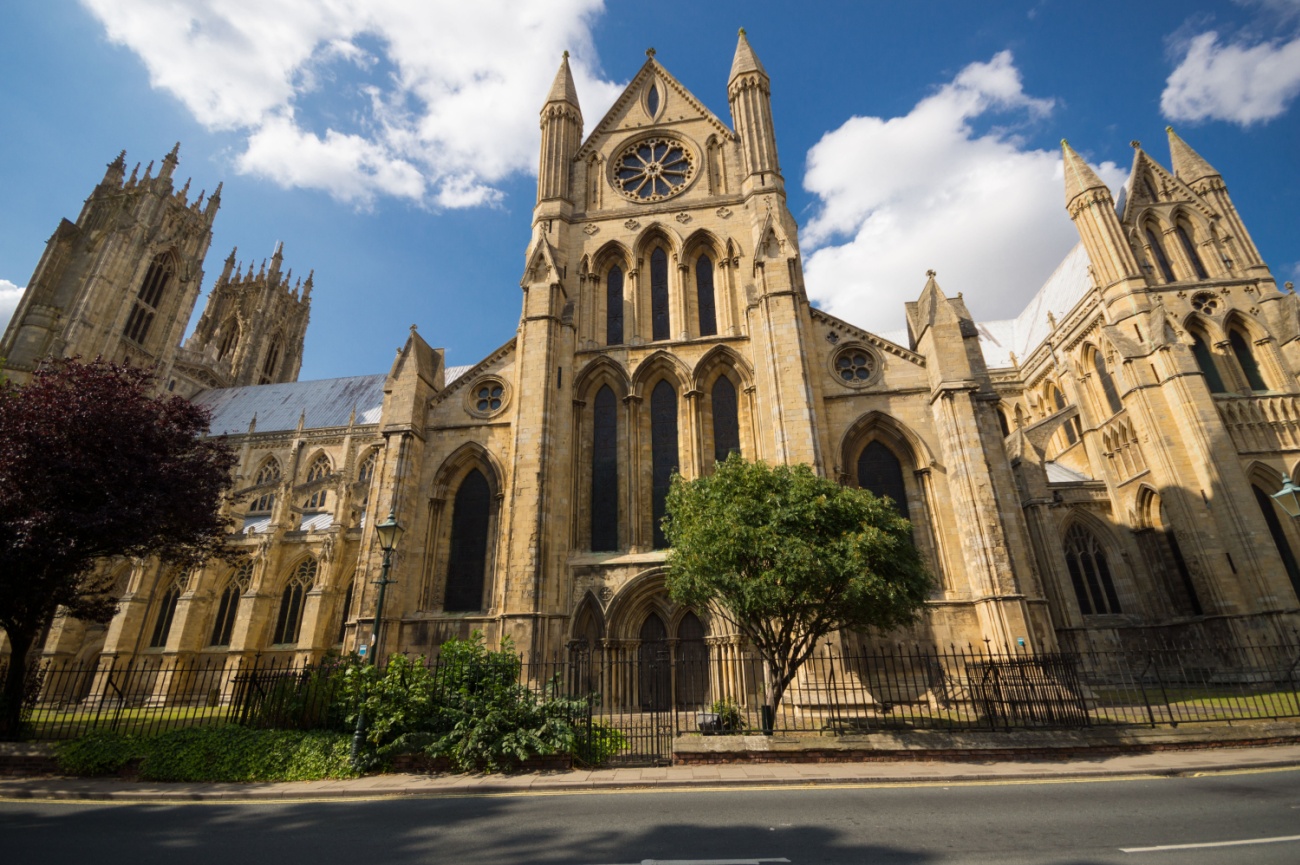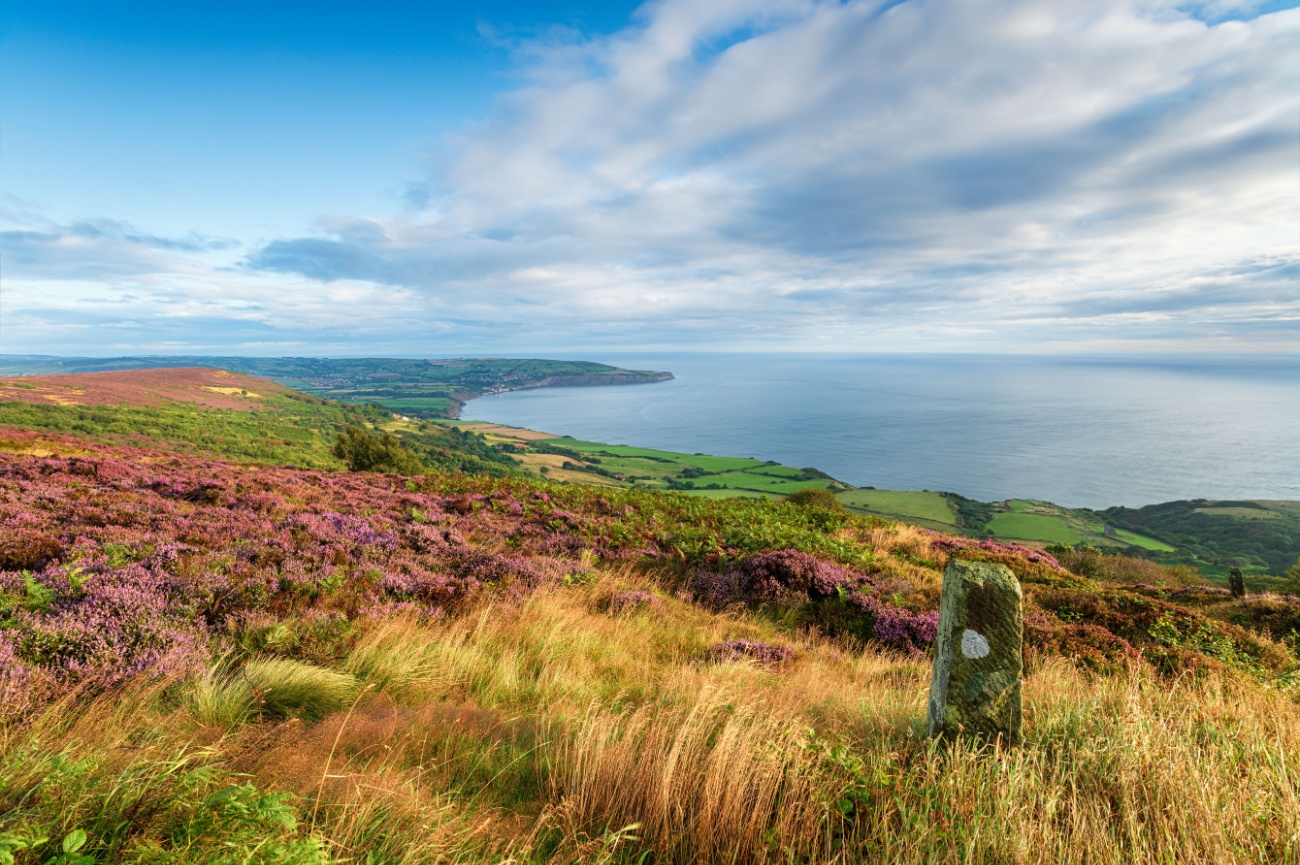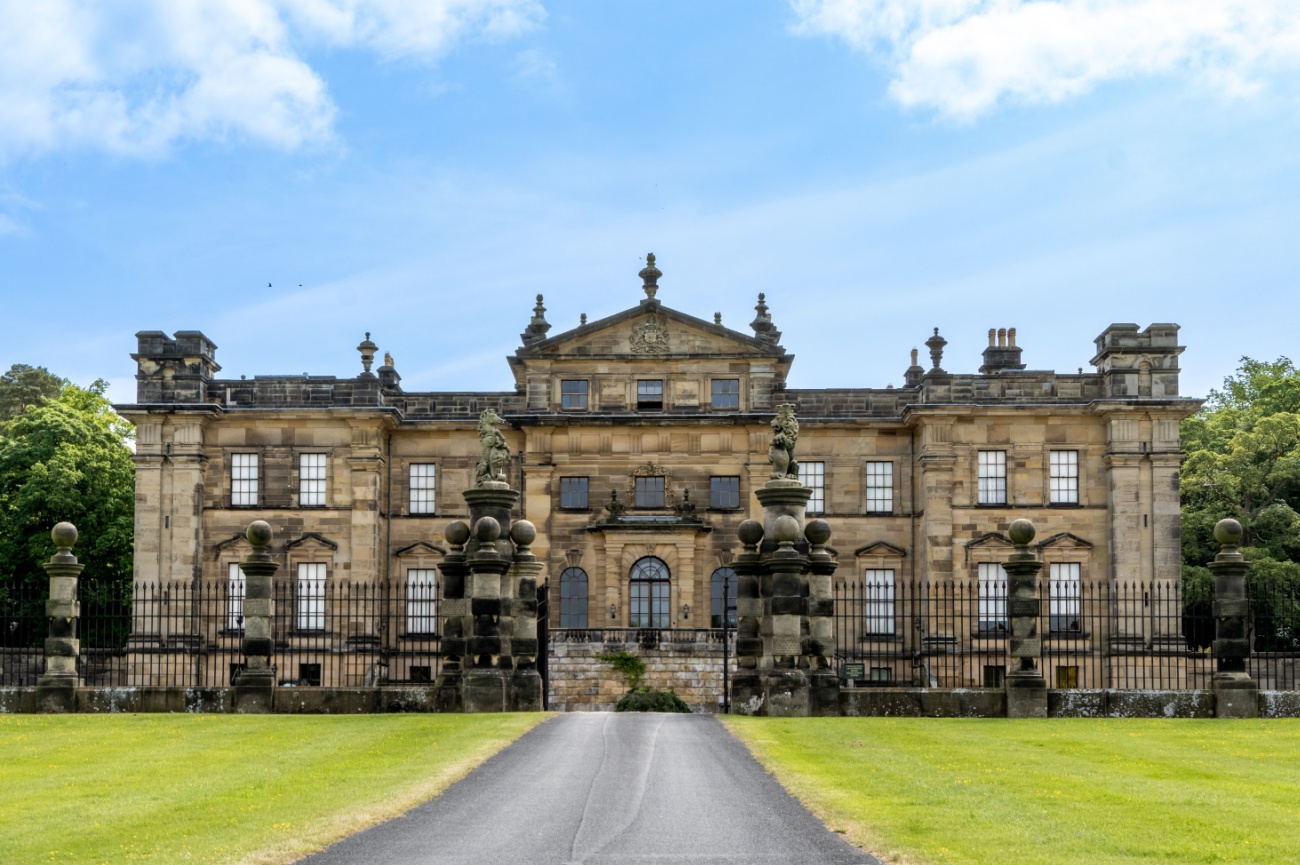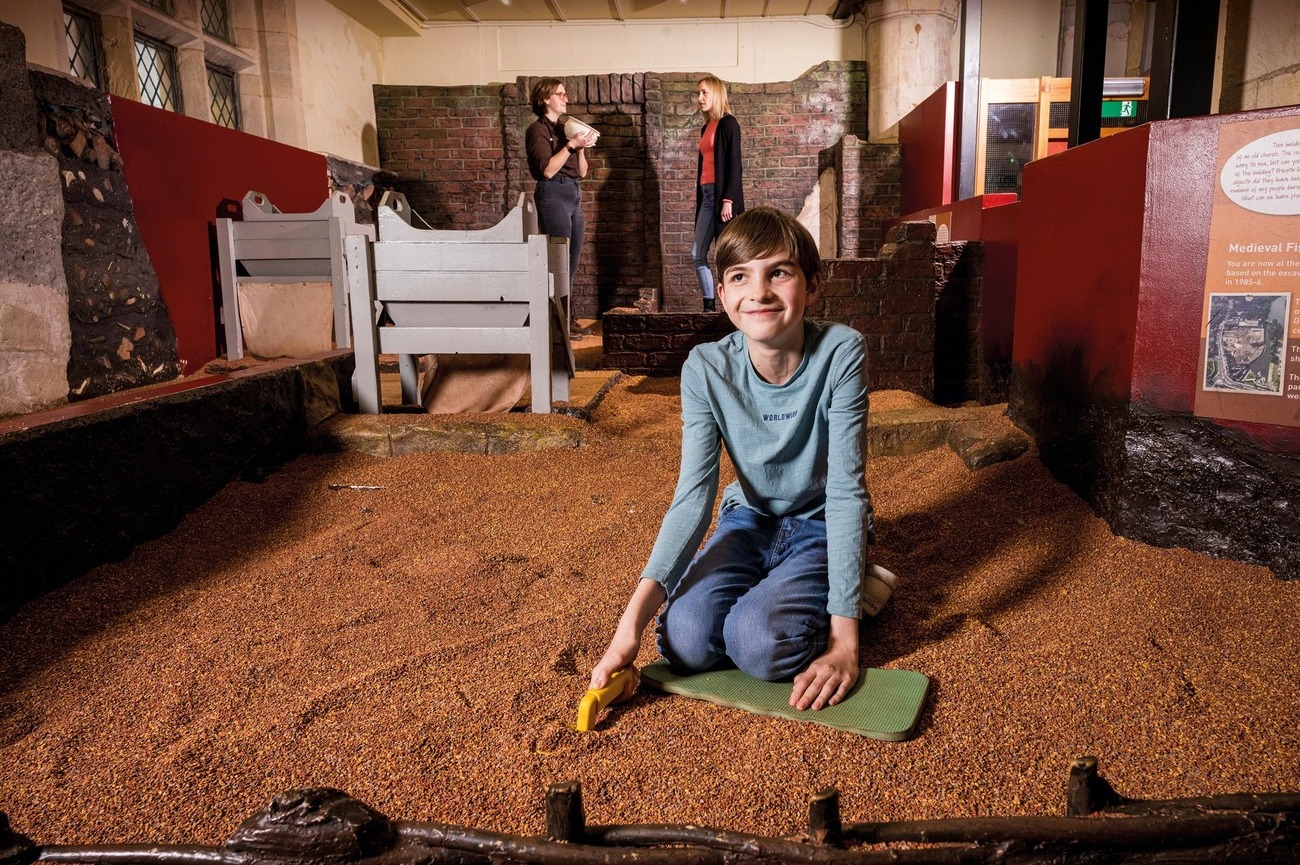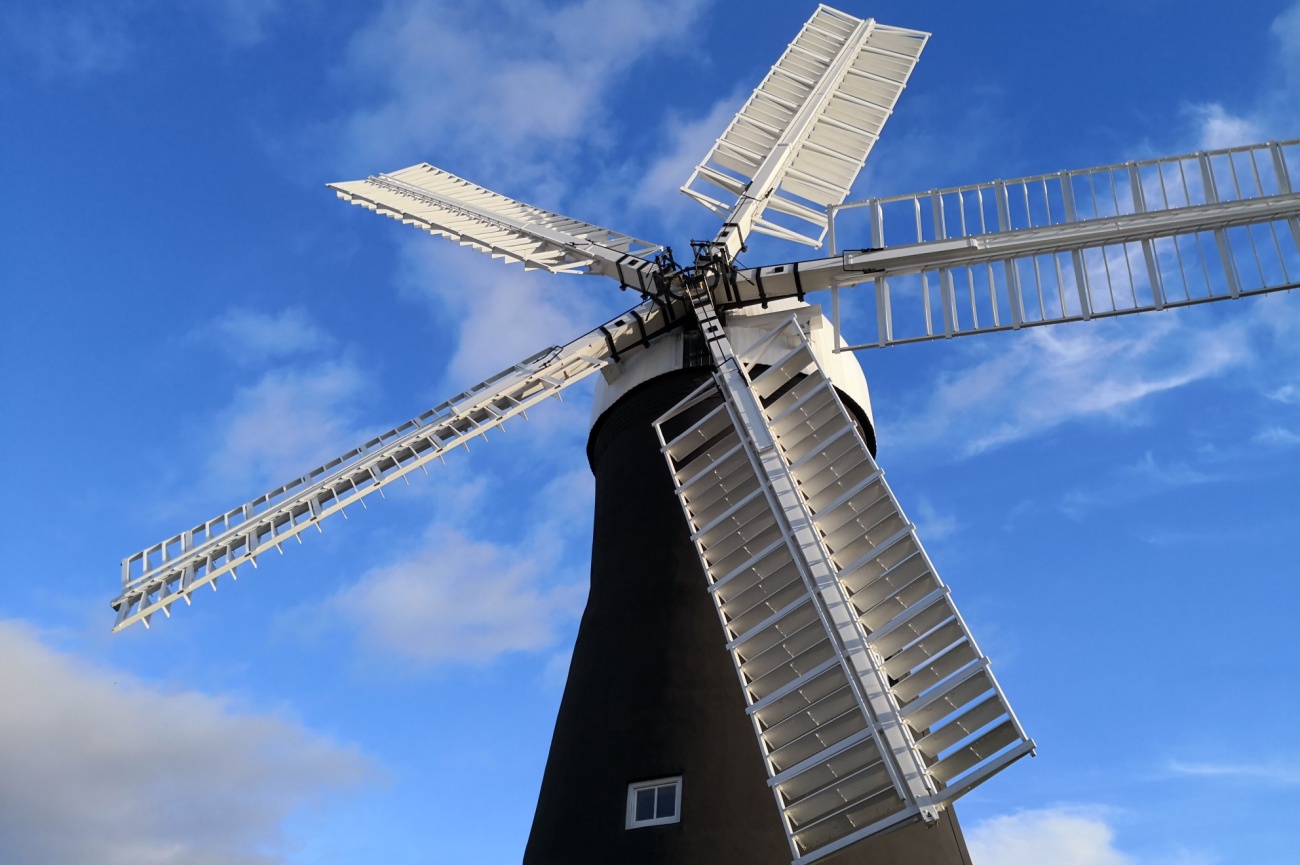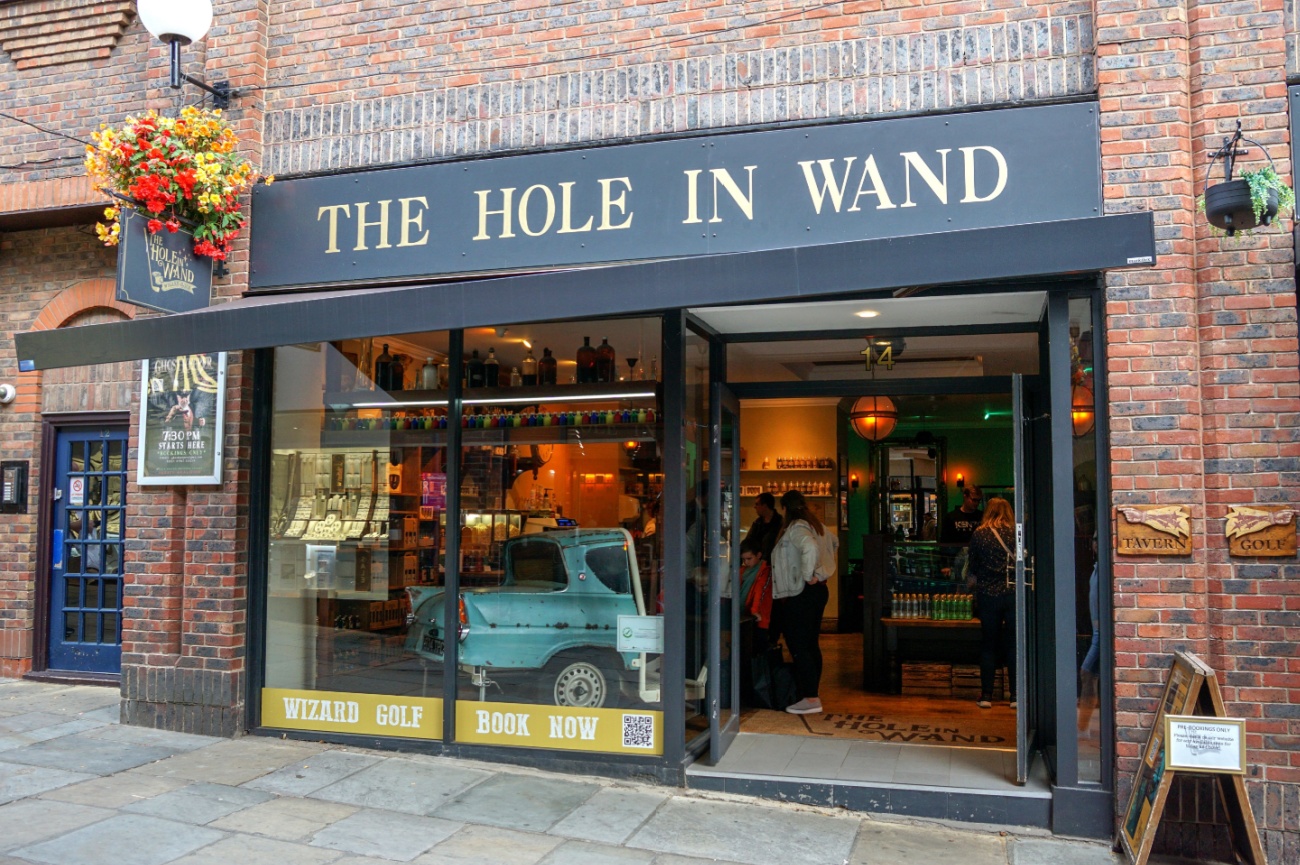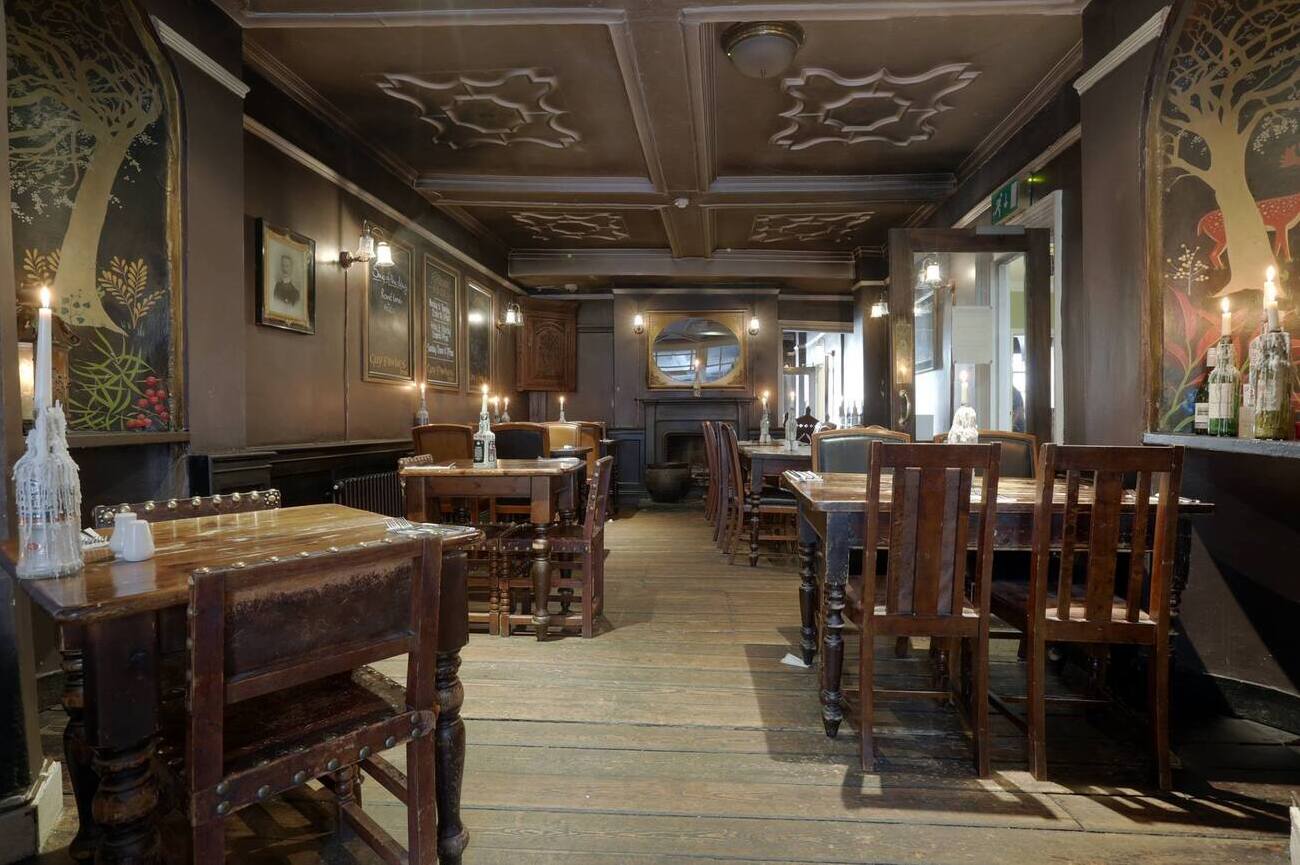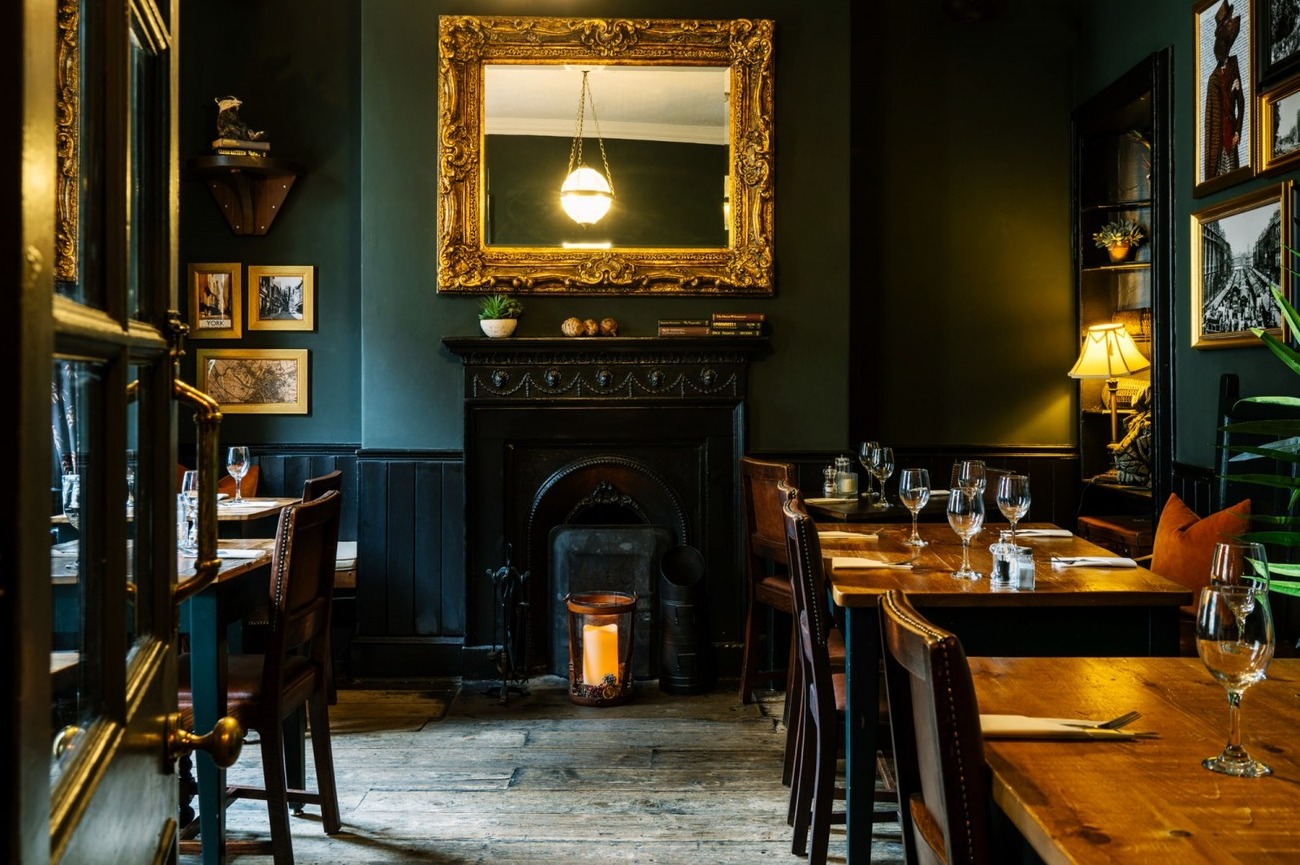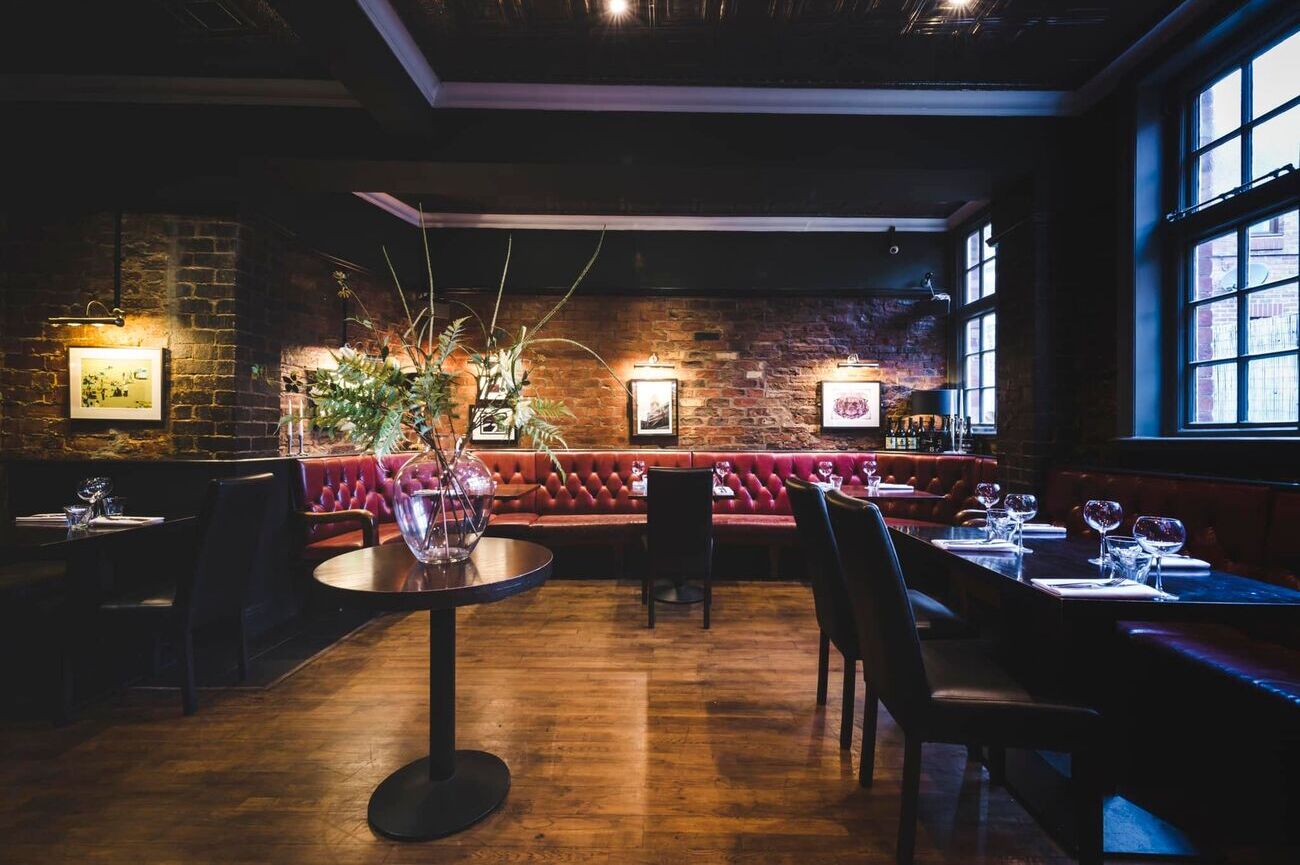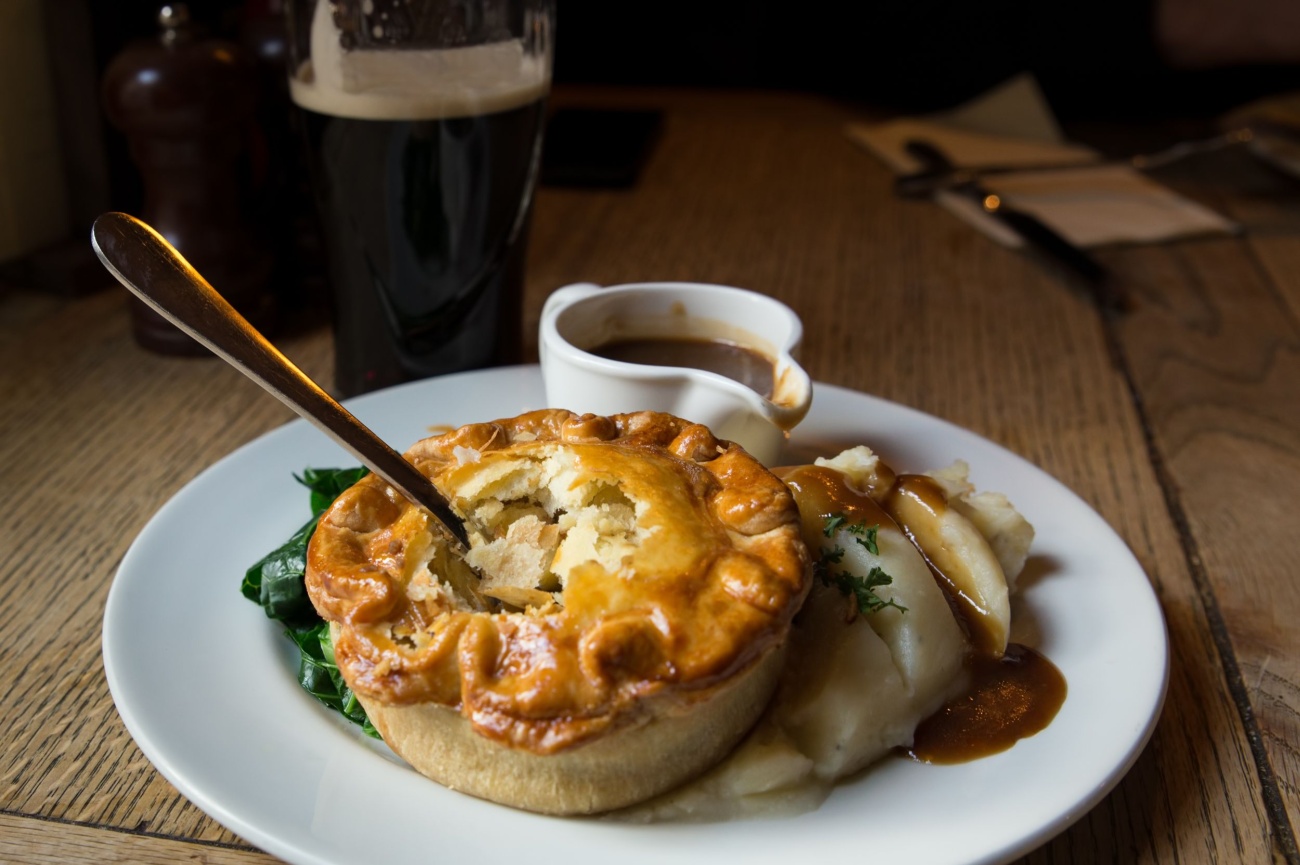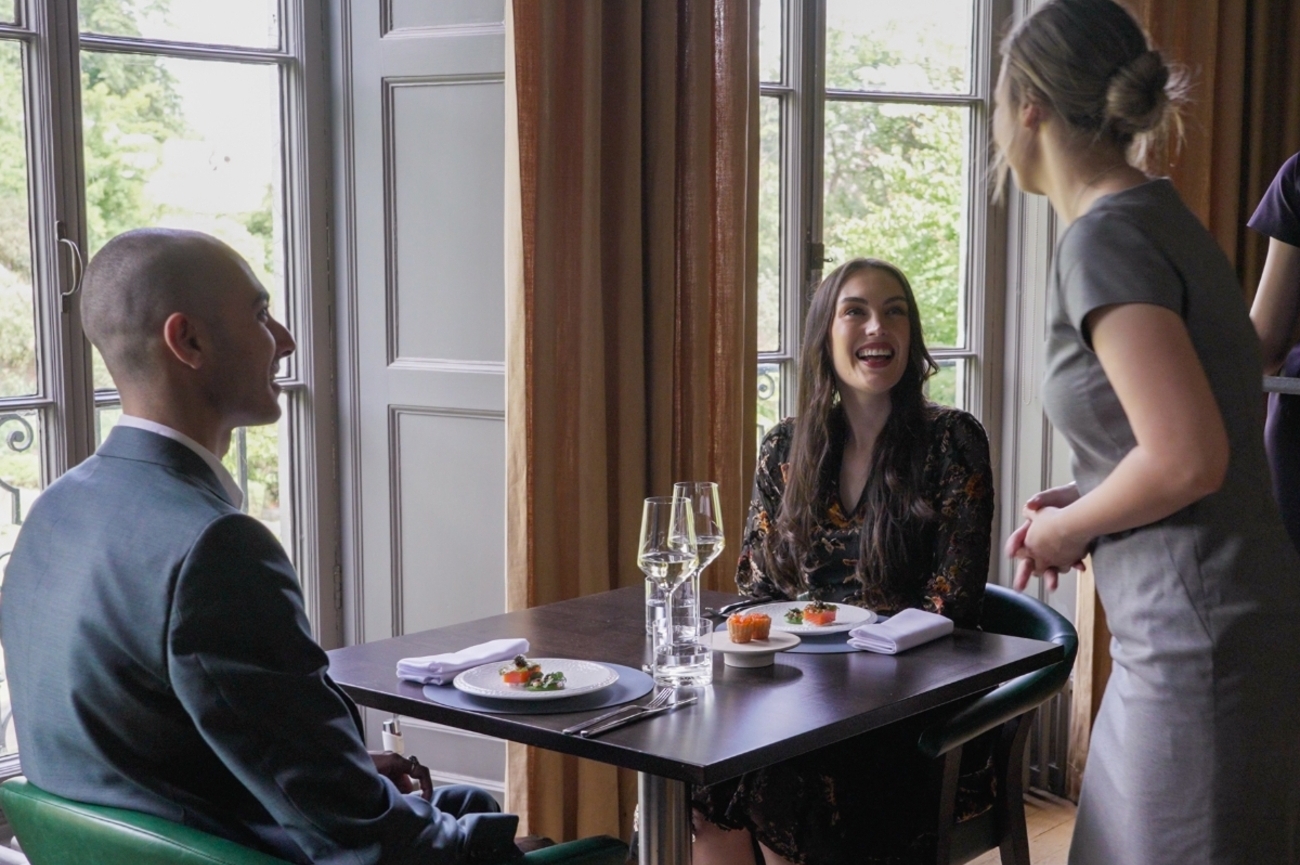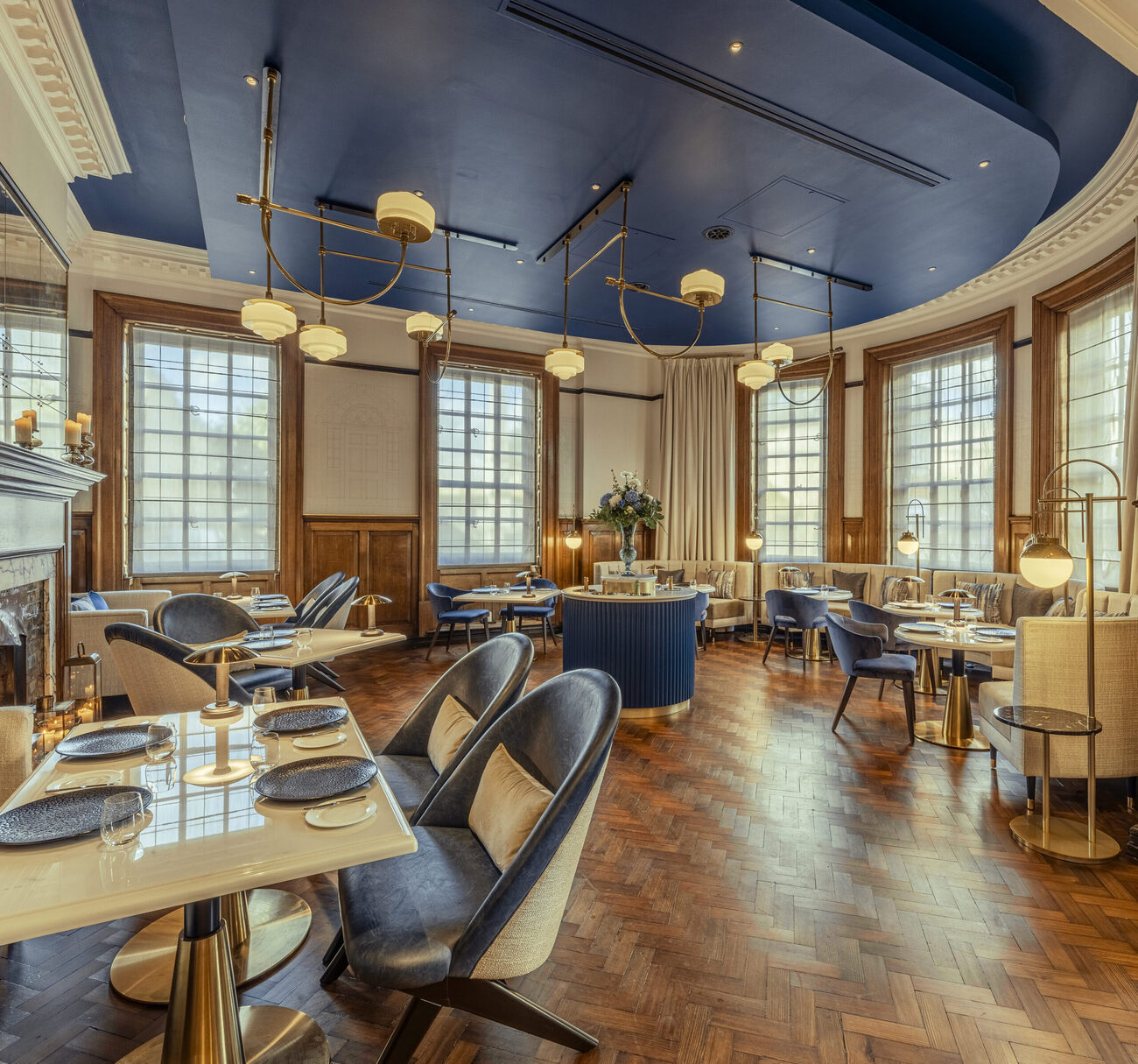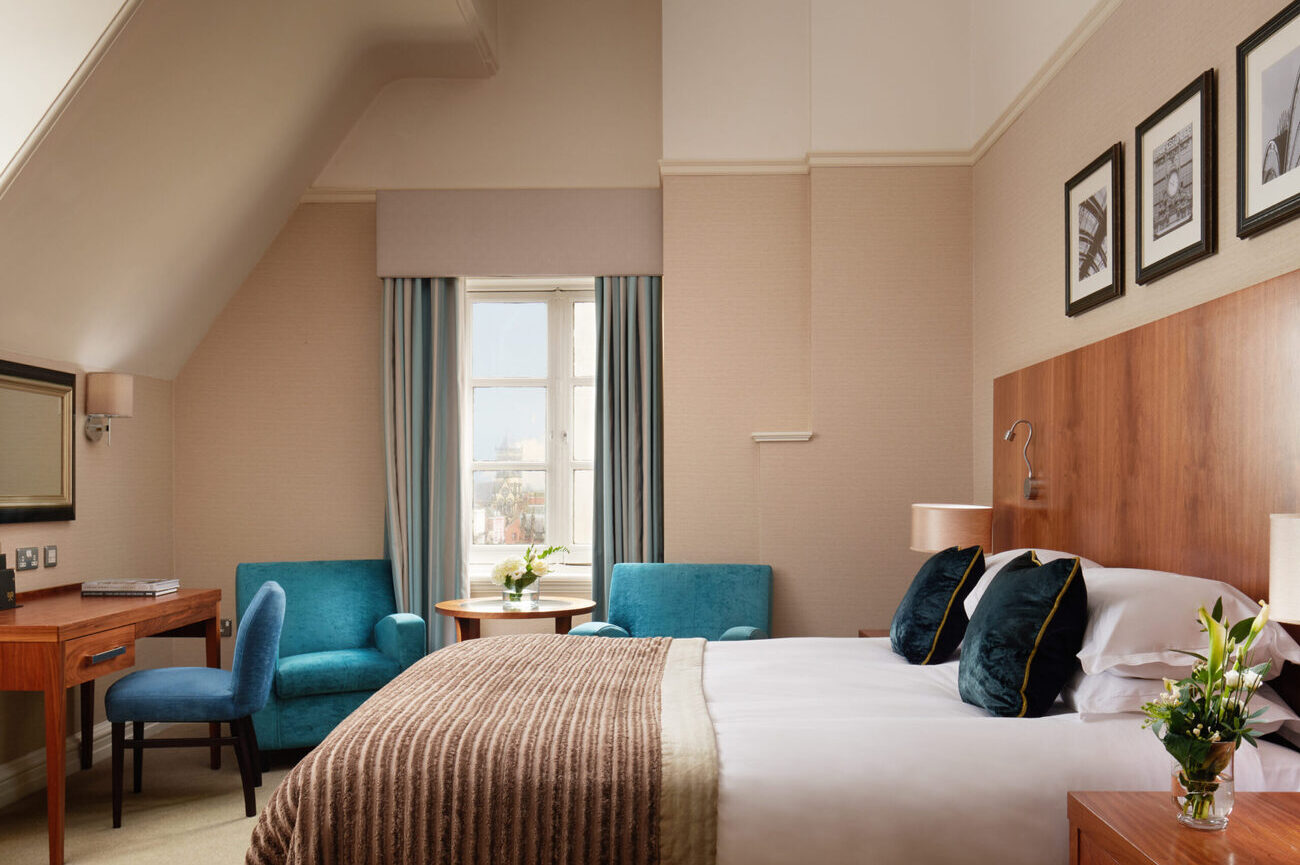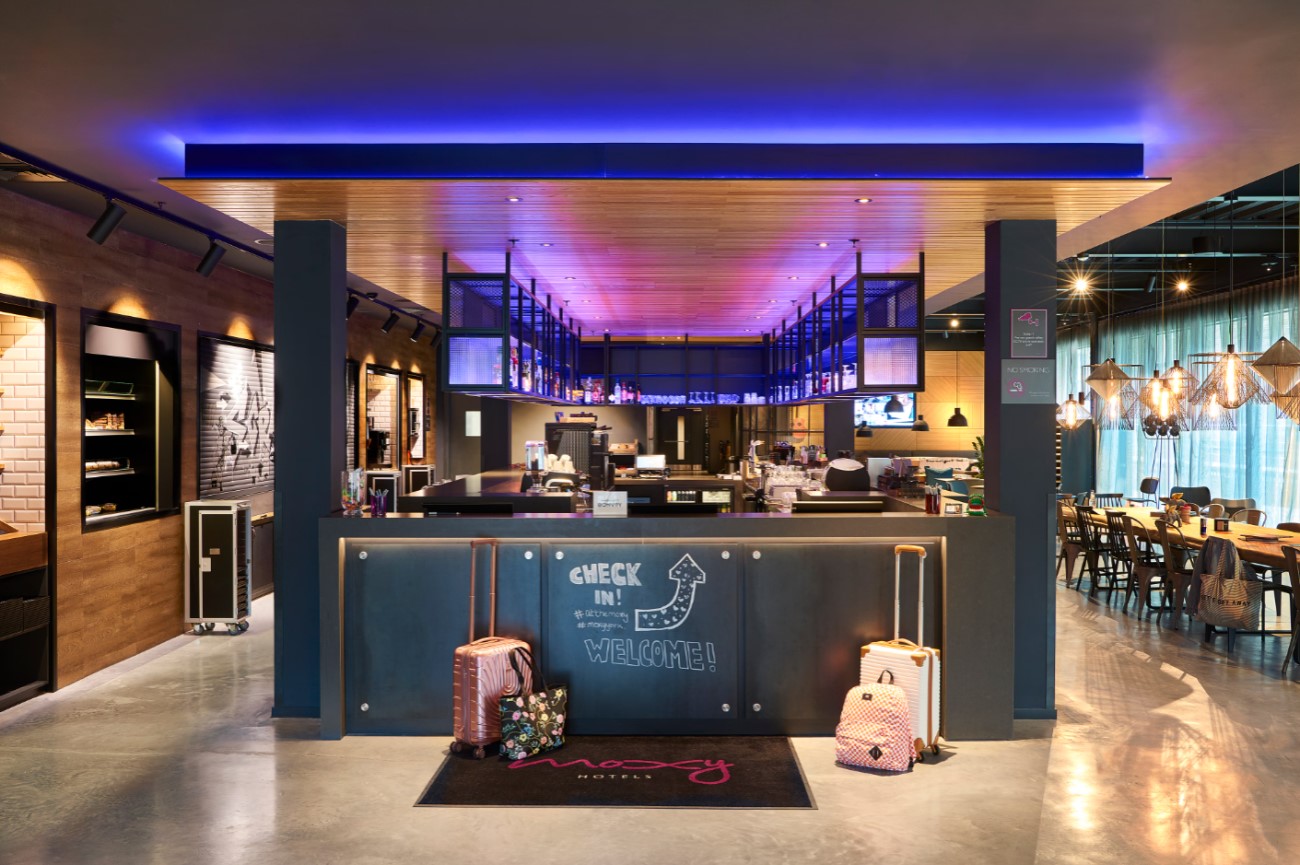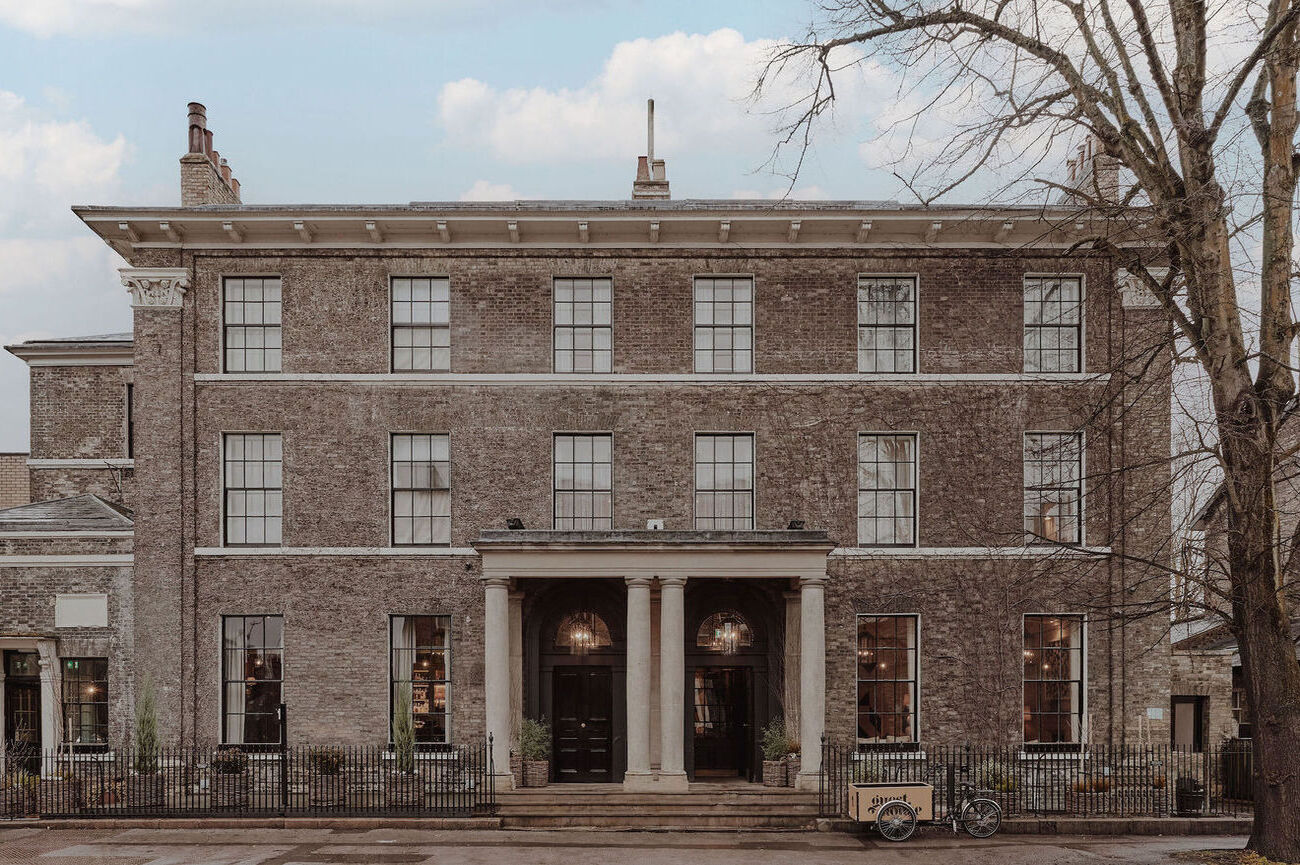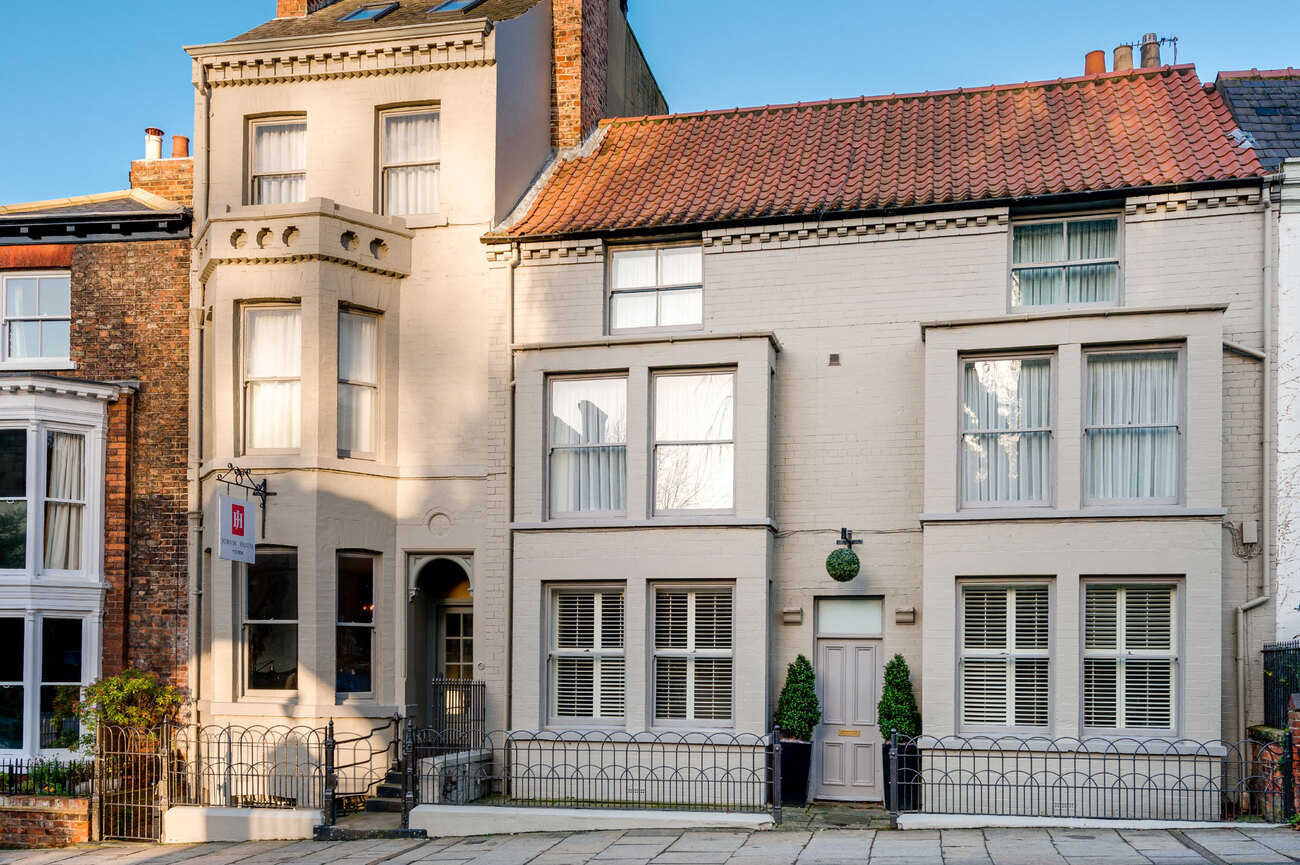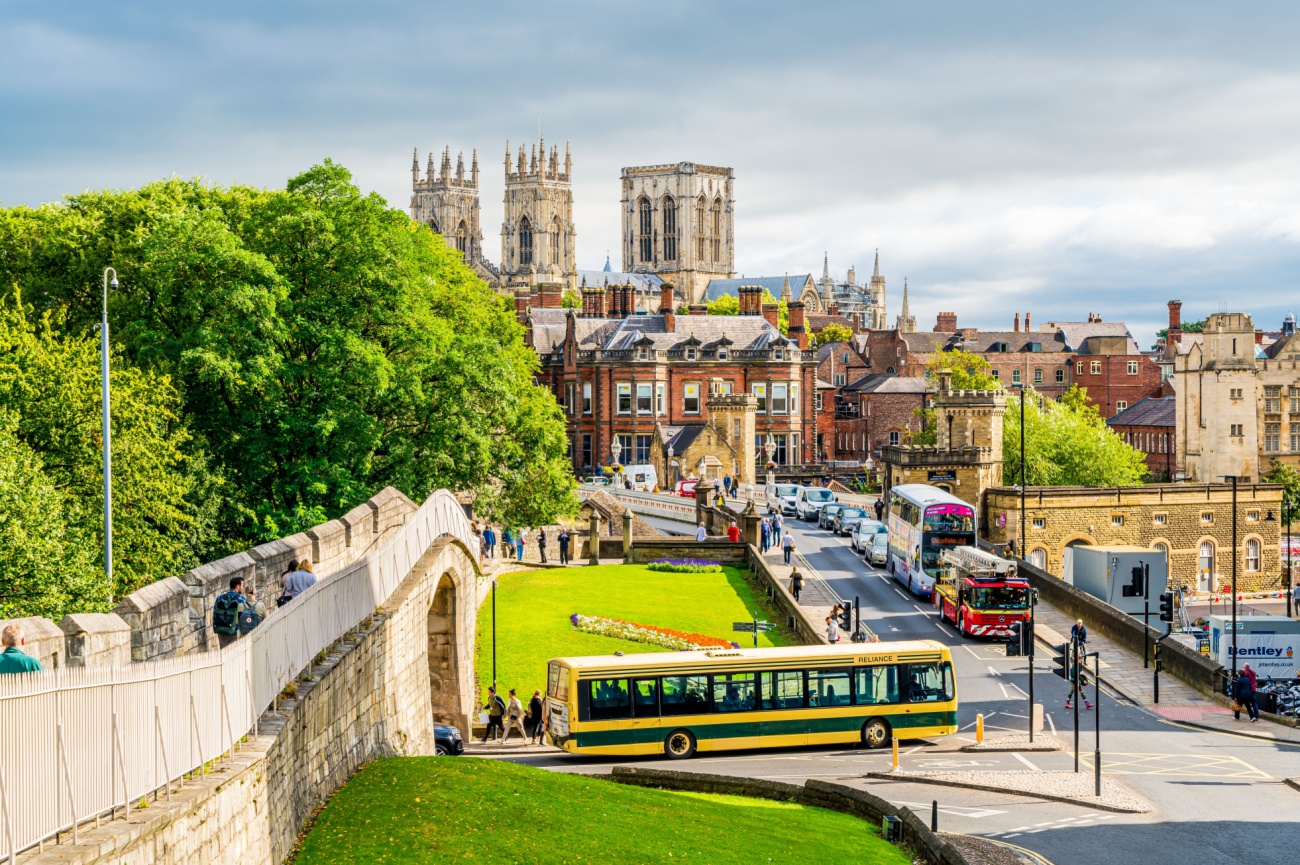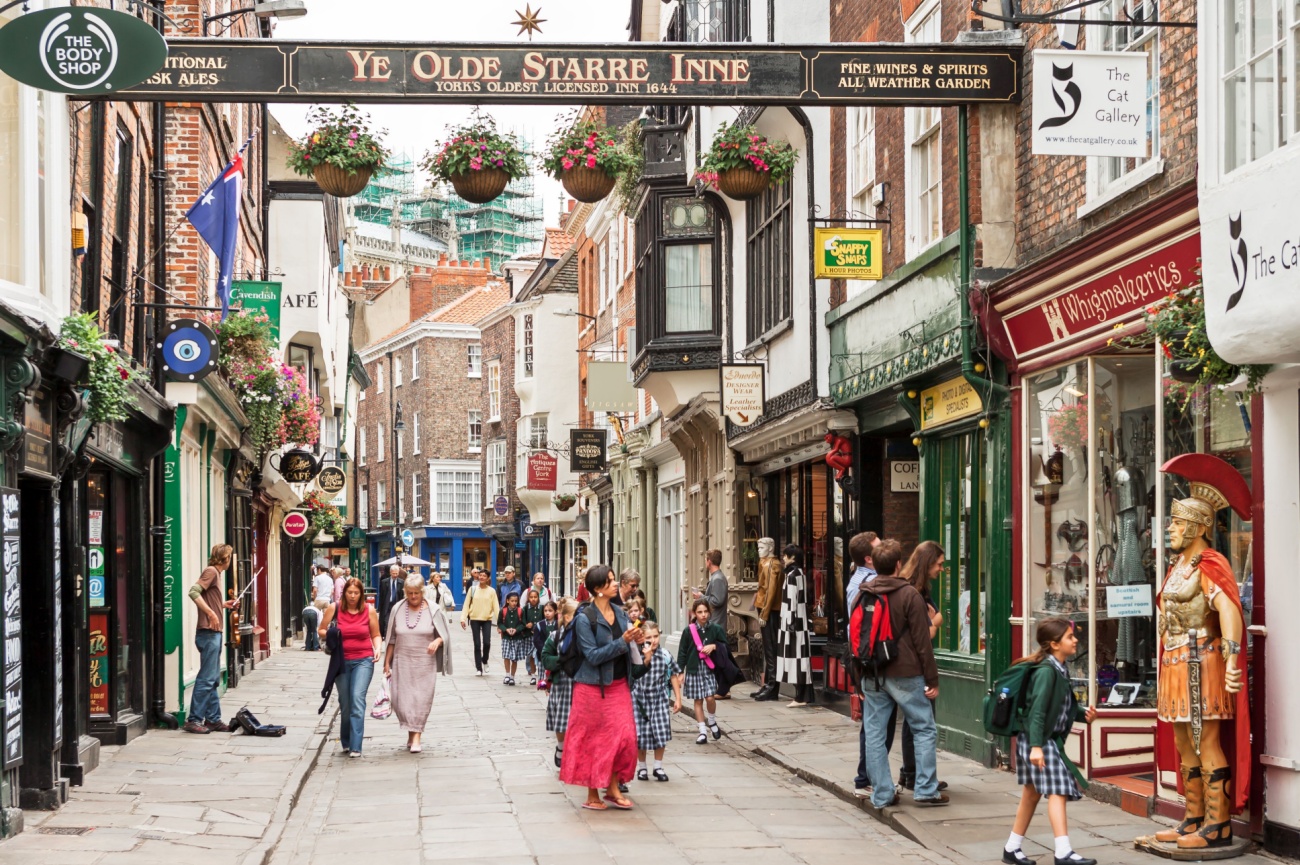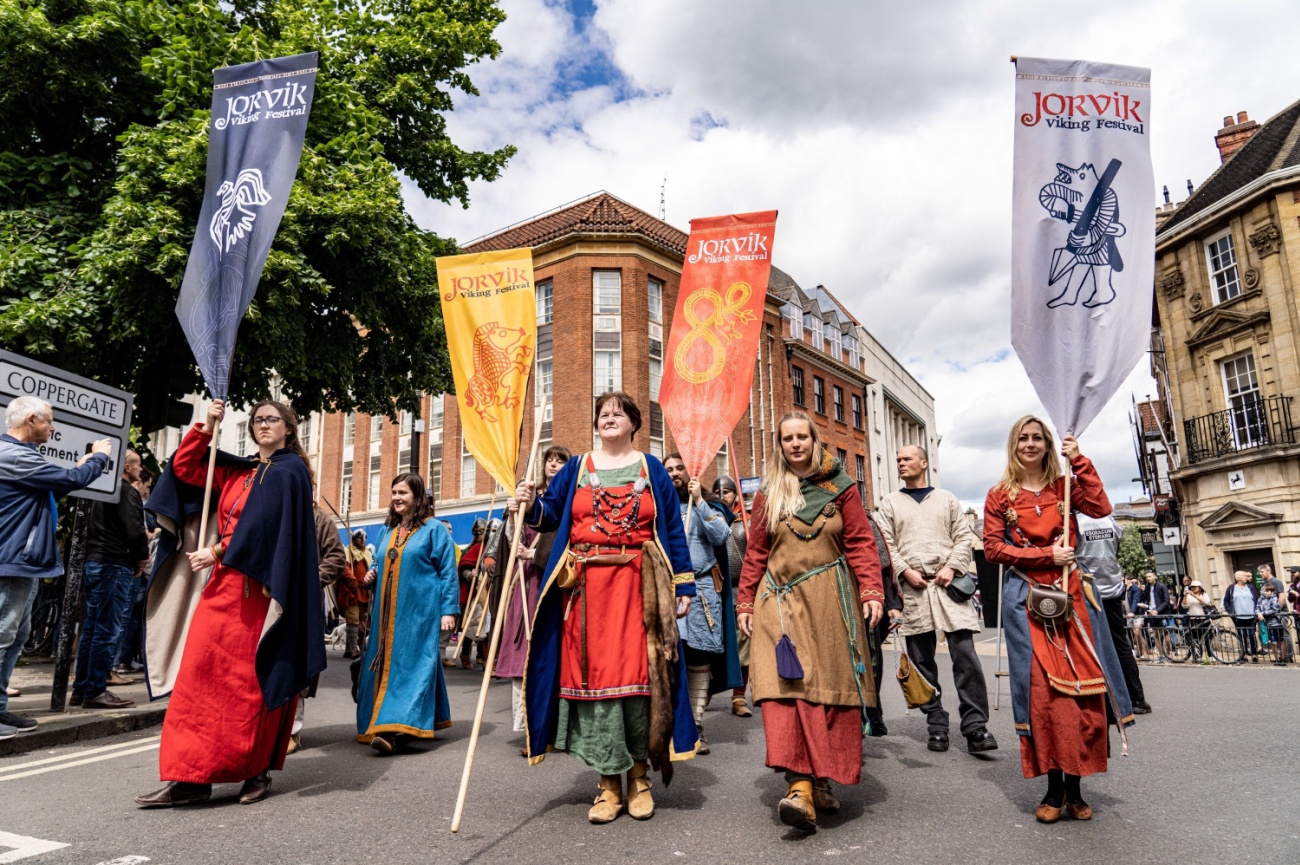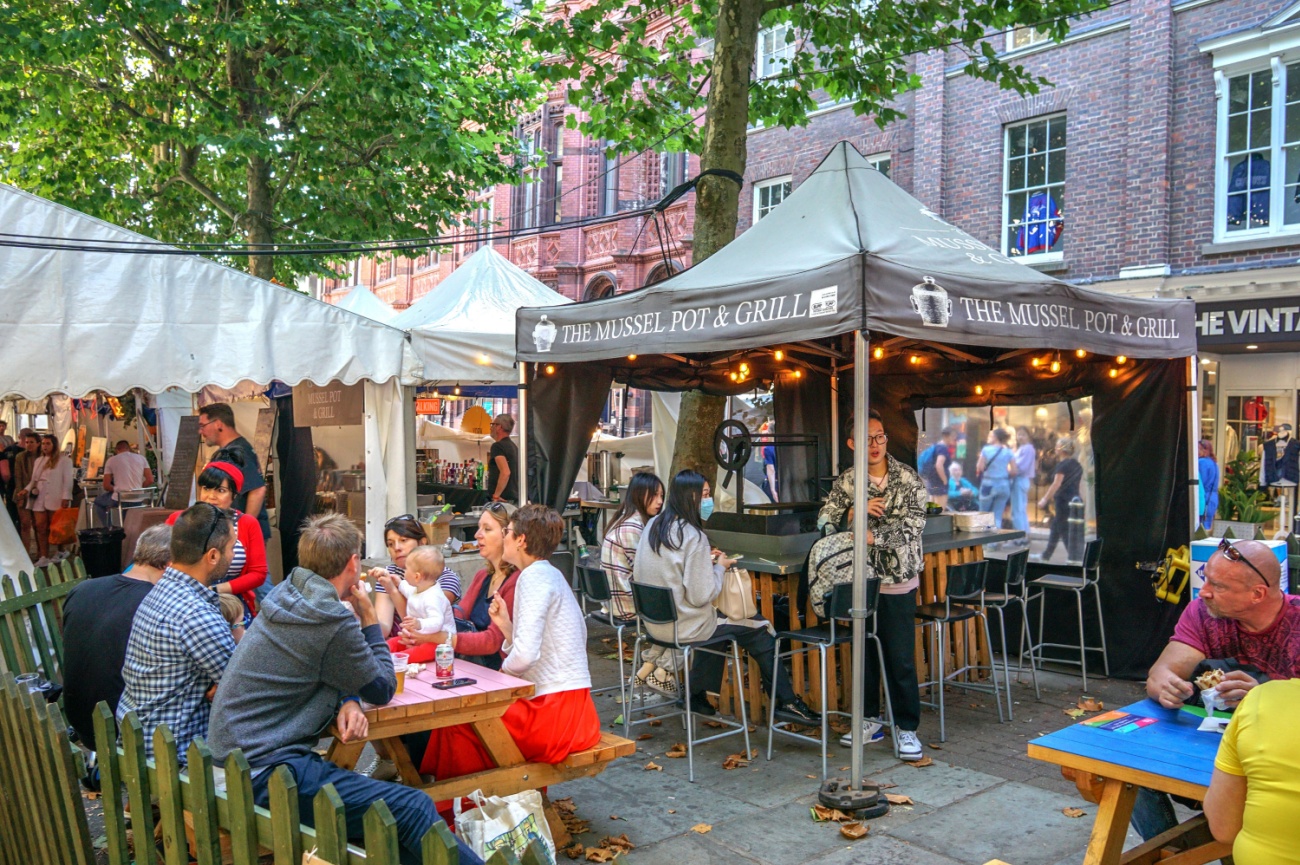Things to Do in York, UK: 2-Day Itinerary
York is a beautiful historic city in the north of England, dating back to Roman times. The Vikings later occupied the city, but most of the buildings you see today were built in Mediaeval times. They are particularly well-preserved, allowing you to take a step back in time. The narrow alleyway called The Shambles with its Mediaeval houses is unforgettable and needs to be explored.
The highlight of York is the massive Gothic cathedral, York Minster, towering over the city, but there are plenty of other attractions on offer. Museums abound, and there are historic houses to visit as well as green areas to relax in.
We have prepared a two-day itinerary taking in the highlights of York. However, if you have more time, we have suggested other places to visit both in the city and in the surrounding area.
Day 1

Morning: York Minster
There is no better place to begin your tour of York than at the cathedral, York Monster. There has been a church on this site since 627 AD, but the current cathedral was built between the 13th and 15th centuries in the Gothic style. It is a striking building with three towers, two on the west side and one in the middle. The middle tower is the highest point in the city, and it can be climbed. It is 71.6 metres high and there are 275 steps so it isn’t an easy task, but you will be rewarded with fantastic views of York.
You can tour the Minster on your own or you can take a guided tour which will tell you more about the cathedral. There are different tours on offer including one just on the stained-glass windows of which there are many. They are beautiful and date from the 12th century. Other highlights include stone statues from the 15th century depicting English kings from William the Conqueror to Henry II.
There is a museum underneath the Minster which tells you about the 2,000-year history of York. There are artefacts on show as well as digital displays.
York Minster is open every day apart from Tuesdays. You have to pay to get in with an extra fee to climb the tower, but it is well worth it.
York Art Gallery
A six-minute walk takes you to York Art Gallery which is open from Wednesday to Sunday. It has impressive permanent collections including 3,000 pieces of ceramics, 17,000 drawings and prints, 1,000 paintings from the 14th - 19th century, and 5,000 items of 20th-century pottery. It also hosts temporary exhibitions, so it is worth looking online to see what is on while you are in York.
York Museum and Gardens
A three-minute walk takes you to York Museum and Gardens next to the River Ouse which runs through the city. The gardens were set up in the 1830s and have an impressive display of trees, shrubs, and perennials. There are many gardens to explore such as the rock garden and the butterfly border which has a mixture of trees and plants providing nectar for bees, butterflies, and other creatures.
There are some interesting ruins in the gardens which are well worth visiting. You can see what is left of one of the most powerful Benedictine monasteries in the country, St. Mary’s Abbey, built in 1088. There are also the ruins of a Medieval hospital, built after the Norman Conquest, called St. Leonard’s. You can see a stretch of a fortress wall and a tower originally built in the Roman era but the upper half reconstructed in the Mediaeval period.
The Yorkshire Museum is the highlight of the gardens. It is one of the first museums built in England and contains statues and other artefacts from St. Mary’s Abbey. There is a collection with archaeological objects, another with geology specimens, and a natural history collection.
Memorial Gardens War Memorial
Cross the River Ouse and in seven minutes you will be at Memorial Gardens. It is a peaceful place to take a stroll and visit the War Memorial. The memorial remembers the 1,162 servicemen from York who died in World War I.
Day 1, Morning - York Tour Map
Afternoon: Micklegate
Bar & City Walls
Start your afternoon tour at Micklegate Bar. You could have lunch here as there is a good choice of eateries. When you leave Memorial Gardens to go to Micklegate Bar, you can join the city wall trail to get there. York is surrounded by city walls, and you can walk the whole way around if you want although they are 3.4 km long.
The city walls had four entrance gates and Micklegate was the most important as it was the entrance from the south of England and was the gate royalty used. However, the gate also has a grisly association as the heads of Richard, Duke of York and his son, Edmund, were impaled there.
Inside the gate, there is an interesting exhibition about the city walls with maps and video presentations telling the history of the walls. Unfortunately, it’s not suitable for wheelchairs as there are steep stone stairs.
The Bar Convent
The Bar Convent is right next door to Micklegate Bar and is the oldest surviving Catholic Convent in the UK. It was established in 1686 in secret because the Catholic Church was discriminated against. There is a beautiful chapel here, built in 1769, also in secret, before the repeal of the Penal Laws in 1791 when people were able to practise Catholicism in public without fear of persecution. It is now a museum giving information about the monastery’s history. There is a cafe in the museum.
National Railway Museum
A 15-minute walk takes you to the National Railway Museum which is the largest railway museum in the UK. It is free to enter, with some paid rides. Here you can see around 100 trains ranging from steam locomotives to modern electric trains. The trains on show may change but the one train that is always there is The Mallard, which is the fastest steam locomotive in the world, reaching 203 km/h on 3rd July 1938. The Flying Scotsman is sometimes sent out to other exhibitions but there is an exhibition about it.
As you are here in the afternoon, why not have a traditional afternoon tea at the cafe, the Countess of York. The service is exemplary, and you are assured an upmarket experience.
Day 1, Afternoon - York Tour Map
Day 2

Morning: York
Castle Museum
The museum is located on the former site of York Castle. All that remains of the castle is Clifford’s Tower. In the 18th century, a prison was built on the site but after it closed, the museum was founded in the same building.
The highlight of the museum is Kirkgate, a recreation of a late Victorian street. However, there is more to see such as a collection of iron stays, which were uncomfortable corsets from the 17th century. There are exhibitions about World War II and the Sixties, and you can see the cell that housed the infamous highwayman, Dick Turpin.
Clifford’s Tower
Clifford’s Tower is just a two-minute walk from the museum and was the keep of the castle, established by William the Conqueror. New walkways and staircases have opened up the tower and there is a new roof deck where you get fantastic views of York. While you are there you will hear some interesting stories about the Tower.
The York Dungeon
A four-minute walk takes you to The York Dungeon which is an exciting look at the dark history of York. It will enthral the whole family apart from the very young as it could be too scary for them.
The York Dungeon covers 200 years of history. There are actors in the dungeon dressed in period costume who bring history alive, portraying highwaymen, Vikings, Guy Fawkes and witches. You will see what the Black Plague was like and visit a torture chamber. The experience lasts for 75 minutes, and the special effects are fantastic.
The Jorvik Viking Centre
A three-minute walk takes you to the Jorvik Viking Centre. In the 9th and 10th centuries York and a lot of the north of England was occupied by the Vikings and this centre shows what life was like at that time.
Your visit begins with a ride taking you through a reconstructed Viking village. You then visit a gallery with artefacts from the Viking period which have been found in the city. There are staff in costumes who demonstrate crafts from that time.
Day 2, Afternoon - York Tour Map
Afternoon: Merchant
Adventurers Hall
Start your afternoon tour by visiting the Merchant Adventurers Hall. If you haven’t already found somewhere for lunch, you can eat here.
This is a Medieval Guild Hall which is still home to the Merchant Adventurers who have a history going back 600 years. Visit the magnificent Great Hall where the Merchants gather to conduct business. The Undercroft Hospital is here and gives you an idea of what healthcare was like many years ago. You can also visit the chapel. Throughout, you will see beautiful furniture, silver, and paintings.
The Shambles
A few minutes’ walk takes you to The Shambles which is one of the narrowest streets in England. On either side are 14th-century well-preserved timber-framed buildings. Just off the street, you will find Shambles Market where there are more than 70 stalls selling a wide variety of products from food to clothing to craftwork. There are many cafes and pubs in the area so you may want to have a drink here before continuing your tour.
York’s Chocolate Story
Close by, you will find York’s Chocolate Story. York is famous for producing chocolate with Nestle UK being based here and Rowntree making Kit Kats in the city. York’s Chocolate Story tells you about the history of chocolate in York. You will find out which companies have made chocolate here and how it is made. Then you get a chance to make some chocolate and of course, there is an opportunity to try some.
Bettys Cafe Tea Rooms
The final stop is Bettys Cafe Tea Rooms where you can have a traditional afternoon tea or Yorkshire cream tea. Betty’s is an institution in York that has been in operation since 1919.
Day 2, Afternoon - York Tour Map
Other Things to See in York
- River Cruise on the Ouse: Take a cruise on the River Ouse with City Cruises and enjoy stunning views of York Minster, Clifford’s Tower, and other sights in the city. It runs all year round and in the summer you can enjoy the trip from the top deck and in the winter, from the enclosed cabin. The cruise lasts for 45 minutes, and the boat has a full bar.
- Evening Ghost Tour: York has the reputation of being one of the most haunted cities in the UK and, because of this, offers ghost tours in the evenings. There are walking tours like the Bloody Tour of York where Mad Alice tells scary stories of York’s dark past. There is also a ghost bus tour which is more family friendly. The bus travels through York and you will hear stories about the spirits at Clifford’s Tower and York Minster as well as tales of the highwayman, Dick Turpin.
- Treasurer's House: This National Trust property once belonged to a wealthy Yorkshireman, Frank Green. Now it is open to the public displaying a beautiful collection of ceramics, antique furniture, and paintings which belonged to Frank. If you need refreshments, there is a cafe here serving a seasonal menu.
- Fairfax House: Viscount Fairfax, a landlord and politician, lived in Fairfax Houe during the winter months. It is a Georgian house which became a cinema and ballroom in the 1920s. However, it has now been restored to its former glory and houses a collection of furniture, paintings, and clocks which belonged to Noel Terry who was the chairman of Terry’s Confectionery, a famous chocolate brand in the UK.
- York Cold War Bunker: The York Cold War Bunker was built in 1961 to monitor nuclear fallout in case there was a nuclear attack in Yorkshire. It is on two stories, and you can visit on a guided tour which must be pre-booked.
- Rowntree Park: This is a lovely park which has an ornamental lake with ducks and geese. Half of the lake is reserved for model boats and the park has lots of activities to entertain young and old, such as tennis courts, a skate park, a basketball court, and a children’s playground. However, it is on the River Ouse floodplain so can be closed if the water levels are high.
- Mansion House: Mansion House was built in 1732 for the Lord Mayor who still lives there. However, you can visit the Georgian house and explore the bedrooms and dining room. As well as period furniture, you will see beautiful collections of silverware and ceramics.
- Barley Hall: Barley Hall is a Mediaeval townhouse that has been restored so that you can see what it was like back then. The exposed timber frames are impressive, as are the high ceilings. The Great Hall is set up for a Mediaeval feast so you will get a glimpse into the past.
- Goddard’s House and Garden: This is an arts and crafts house which belonged to Noel Terry of the Terry confectionary company. The house isn’t open to the public, but you can enjoy the gardens. They cover 5 acres with hedges and shrubs dividing the area into different gardens such as the rock garden and the herbaceous borders. There is a wildlife pond and a working greenhouse, and it is a peaceful space to spend a little time.
- York Army Museum: The York Army Museum houses some of the most important regimental collections in the country including that of the Royal Yorkshire Regiment and the Royal Dragoon Guards. Both are connected to Yorkshire with a history going back 300 years and here you can learn more about the regiments.
- York Theatre Royal: York Theatre Royal is the oldest theatre in the city. There is always something on so try and fit in a show during your stay. A wide variety of performances are on offer including major productions, fringe theatre, musicals, opera, dance, ballet, and an annual Christmas pantomime.
- Designer Outlet York: Designer Outlet York is a shopping centre with more than 100 stores offering up to 60% off designer clothing and accessories. There are also several restaurants and cafes in the centre so you can easily spend the day there.
- York Cat Trail: Cat statues were put on buildings throughout the city centuries ago to scare off rats and to ward off evil forces. Why not take the York Cat Trail and see if you can find the cats. Just get out your phone and download the map.
- Breezy Knees Gardens: Breezy Knees Gardens covers eight hectares and has been voted one of the top ten gardens in the county of Yorkshire. There are around 10,000 varieties of plants and trees in different themed gardens, such as the Conifer Garden and Stonehedge, a topiary reproduction of Stonehenge. The Gardens hold special events such as Willow Weaving and the Autumn Floral Pumpkin Workshop.
- Holy Trinity Church: The Holy Trinity Church is a Church of England Church in the historic quarter of Micklegate. It has some beautiful stained-glass windows and houses the Monks of Micklegate, an interactive exhibition with quizzes and games.
- Yorkshire Heart Vineyard And Brewery: This is a family-run winery and brewery. It offers a wide variety of tours, including wine tasting, vineyard tours, afternoon tea, a picnic in the vineyard, and a brewery and tap tour. There are also weekend tours where you spend two nights at their campsite. There is a cafe on site serving breakfast, light bites, hearty meals, and homemade cakes.
- Golf: For golfing enthusiasts, there are several golf courses close to York. York Golf Club is the oldest golf club in the city. This 18-hole golf course is 8 km north of York. Fulford Golf Club is 1.6 km south of York and is also an 18-hole course. Heworth Golf Club is just outside the city and has 11 holes played as 18. Brittany Golf Course is 13 km north of York in the Sandburn Hall Hotel. It has 18 holes. The Oaks Golf Club is 24 km south of York. It has 18 holes, and the course has seven lakes and 50 bunkers, so it is a challenge. There are lodges at the golf course where you can stay overnight.
- The Roman Bath: The Roman Bath is in the centre of the city and is in the cellar of a pub. It was built between 71 AD and 122 AD and would have spanned 200 square metres. Now, you can see just part of it, the caldarium or hot room and part of the frigidarium or cold room. It is open from 11 am to 5 pm every day for a small charge. There is a museum accompanying it.
Day Trips from York
- Yorkshire Air Museum: The Yorkshire Air Museum is 9.8 m south of York and is located on the site of RAF Elvington which had been a World War II bomber base. They have three collections, pre-World War II aircraft, World War II aircraft, and post-World War II aircraft, including Cold War planes such as Hawker Hunters. There is also a collection of historic military vehicles. The museum has a cafe and a children’s playground.
- Yorkshire Museum of Farming: The Yorkshire Museum of Farming is 11 km east of York. Here you can find out what it was like to work on a farm in Yorkshire during the 19th and 20th centuries. There is an interesting walk-through display showing what it is like to farm during the different seasons and there are plenty of tools and farm machinery on display. You can meet some of the farm animals including goats, sheep, rabbits, chickens, and ducks and feed them. There are both indoor and outdoor playgrounds so it is great place to take the whole family.
- Castle Howard: Castle Howard is 23.17 km north of York and is best known for being the location of the popular TV series, Brideshead Revisited. The Howard family have lived here for 300 years, and the house was designed in the Baroque style by Sir John Vanbrugh. Visit the house which is filled with beautiful paintings and classical sculptures. The grounds cover 1,000 acres and are worth exploring. There are lakes, woodlands, temples, and statues to be discovered. You can easily spend the day here as there is a selection of restaurants to choose from all serving local seasonal produce.
- York Racecourse: York Racecourse is 3.86 km south of York. It is the third-largest racecourse in the UK when it comes to prize money and around 350,000 racegoers attend races here each year. The racecourse holds 18 race days between May and October. The Racecourse has three restaurants, two overlooking the course so you can enjoy a meal and a glass of champagne while watching the races.
- Harewood House: Harewood House is 40 km west of York and was built between 1759 and 1771 for Edwin Lascelles, the 1st Baron Harewood, an Indian plantation owner. Inside the house, you will see a massive and impressive collection of artworks, including paintings by Reynolds and Gainsborough. The furniture was designed by England’s greatest furniture maker, Thomas Chippendale. The grounds, which cover 100 acres, were designed by Capability Brown. There are different gardens to explore, including The Lakeside Garden, The Himalayan Garden, and the Walled Garden. The house has a cafe and an adventure playground for children so is another place where you could spend the day.
- Yorkshire Dales National Park: The National Park is 56 km west of York. You can hike, bike, or even ride a horse here. The scenery is beautiful and filled with natural attractions, such as Aysgarth Falls. There are hills such as the Three Peaks as well as valleys, known as the dales. There are caves to explore, as well as abbeys, castles, and farm parks. You will find many pubs and cafes throughout the Dales so you won’t go hungry or thirsty.
- Wentworth Woodhouse: Wentworth Woodhouse is 83.8 km south of York. It is the largest privately owned house in Europe. You can explore the house on your own or on a guided tour. The architecture is magnificent and has been designed in the Baroque and Palladian styles. The grounds cover 50 acres and you will be able to discover a forest, a wildflower meadow, 18th-century follies, and a natural play area for children. The Camellia House serves locally sourced food, and the Long Gallery offers a traditional British afternoon tea.
- Harrogate: The town of Harrogate is 34.6 km west of York. Explore the Montpellier Quarter with its cobbled streets. Here you will find art galleries, antique shops, jewellery shops, boutiques, restaurants, and bars. The town is famous for its spas and the Pump Room is worth a visit. It used to be a spa in Victorian times but is now a museum about the town’s spa history. One of the famous spas in town is the Victorian Royal Baths. Why not pamper yourself in this Moorish decorated building. It has Turkish baths and a spa offering treatments.
- Fountains Abbey & Studley Royal Water Garden: The abbey and garden are 48 km northwest of York. The abbey was founded in 1132 and, although partially in ruins, is still stunning. The water garden is spectacular and together they have earned UNESCO World Heritage Site status. Guided tours are on offer and there is a restaurant and shop.
- Knaresborough: Knaresborough is 27 km west of York. It has a castle dating to the 4th century which now houses a museum. The Knaresborough Viaduct, built in 1851, is a highlight of the town and stretches 80 metres high over the River Nidd.
- Helmsley: Helmsley, 45 km north of York, is a historic market town. Visit the ruins of Helmsley Castle which has been around for 900 years. Take a walk in the beautiful countryside from Helmsley to Rievaulx Abbey, the remains of a Cistercian Monastery. Here you will find an interactive exhibition called ‘The Work of God and Man’.
- Beningbrough Hall, Gallery, and Gardens: This Baroque mansion is 13 km northwest of York close to the village of Beningbrough. It houses changing exhibitions in the art gallery on the first floor and on the ground floor you can learn about the house and gardens. The gardens are stunning and have themed areas such as the Mediterranean Garden and a walled garden. There is a restaurant and shop on the estate.
- Beverley: Beverley is a town 49 km southeast of York. A highlight is Beverley Minster which, although a church is larger than a third of the cathedrals in the UK. Go inside to see the 14th-century carvings of musicians in the nave. The Beverley Treasure House is interesting and one which children will enjoy. It is a museum where you can learn about the history, geology, and archaeology of the East Riding. There are plenty of activities for children including interactive puzzles, dressing up, and drawing.
- The North York Moors: There is plenty to see and do in the North York Moors with lots of pubs to stop at should you feel thirsty or hungry. The Cleveland National Trail, which is 175 km long, passes through the moors so why not walk part of it? There are museums to be found throughout the moors including The Museum of Victorian Science. Look for fossils along the Jurassic Bays of the Heritage Coast and keep an eye out for birdlife. There is plenty to keep you occupied for days.
- Duncombe Park: Duncombe Park is 40 km north of York and is an 18th-century estate. The houset is closed to the public, but you can visit the stunning gardens. The gardens and parkland cover 103 hectares and there is plenty to explore. Take a walk through the woods and discover the yew tunnel or look for the secret garden in the orangery. The National Centre for Birds of Prey is based here and has the largest number of birds of prey in northern England.
Things to Do with Kids in York
- York Maze: York Maze offers children 20 attractions including six mazes with different themes. This includes the Maize Maze, which is the largest maze in the UK. It is made up of 1 million maize plants which are planted each year with a different design. Other mazes include the Maze of Illusions and the Musical Maze, Your children can also enjoy crazy golf, remote control boats, tower slides, and shows, among other attractions.
- Askham Bryan Wildlife and Conservation Park: Here you can see 100 species of animals and plants, including rare and exotic trees in the arboretum, such as the giant redwood and the twisted hazel. Animal encounters are on offer, and your chldren can choose to meet reptiles, sulcata tortoises, meerkats, goats, or armadillos.
- The Web Adventure Park: Indoors, you will find a large soft play area with climbing frames, a football arena, and a disco. Outside, there are more climbing frames, go-karts, quad bikes, and an animal park. The park also offers live entertainment and a cafe.
- Piglets Adventure Farm: Piglets Adventure Farm is just over 8 km south of York in Towthorpe and is set up for younger children. They can meet the resident animals including goats, cows, donkeys, and of course, pigs. There is also the Piglet Maternity Ward where your children will be able to see little piglets. There are other attractions at the farm, including mini golf, the Fairy Tale Trail, and bouncing pillows.
- DIG An Archaeological Adventure: DIG was created by the people who established the Jorvik Viking Centre and is an archaeological experience for 5 - 12-year-olds. They get the opportunity to dig for artefacts in a choice of four excavation sites, Roman, Viking, Medieval, and Victorian. There is also a talk by an archaeologist and a chance to get close to real artefacts which could be up to 2,000 years old.
- Oxygen Activeplay York: Oxygen Activeplay is set up for energetic children. They can enjoy trampolines, bounce zones, inflatable obstacle courses, a sports pitch, a trapeze, a giant airbag, and a climbing zone. They will be worn out by the end of the experience and will sleep well.
- York Chocolate and Sweet Treasure Trail: This is a self-guided detective mystery walking trail around the city. The aim is to catch the person who stole Lotta Smarties' chocolate recipe. If you get stuck, there is a text message service which gives you clues. The trail is 2 km long and goes in a loop.
- Wacky Warehouse - Flying Legends: This attraction is set in the Flying Legends pub so you can relax while your kids have fun. There are both indoor and outdoor play areas with slides, obstacles, a zip wire, and arts and crafts. There is an area set up for toddlers so they won’t be left out.
- Holgate Windmill: Holgate Windmill is the last windmill in York and is situated in a strange place on a roundabout in the middle of a housing estate. Here you can learn how a mill works. It is open Wednesday and Friday mornings and all day on Saturdays.
- The Hole in Wand: The Hole in Wand is a Harry Potter-themed crazy golf course with nine mystical holes. Cauldrons are bubbling away, there are magic doorways and a picture which you can become part of, not to mention magical refreshments along the way. The game’s aim is to find a missing gargoyle, Grobblenook. Harry Potter fans will love this attraction.
- Make a Chocolate Bar at York Cocoa Works: This workshop teaches you how to make your own chocolate bar. You can choose from a selection of chocolates, flavours, and decorations. The workshop also teaches you about cocoa and you can try a selection of chocolates.
- City Sightseeing York Hop On Hop Off Bus Tour: Kids will love hopping on and off this sightseeing bus which stops at all the major attractions including Clifford Tower and Exhibition Square. Your ticket lasts for 24 hours, and you can get on and off as many times as you wish or just stay on and listen to the audio guide which comes in different languages.
- York Bird Of Prey Centre: The York Bird of Prey Centre is home to 100 birds of 45 different species and is in the gardens of Burn Hall Hotel, Huby. There are two flying displays each day and a range of experiences on offer, such as hawk walks, owl experiences, and Harry Potter themed experiences.
- Teamworks Karting: This indoor karting centre is located in Monks Cross Leisure Park. It has special karts for different ages of children and hosts children’s parties.
Where to Eat in York
York has a wide variety of eateries from pubs to fine dining so you will be spoiled for choice. Here are our choices.
Pubs
- The Guy Fawkes Inn: Guy Fawkes was born in York, and this Mediaeval pub in Petergate is named after him. The pub has an AA Rosette and offers classic British food such as steak and ale pie, beer-battered haddock and chips, and slow-cooked pork. Vegan and vegetarian dishes are available, and on Sundays, there is a roast dinner on offer. The pub has two beer gardens for warm summer days.
- The Fat Badger: The Fat Badger is also in Petergate and is an old building right by the City Walls. It has a beer garden, and in the winter, it has innovative heated igloos outside. It serves a mixture of classic pub food, like luxury fish pie, with some foreign dishes, such as Moroccan chicken supreme. Vegan options include a crispy aubergine salad. On Sundays, a roast dinner is on the menu.
- The Whippet Inn: The Whippet Inn is on North Street and is a steak and ale house with a good choice of seafood like baked sea bass. There are vegan options such as puy lentil and mushroom wellington.
- The Mason’s Arms: The Mason’s Arms in Fishergate is a privately owned pub which was built in 1935 with interesting Gothic features. It has a big menu with classic British dishes such as sausage and mash, steak and potato pie, fish and chips, steaks, and burgers. However, they do also serve foreign dishes such as curry, risotto, and pasta. A great deal is that if you buy two steaks on Fridays, you get a bottle of wine for free. On Sundays, there is a roast dinner with vegan and vegetarian options.
International Restaurants
- Lucia: Lucia is a lovely Italian restaurant, lounge, and cocktail bar on Swinegate Court East. It is open every day with food served from 12 pm - 10 pm. They serve pasta, pizza, steaks, and signature dishes like honey and balsamic glazed duck breast. There are vegan and gluten-free menus so everybody should be happy.
- The Indian Lounge: The Indian Lounge is on Swinegate and presents authentic Indian food from different regions of India. It focuses more on flavours rather than hot spices.
Fine Dining
- Pearly Cow: The Pearly Cow is in Clifton in the hotel, No 1 by Guesthouse and is heaven for seafood and steak lovers. They use locally sourced products and present dishes such as 45-day-old salt-aged steak as well as all sorts of seafood including lobster and oysters. On Fridays and Saturdays, they offer afternoon sea, a play on afternoon tea but instead of sandwiches, cakes, and scones, you get a plate of seafood including oysters, mussels, and scallops topped with melted cheese. You can accompany this with a bottomless supply of rose wine.
- Grays Court: Grays Court is a luxury hotel and restaurant on Chapter House Street. They have both a tasting menu and a la carte for dinner and a light lunch menu. They use seasonal ingredients of the best quality.
- Ate O’Clock: Ate O’Clock is on High Ousegate and has both indoor seating and an outside courtyard for dining on warm summer days. It serves dishes like confit belly pork and oven-baked fillet of stone bass. There is a vegan, vegetarian, and gluten-free menu.
Where to Stay in York
- The Grand York: The rooms in this 5-star hotel are sophisticated and luxurious. The hotel offers a spa with a 13-metre swimming pool, steam room, sauna, and hot tub. There is a range of beauty and wellness therapies on offer and there is a gym. The hotel has a restaurant, The Rise Restaurant Terrace and Bar, which serves breakfast, lunchtime snacks, afternoon tea, and dinner. They offer modern British dishes prepared with local products.
- Moxy York: This 4-star hotel is in a prime position, being just 700 metres from York Minster. The Moxy Bar offers an all-day dining menu as well as bar snacks and late-night cocktails.
- Delta Hotels by Marriott York: This 4-star hotel overlooks York Racecourse, and you get great views of it from the Cast Iron Bar & Grill. Another great feature is a sun terrace where you can enjoy a drink. The hotel offers a fitness centre, an indoor pool, a tennis court, and a spa.
- No 1 by Guesthouse: This 4-star hotel is in a beautiful Grade 2 Regency townhouse with sash windows, a central staircase, and high ceilings. It has 38 luxurious bedrooms. The restaurant, The Pearly Cow serves breakfast, lunch, and dinner, while the Marmalade Lounge offers afternoon tea. On Sundays, a traditional roast is served.
- Hampton by Hilton York Piccadilly: This 3-star hotel is just 1 km from York Minster. It offers air-conditioned rooms, breakfast, a bar, and a fitness centre.
- The Queens Hotel: The Queens Hotel is 3-star and is in a prime position on the banks of the River Ouse and within walking distance of York Minster and the National Railway Museum. It has a restaurant, The Royal Brasserie, which offers breakfast and dinner and there is a bar which stays open until midnight.
- Jorvik House: Jorvik House dates back to the 1750s and takes its name from the Viking word for York. It is a 5-star hotel, and all the rooms are individually designed and are ensuite. A continental breakfast is on offer. The hotel is in a lovely position overlooking St. Mary’s Abbey and opposite the 1,000-year-old St Olave’s Church.
Best Time to Visit York
The best time to visit York is in the summer as the weather will be the best. However, it is England, and it can still rain during the summer and some days may even be cold especially as York is in the north of England. It can be busy during the school holidays so you may want to avoid the second half of July and August. June and September can have good weather as well so choose those months if you want it a little quieter. However, York is a year-round destination with most attractions staying open throughout the year so if you aren’t worried about the weather, you can visit at any time of the year. You will probably avoid the crowds if you go in the winter and there are lots of cosy pubs where you can warm up.
Festivals in York
York loves to celebrate and there are plenty of festivals during the year. We have chosen a few of the best ones to tell you about.
- York Residents Festival: The York Residents Festival is held the last weekend in January. It is organised to thank the residents of the city for welcoming visitors throughout the year. Many attractions are free of charge for residents for the whole weekend.
- Jorvik Viking Festival: The Jorvik Viking Festival is on in February and is visited by Viking fans from all over the world. There are plenty of activities on offer such as archery and sword combat, as well as storytelling by costumed actors.
- York Restaurant Week: Restaurants, cafes, pubs, hotels, and street vendors offer great savings on set menus for one week. This means that people can try different venues for dining at a fraction of the cost. It is held in March.
- York Food and Drink Festival: This festival is held in September. There is a large market and marquees for food demonstrations and tastings on Parliament Street. There are other events throughout the city such as wine and port tasting and a gin fair.
- Aesthetica Short Film Festival: This festival, held in November, celebrates independent cinema, VR experiences, and video games. It covers a wide variety of themes such as comedy, animation, thrillers, and documentaries.
- St. Nicholas Christmas Market: There are many Christmas markets in York, but the main one is St. Nicholas. It runs from mid-November until Christmas. It is held on Parliament Street all the way down to St. Sampson’s Square. There are also stalls in Shambles Market and Coppergate. The trees along Parliament Street are decked with Christmas lights and the stalls are set in wooden Alpine chalets. Shop for Christmas decorations and gifts as well as for food. Try a glass of mulled wine or hot chocolate to keep you warm.
Our offices:
